I’d heard numerous times that Botswana is the absolute best place to go on safari. But I didn’t actually believe it. Not until I went, that is.
How could Tanzania’s sprawling Serengeti or Kenya’s big cat paradise of the Maasai Mara be beaten?
Yet somehow Botswana managed to secure its place as my absolute favourite safari destination.
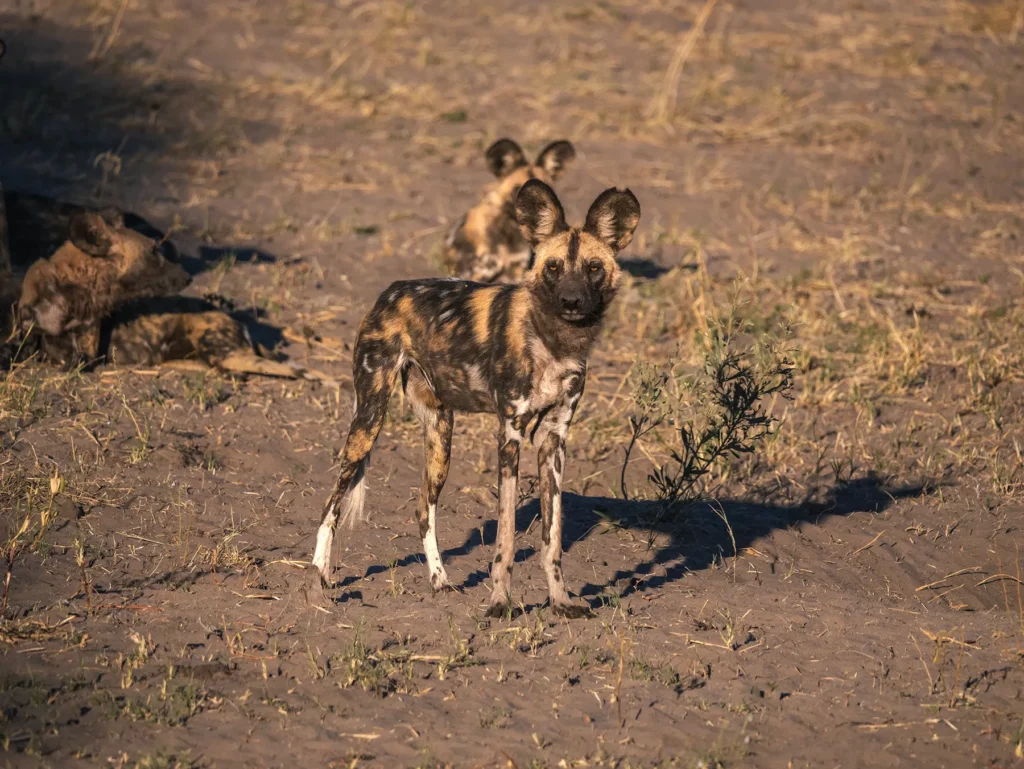
Botswana is a country like no other. 40% of the country is pure protected wilderness, with no fences in between, allowing wildlife to thrive. Over 100,000 elephants call Botswana home, that’s 25% of the entire population of African elephants in one country!
Botswana is also the best place in the world to see the critically endangered African wild dog.
Being one of the more remote safari locations in Africa, I’d highly recommend spending at least 10 days in Botswana. This allows you enough time to see the country’s safari highlights and my favourite parks and reserves in the world!
In this guide I’m giving you the perfect 10-day Botswana safari itinerary. I will provide you with everything you need to know, including costs, choosing the perfect tour operator and much more, so that you can sit back and enjoy the ultimate safari.
Botswana Safari Itinerary Map
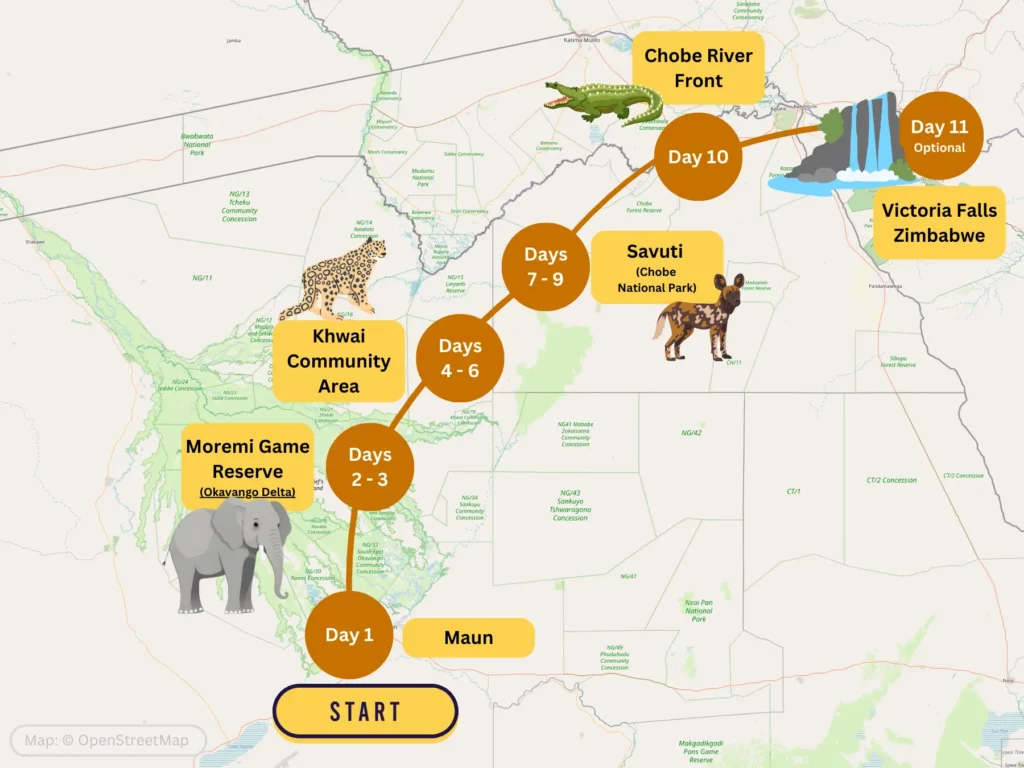
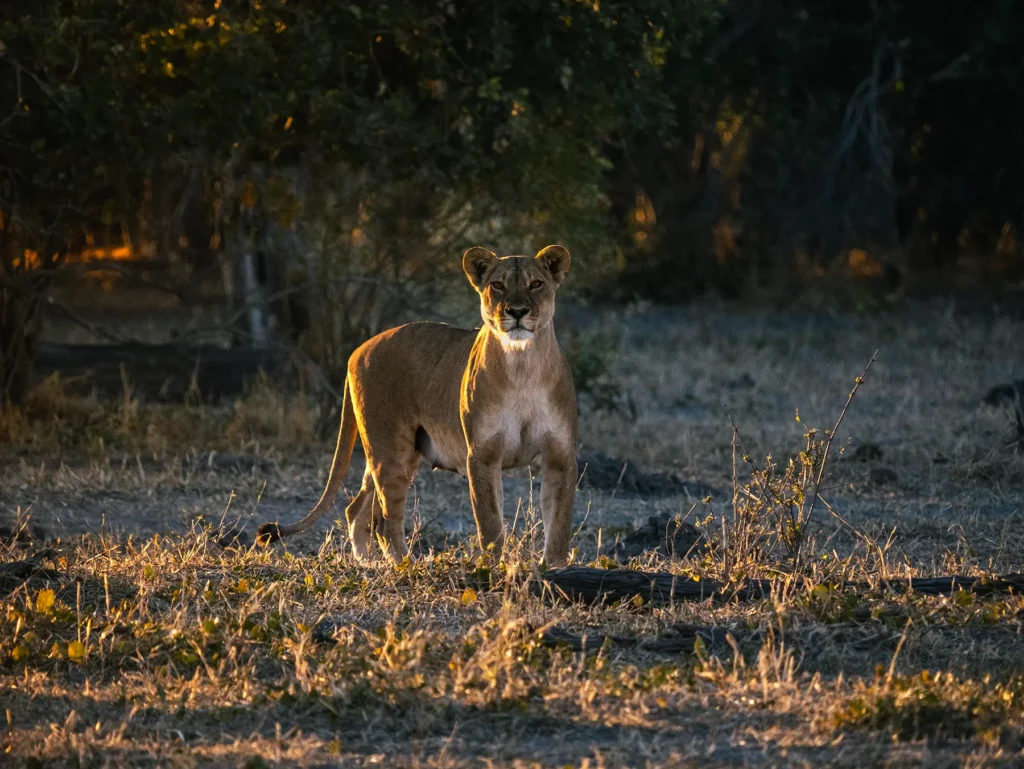
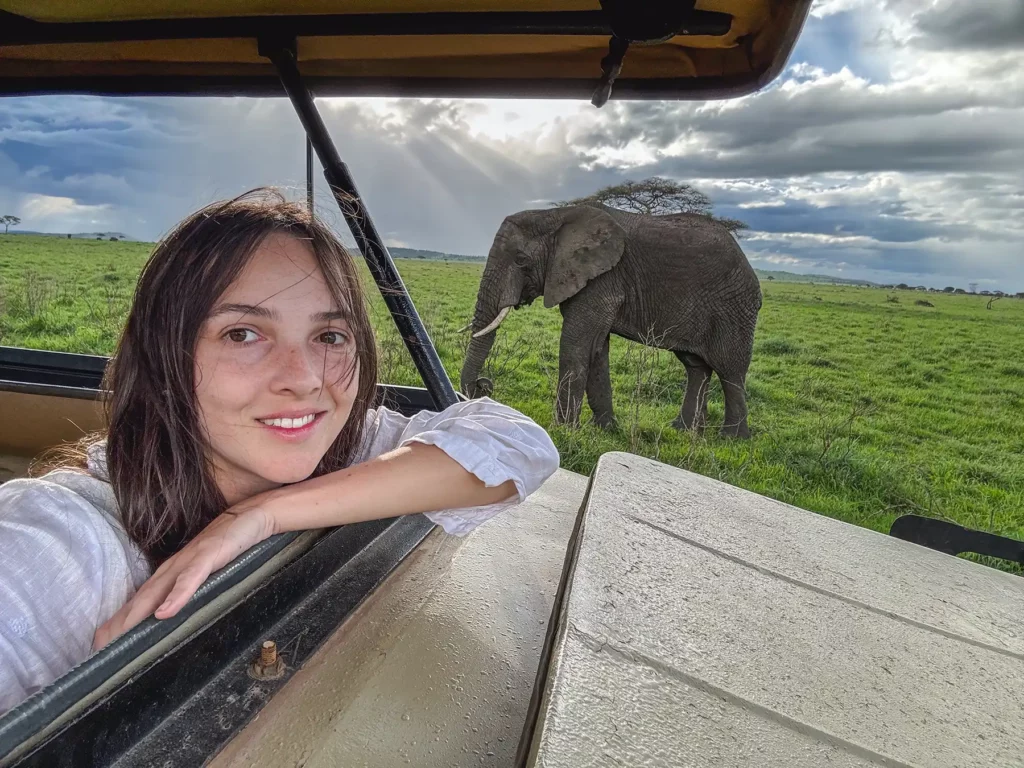
Embark on the Safari of Your Dreams
Save time and ensure an incredible safari experience by getting quotes from my recommended local safari companies
I’m here to make booking your perfect safari quick, easy and risk-free.
Join the rapidly growing tribe of over 1,000 travellers who’ve booked their dream safari using my insider tips and recommendations.

It takes under 60 seconds to fill out the form and in under 48 hours you will receive multiple, no-obligation proposals from my favourite local tour operators with glowing online reviews.
Get your free no-obligation safari quotes and my top safari tips and recommendations
In This Guide
- Why Go on Safari in Botswana?
- How to Book Your Botswana Safari
- How Much Does a Botswana Safari Cost?
- Best Time to Visit Botswana
- How Long to Spend in Botswana
- Botswana Safari Logistics
- Botswana Safari Itinerary Overview
- Day by Day Breakdown
- Day 1: Maun
- Day 2: Journey to Moremi Game Reserve (Okavango Delta)
- Day 3: Moremi Game Reserve (Okavango Delta)
- Day 4: Journey to Khwai Community Area
- Day 5 – 6: Khwai Community Area
- Day 7: Journey to Savuti (Chobe National Park)
- Day 8 – 9: Savuti (Chobe National Park)
- Day 10: Chobe Riverfront
- Day 11 (Optional): Victoria Falls (Zimbabwe)
- Final Thoughts
- Read More Guides
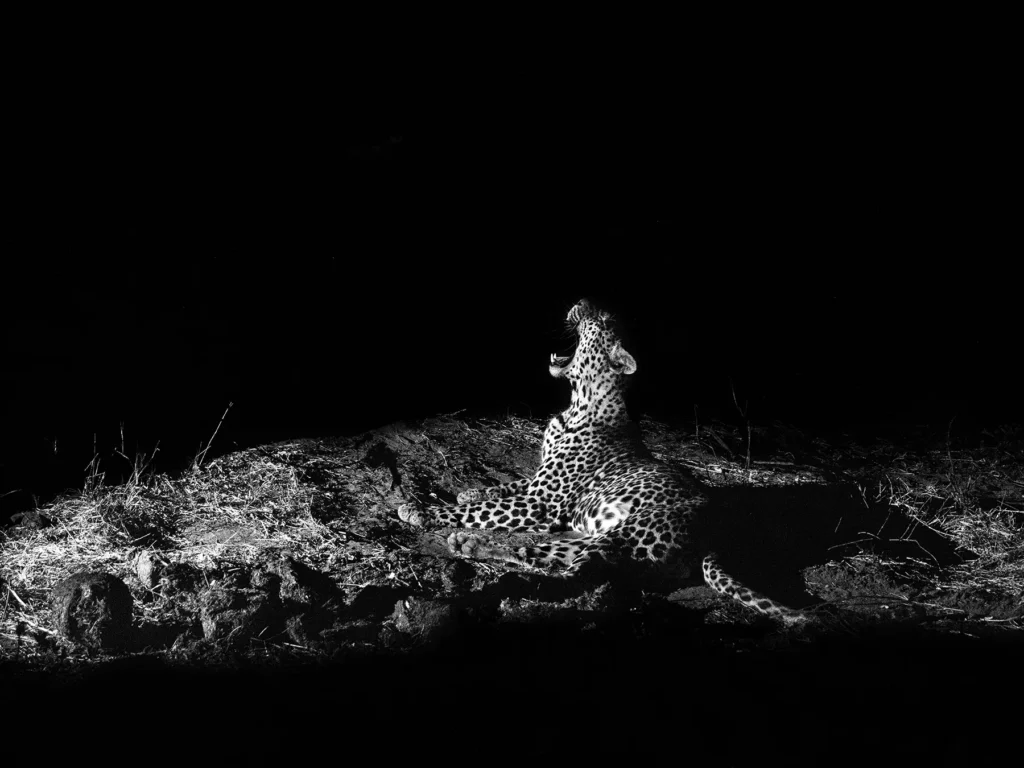
Why Go on Safari in Botswana?
Safaris in Botswana are amongst the most exclusive wildlife experiences in Africa, with a staggering diversity of habitats offering unique animal encounters and visitor activities.
Botswana operates with a low-impact high-value tourism scheme. This means that Botswana’s parks and reserves accept fewer visitors than other destinations but each visitor pays more.
The scheme has been extremely successful. The fragile ecosystem has not suffered from over-tourism and yet precious tourism revenue from the guests that do visit has funded the preservation of the parks and reserves as well as benefited local communities.
The only drawback of this scheme is that Botswana isn’t an accessible destination for all budgets.
You can see a Map of Botswana below showing the country’s key national parks and reserves.
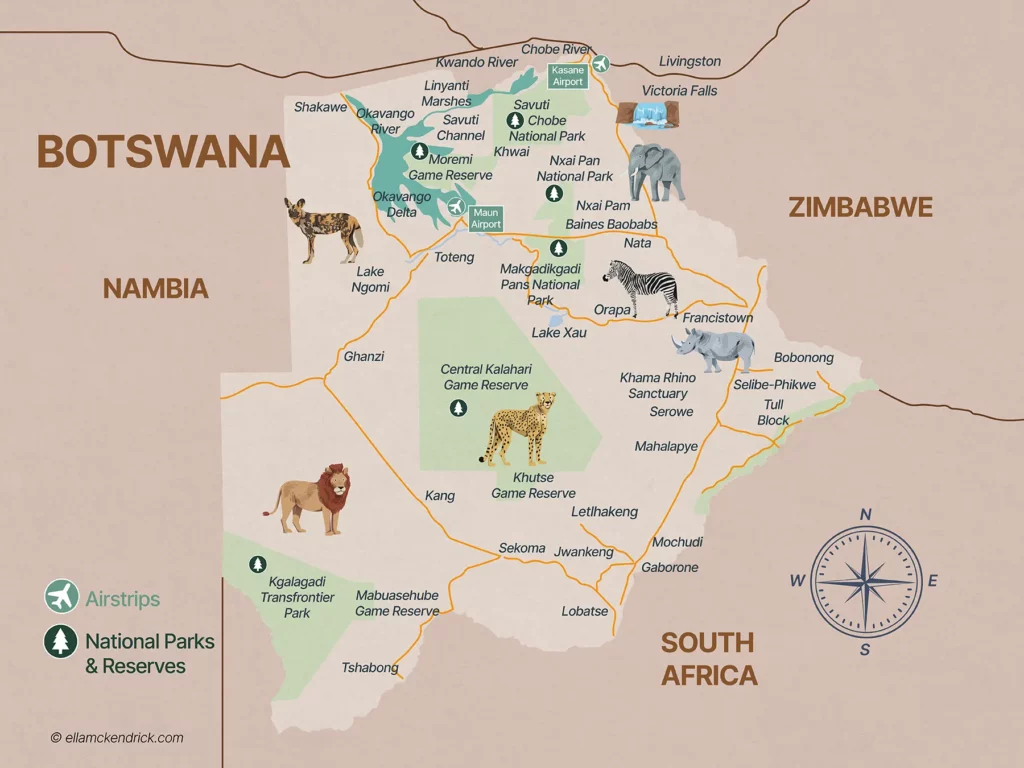
Botswana’s low-density high price tourism model is considered the gold standard for tourism and preserves Botswana’s natural environment.
Botswana is a truly unique safari destination. You can do things in Botswana that you can’t in other locations, from canoe safaris in the flooded Okavango Delta to meeting meerkats in the arid Makgadikgadi Pans.
Additionally, Botswana itineraries are quite different to safaris in Kenya and Tanzania, which often end with a few days at the beach before flying home. Botswana is a landlocked country, so safaris are the sole focus of most holidays here. As a result, experiences are high quality and expertly detailed with outstanding wildlife encounters, luxurious lodging and expert guiding.
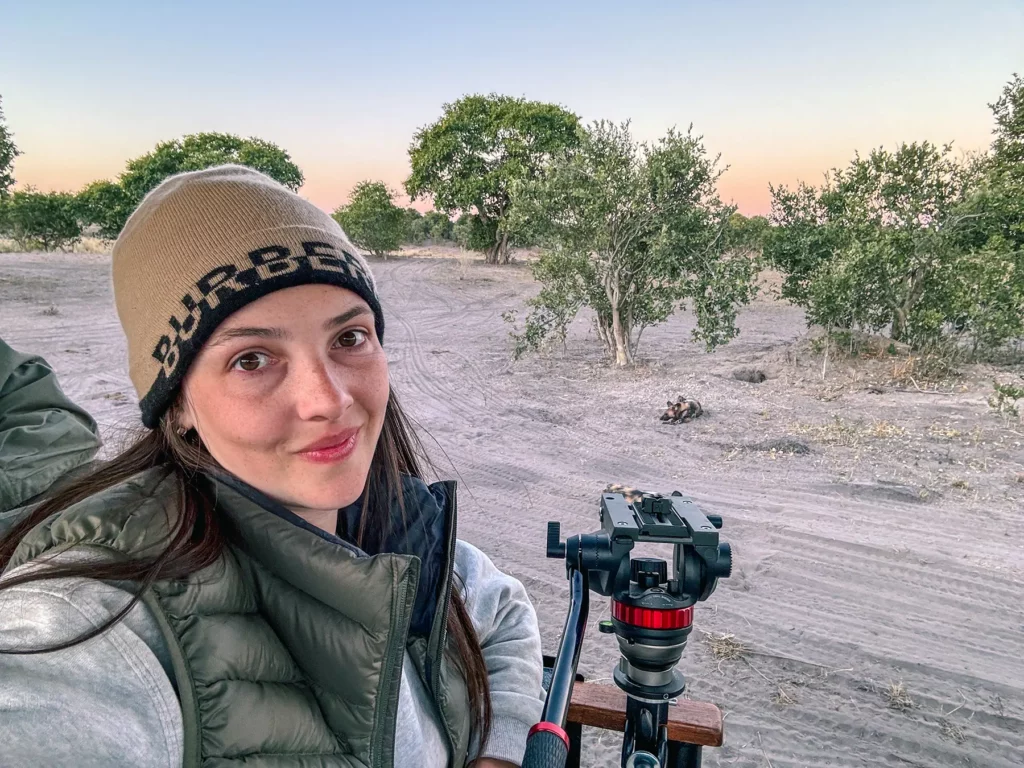
On the topic of guiding – the guiding I’ve experienced in Botswana is out of this world. I’ve had some of the best guides that I’ve ever encountered in my life. Their knowledge of the flora and fauna of their country is incredible and their tracking skills are superb. I will add here however that I’m sure not all guides are created equal so it’s important that you select the right one. I’ll provide some useful tips on selecting the perfect guide later in this article.
One of the joys of a safari in Botswana is that it feels genuinely wild. The country has a low population density, with many people living in, or within, the capital of Gaborone. There are few roads too, which means that there are vast tracts of true wilderness waiting to be explored by intrepid safari-goers.
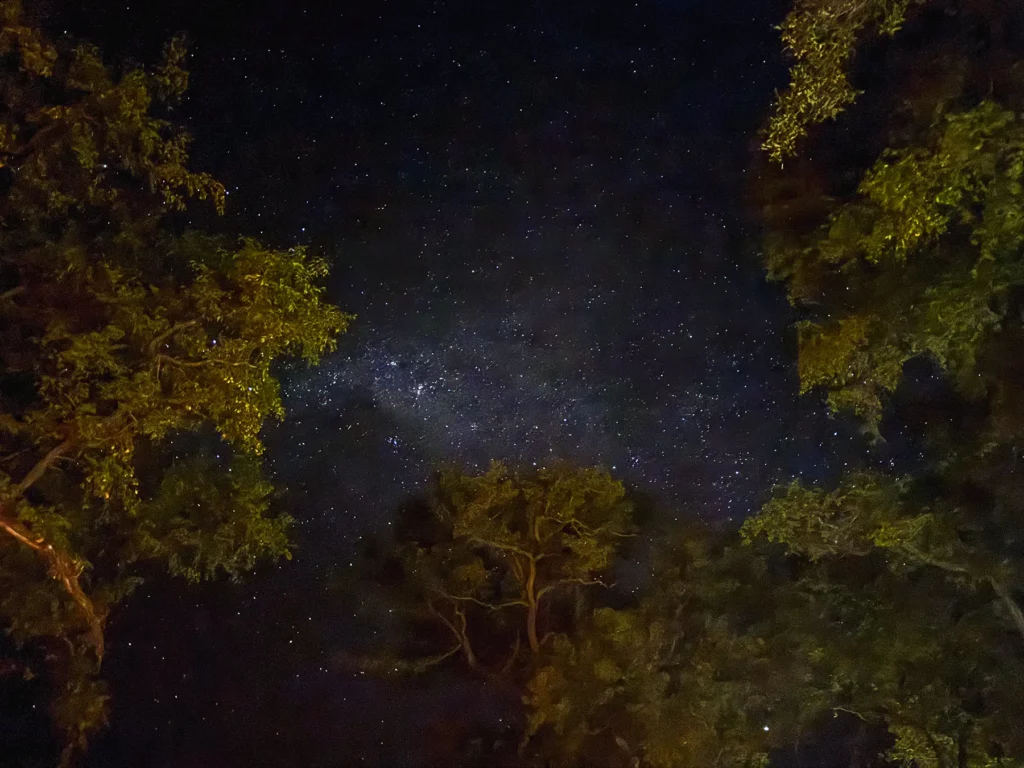
All this makes for a very exclusive experience, and although Botswana safaris can be more expensive than their counterparts in neighbouring countries, you’re getting real value here. The parks and reserves also aren’t as crowded as places like the Masai Mara in Kenya or the Ngorongoro Crater in Tanzania, so you’ll have many sightings to yourself.
The Big Five (lions, leopards, elephants, rhinos and buffalos) can all be seen in Botswana, as well as many other bucket list species like cheetahs, giraffes and hippos. The country is also home to the world’s largest elephant population, with over 10,000 individuals living here. If you want to see large herds of these magnificent mammals roaming the plains and deltas, Botswana is the place to come!
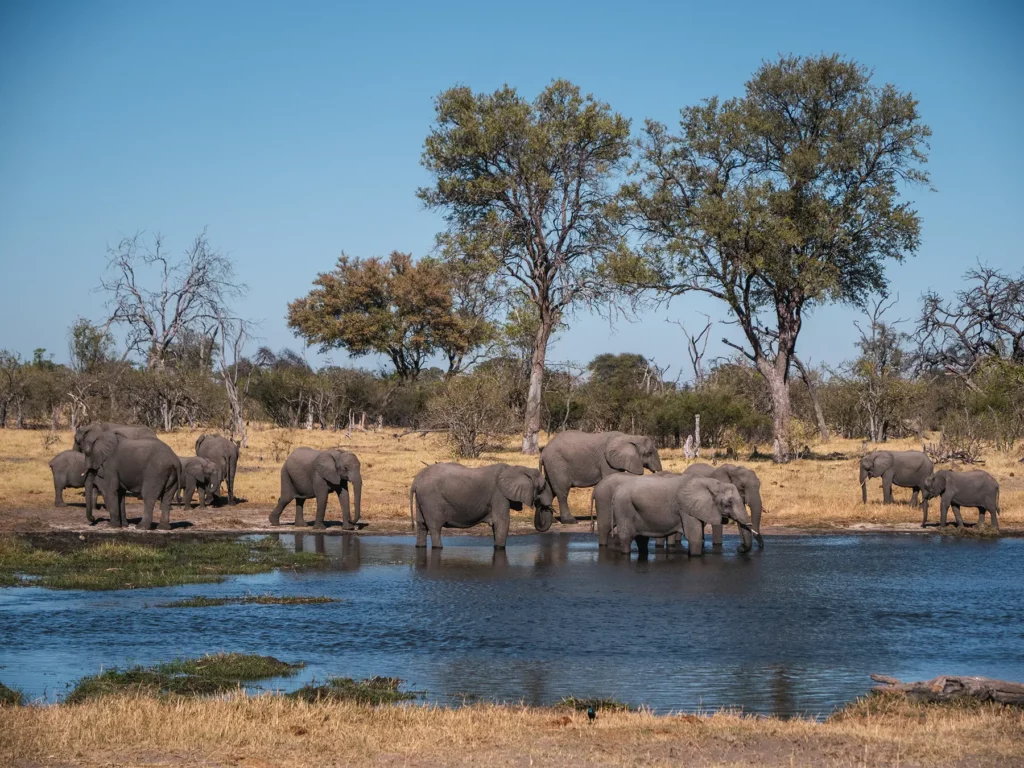
How to Book Your Botswana Safari
You have four different options when it comes to arranging your safari in Botswana. Most people book through a local tour operator or use their preferred international travel agent, both of which have their benefits.
Another option is to do fly-in hotel safaris, which can be a good choice if you’re just staying in one spot. Finally, if you’d rather be more independent, self-driving can be an adventurous way to explore.
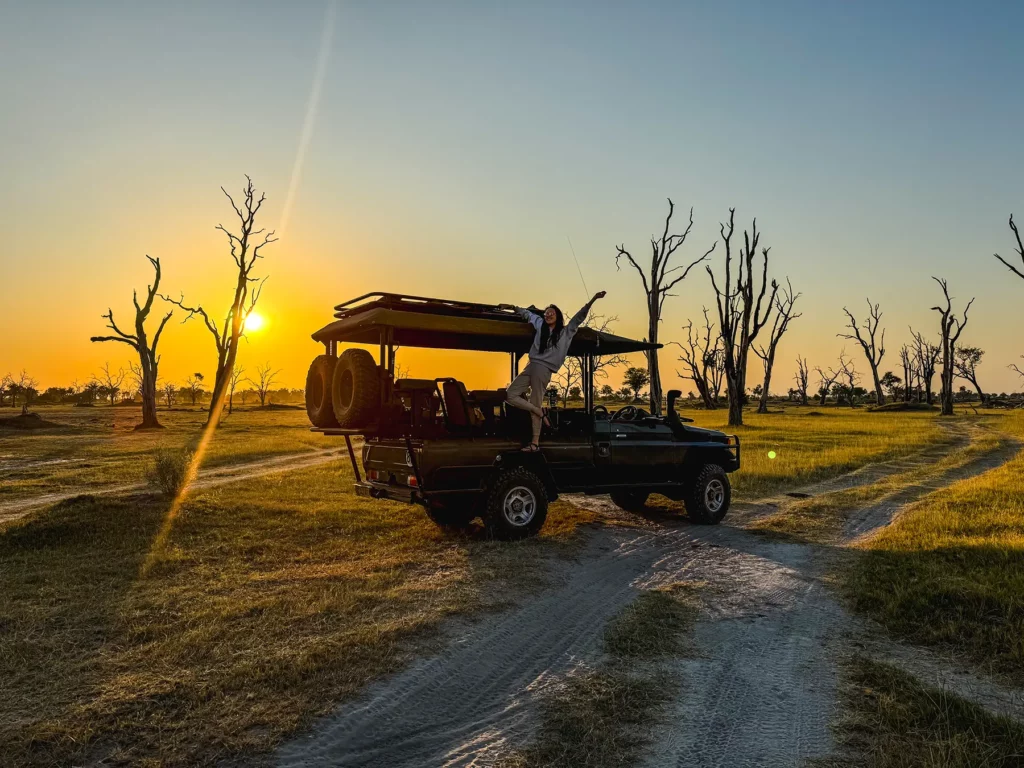
Option 1: Self-Drive Safari
Intrepid travellers can really get their teeth into a self-drive safari in Botswana, which is the perfect choice for those who want to retain total independence during their holiday. It’s easier to self-drive in Botswana than it is on safaris in Kenya or Tanzania, and this can be a cheaper way to visit what is one of Africa’s most expensive safari destinations.
On a self-driving trip, you’ll have greater flexibility with your itinerary and can tailor everything to your exact requirements. You’ll be able to spend longer in some destinations and skip others, according to your interests, and it may even be possible to change plans once you’re there if needed.
However, despite the pluses, there is one huge negative to this method of travel, and that’s not having a guide. Without a local expert, it will be far more difficult to spot the wildlife, which can make for a disappointing and sometimes frustrating experience.
On my recent trip to Botswana, I spoke to a couple who had spent 30 days self-driving and still hadn’t seen any wild dogs or leopards – two of the main draws to the country. Yet we saw the dogs on three separate occasions in just 10 days, as well as three leopards, and that’s because we had a guide with us.
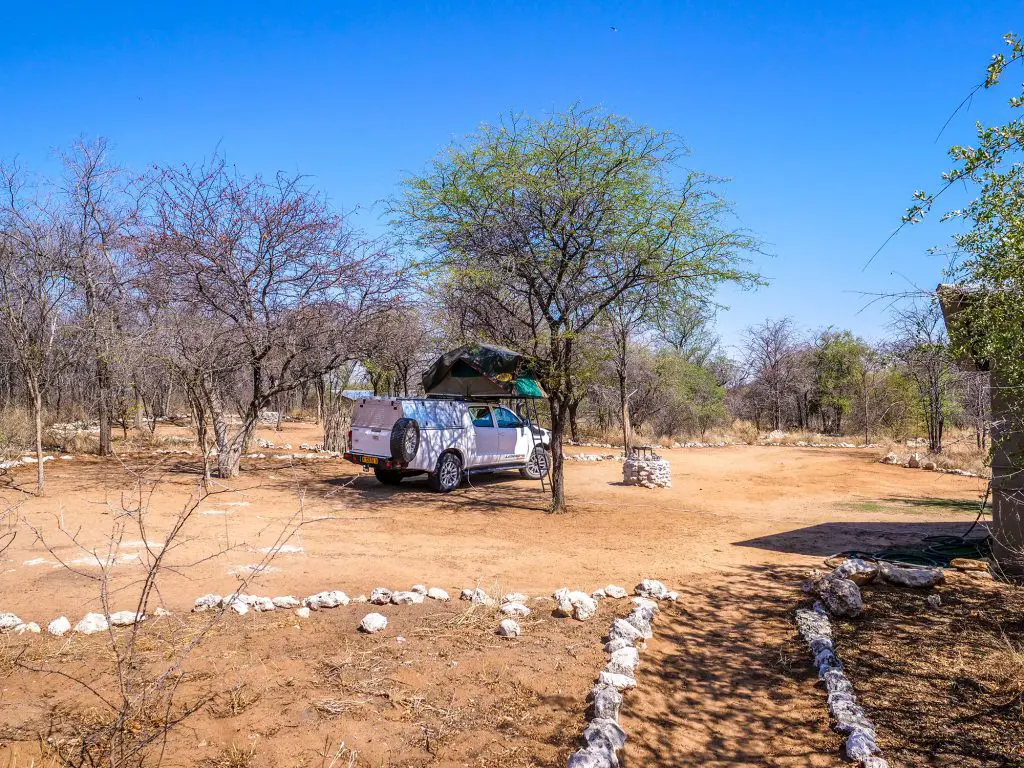
Another drawback of not having a guide is safety. Wild animals can be unpredictable and if you don’t understand their behaviour, you could get into a sketchy situation. Elephants in particular pose a threat to self-drivers and there sadly have been multiple incidents of self-drivers getting into trouble with elephants with terrible consequences in 2024 alone as a result of ignoring park rules and understanding elephant distress signs (they tend to mock charge before charging).
Self-driving isn’t always as cheap as you might think either. You have to factor in the cost of hiring a vehicle that’s suitable for off-road driving, as well as things like insurance and park entry fees. Navigation can also prove stressful, which distracts from the overall safari experience and your enjoyment of the trip.
Additionally, you won’t be eligible for the cheaper rates that hotels and lodges offer tour operators, which means you’ll probably end up paying more for your accommodation than you would if you had booked a package.
So, while self-driving in Botswana is a totally doable way to go on safari, it’s not something I really recommend. You’ll get far more out of a safari if you have a guide with you and may end up saving money too by booking with an operator rather than going it alone.
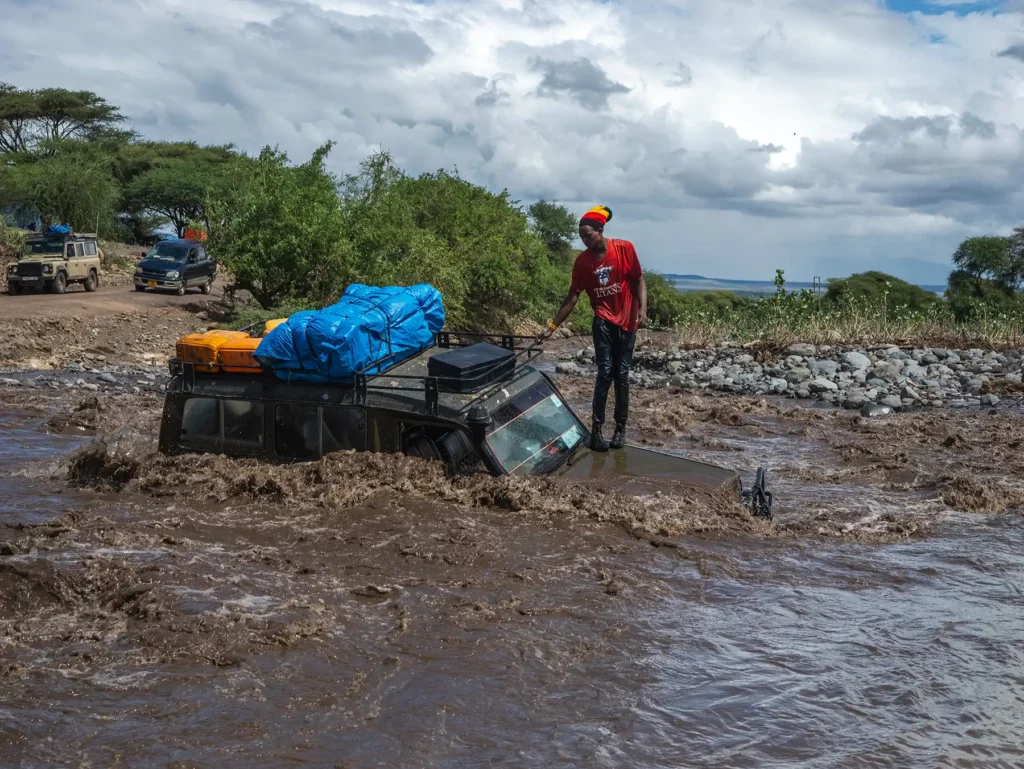
How to Book a DIY Self-Drive Tanzania Safari
- Option 1: Comparison sites which provide multiple quotes from verified suppliers such as Safaris By Ella. Make sure to write you want to self drive in the notes when requesting a quote. (This is a hybrid approach where you’ll drive yourself but they will arrange everything)
- Option 2: Research and book all elements of the trip yourself using Google and online travel agents.
Join the rapidly growing tribe of over 1,000 travellers who’ve booked their dream safari using my insider tips and recommendations. Get your free quotes and my top tips and recommendations now.
Option 2: Local Tour Operator
Booking with a local tour operator is always my preferred choice when going on safari in Botswana. These companies are best placed to provide a truly memorable holiday because they’re the ones who know these areas like the backs of their hands. Choose a private tour if you’re able, as these allow more personalised planning and flexibility.
Local operators will arrange all the ground elements of your stay, including accommodation, activities, food, transport, and park fees. All you need to do is organise your international flights, which can easily be done online or through an agent.
You’ll also get great value for money by arranging your trip through a local provider. Unlike international travel agents, local companies don’t have huge markup costs, thereby keeping the price of a safari to a minimum.
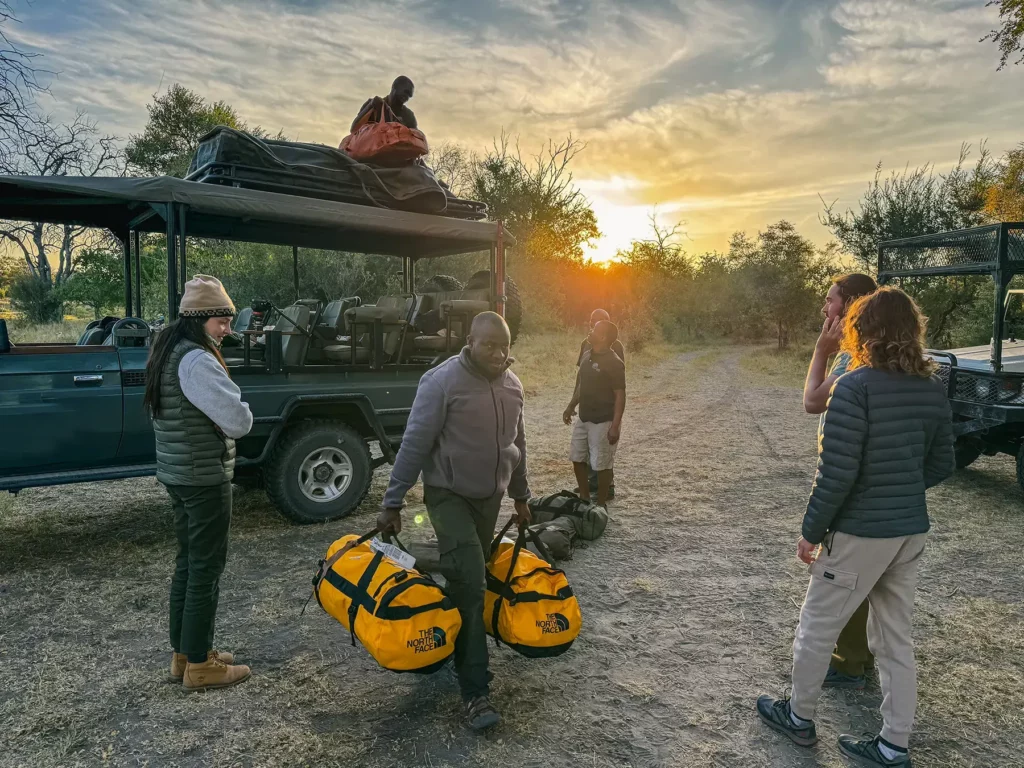
Local tour operators in Botswana typically offer three types of safari. The most entry-level type is a basic camping safari where you travel around and sleep in ground tents within the reserve. You also are involved in the setting up and packing up of camp.
The next level up is what’s known as glamping or luxury camping – this mobile safari involves sleeping in larger tents with comfortable beds and even an en suite. They are often non-participatory and so the tents are prepared for you and looked after by friendly staff members. The final option is a safari where you stay in lodges.
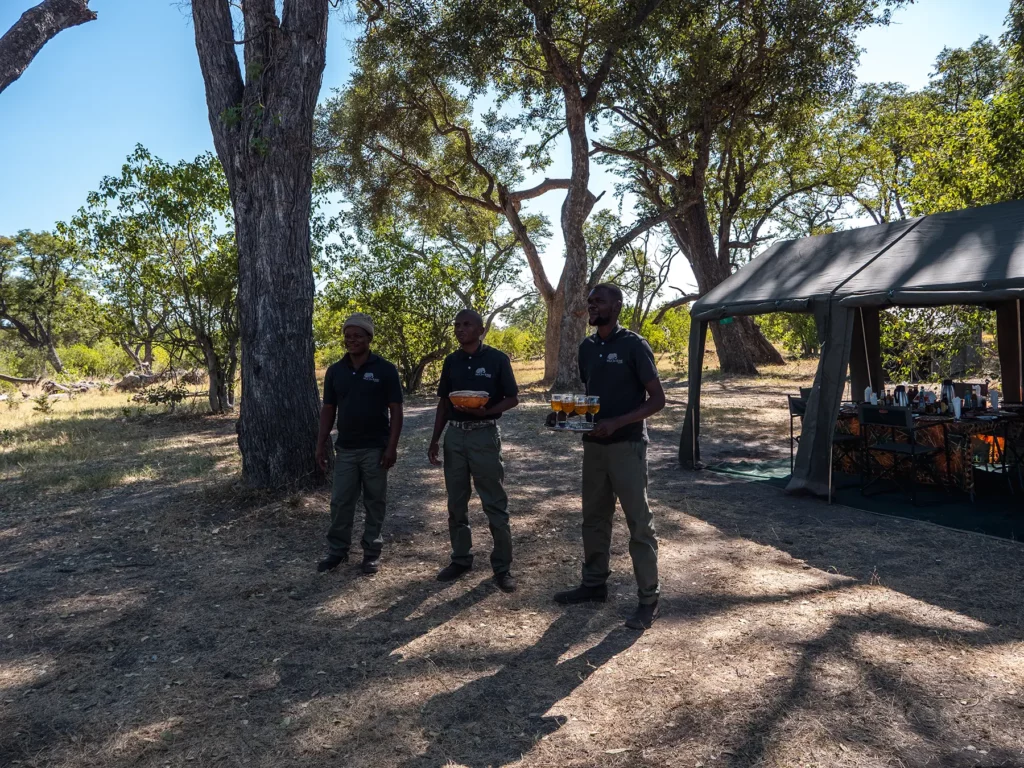
If you want a professionally tailored itinerary that doesn’t cost the earth and takes you to some of the best locations in Botswana, then booking with a local operator is the way to go. Just make sure you check out reviews so you know you’re getting the standard of service that you expect – Google Reviews is a great place to start.
I always book my Botswana safaris through local tour operators and have had some incredible experiences. You can request quotes from the exact same companies who I used and had an amazing experience with here on Safaris By Ella.
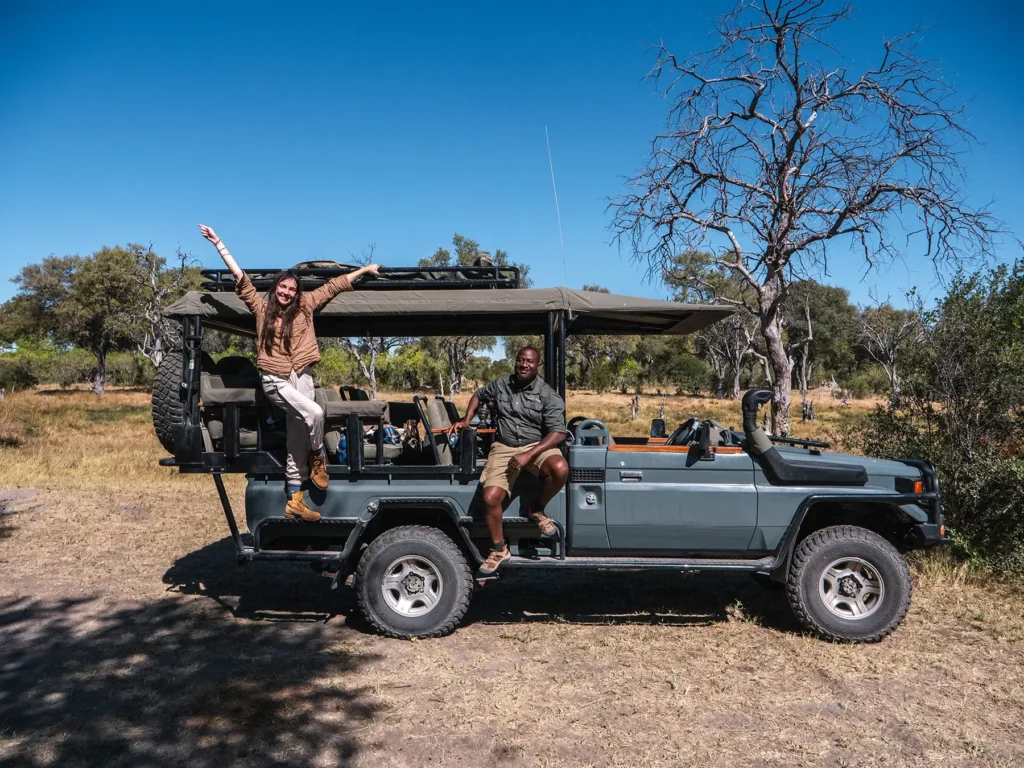
How to Book with the Best Local Safari Companies
- Comparison sites which provide multiple quotes from verified suppliers such as Safaris By Ella
Join the rapidly growing tribe of over 1,000 travellers who’ve booked their dream safari using my insider tips and recommendations.
Option 3: International Travel Agents
Some travellers like to use international travel agents to book their Botswana safaris. Maybe you use the same agent for all your holidays abroad, and like the peace of mind that they bring. It’s an easy way to arrange your trip, and bookings usually come with good financial security, so you feel confident placing your booking.
Yet this can be an extremely expensive option, as travel agents often have high overheads – costs which are passed on to the customer. You also won’t benefit from all the insider knowledge that local operators have, and agents often try to sell you holidays that make them the most profit, rather than the ones that you’ll perhaps enjoy more.
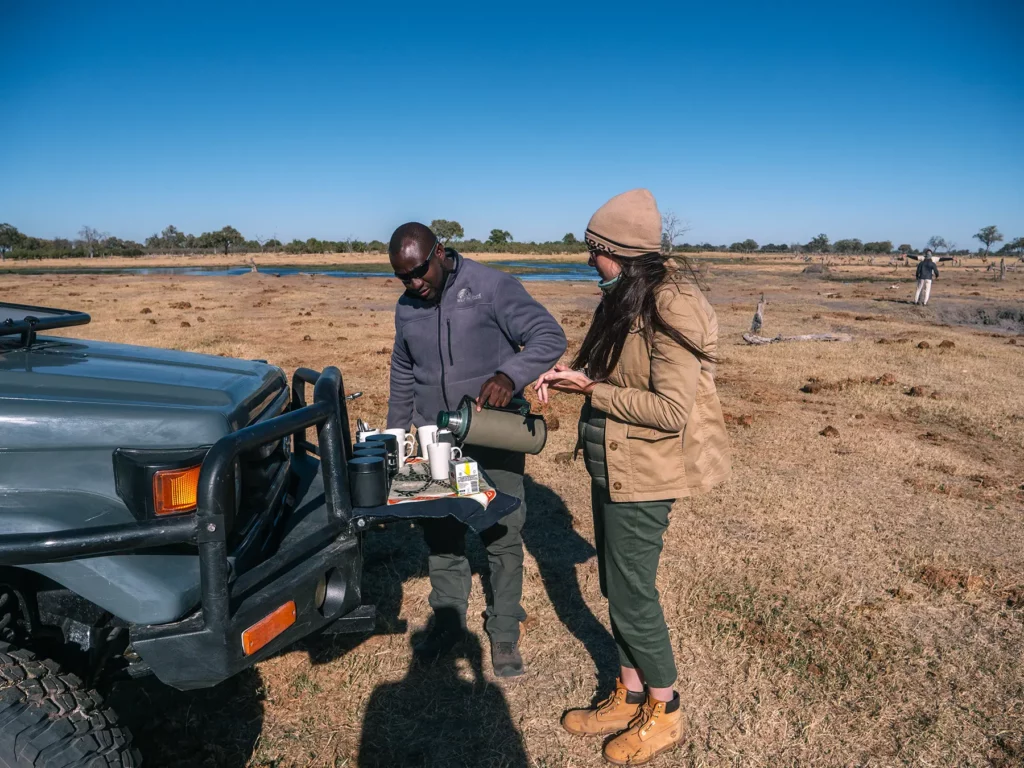
Of course the international agent outsources the actual safari to a local company or lodge to carry out. Therefore, you’ll have pretty much the same experience whether you travel with an international agent or directly either through a local operator or local lodge. The main difference will be the price, which is far greater through an agent. So, save yourself some money, and book local.
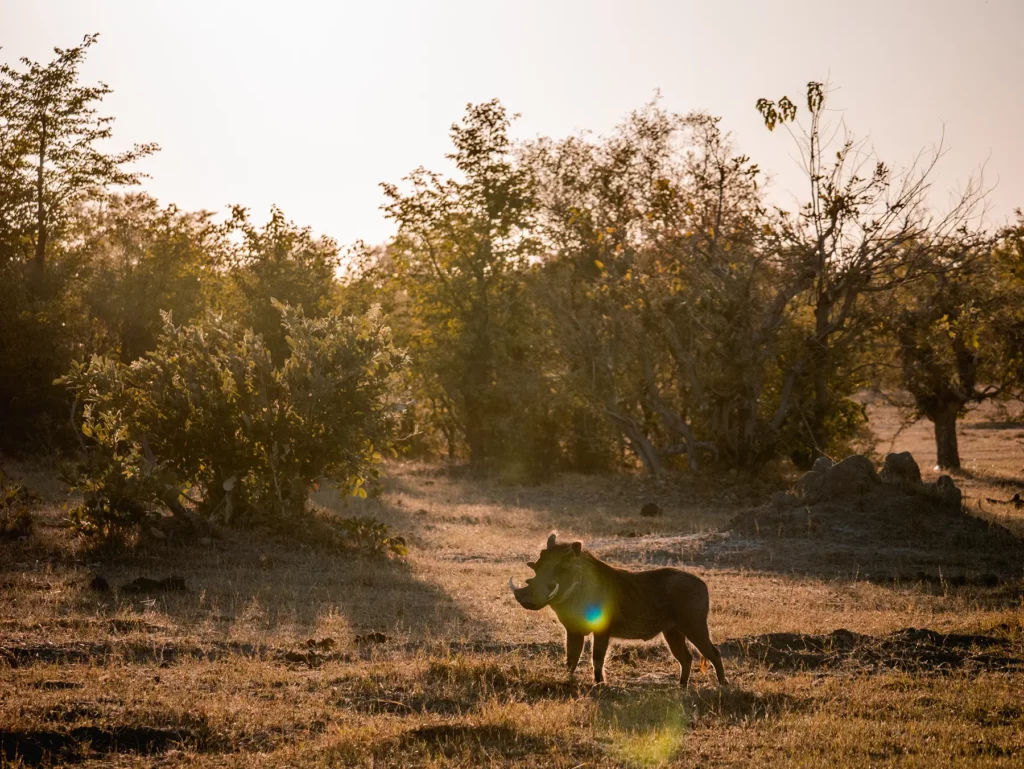
How to Book Your Safari with an International Travel Agent / Safari Company
- Comparison sites which provide multiple quotes from verified suppliers such as Safaris By Ella. When you select a luxury budget on the quote request, you will receive a quote from my recommended International safari company as well as my recommended local companies for comparison.
Join the rapidly growing tribe of over 1,000 travellers who’ve booked their dream safari using my insider tips and recommendations.
Option 4: Fly-In Hotel Safaris
If you’re going to be based in just one place on your safari in Botswana, then it can be worth considering the fly-in hotel option. This means that you just book the accommodation directly, and then add on other elements as and when you require them. The lodge bookings also typically come with shared game drives.
Many hotels will offer activities that can be booked directly on an ad-hoc basis. Some will need to be arranged in advance, but others you may be able to organise whilst you’re at the hotel to keep things flexible. If you’re not sure what you’ll feel like doing, this can be a good option.
Transfers from airstrips and cities can also be arranged through your hotel, although these will cost extra, and prices will often be at a premium. Costs can mount up if you’re visiting multiple places, so do bear that in mind.
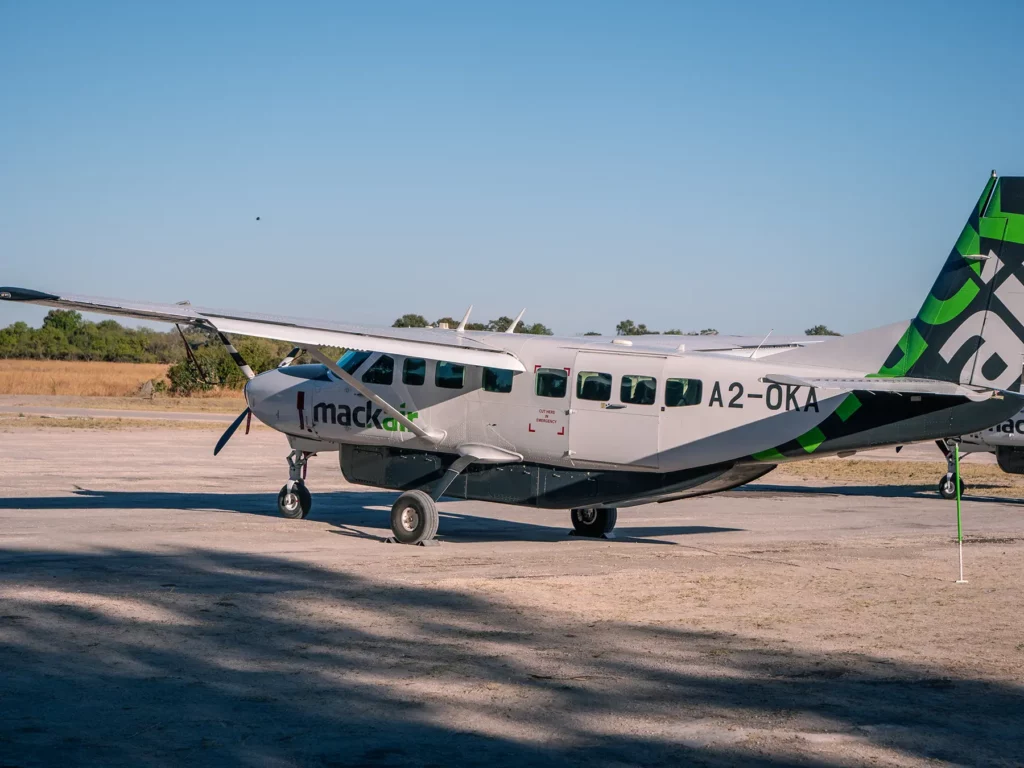
Fly-in hotel safaris in Botswana are a flexible option, but they can work out very expensive when compared to buying a package. This is particularly true if you’re intending to visit more than one destination.
The lodges in Botswana are some of the most expensive in the world. Prices start from around $1,000 per person per night and go up to a staggering $7,000 per person per night depending on which lodge you choose.
Despite paying premium prices, you’re not guaranteeing yourself the best safari experience. Your game viewing vehicle will most likely be shared with other lodge guests, meaning you’ll all be jostling for the best views at sightings. Furthermore, you will likely all have different preferences on what to see. Perhaps you’re keen to find an elusive leopard but other guests are more interested in spending time with elephants.
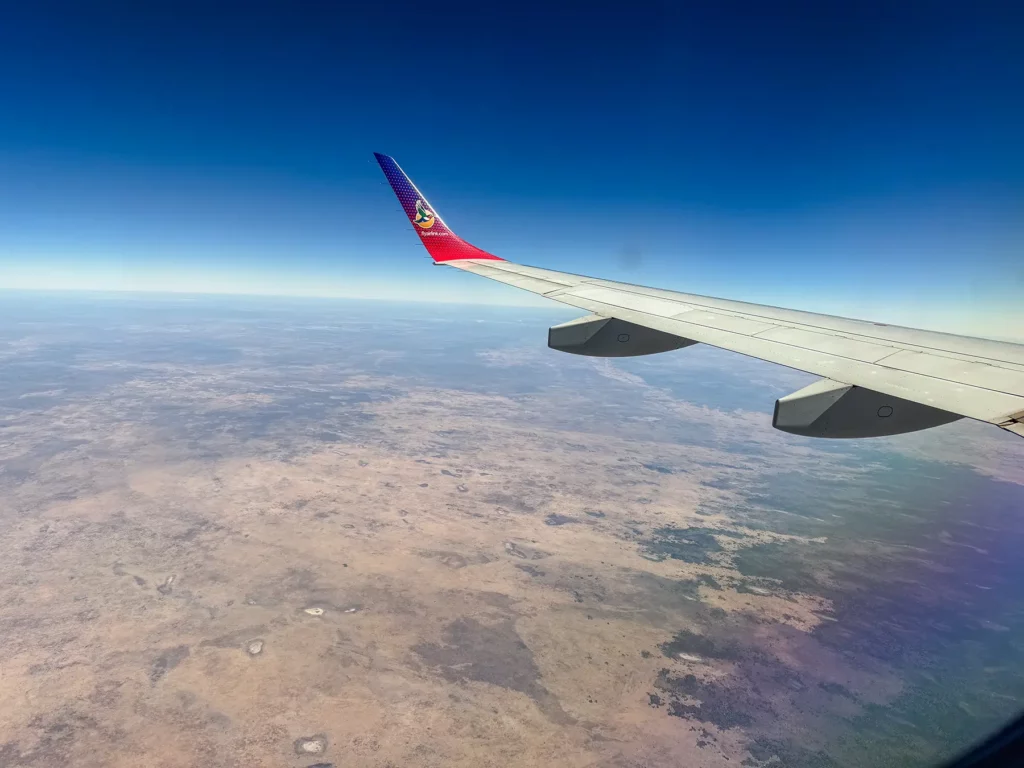
Additionally, as you’re typically only staying at one lodge for two or three nights, your guide never gets the chance to understand your safari preferences and can’t tailor the safari to your needs.
My guide on my most recent trip to Botswana (who now runs his own local safari company) used to work at one of Botswana’s most prestigious lodges. He informed me that it was stressful working as a guide for a lodge as they felt the need to show guests as many animals as possible in a short period of time, as that’s all the time they have.
He told me he much prefers his new set-up where he spends days with the same guests as it allows them to spend more time at sightings (no FOMO when you have multiple days) and drive at a slower pace which allows you to enjoy nature more.
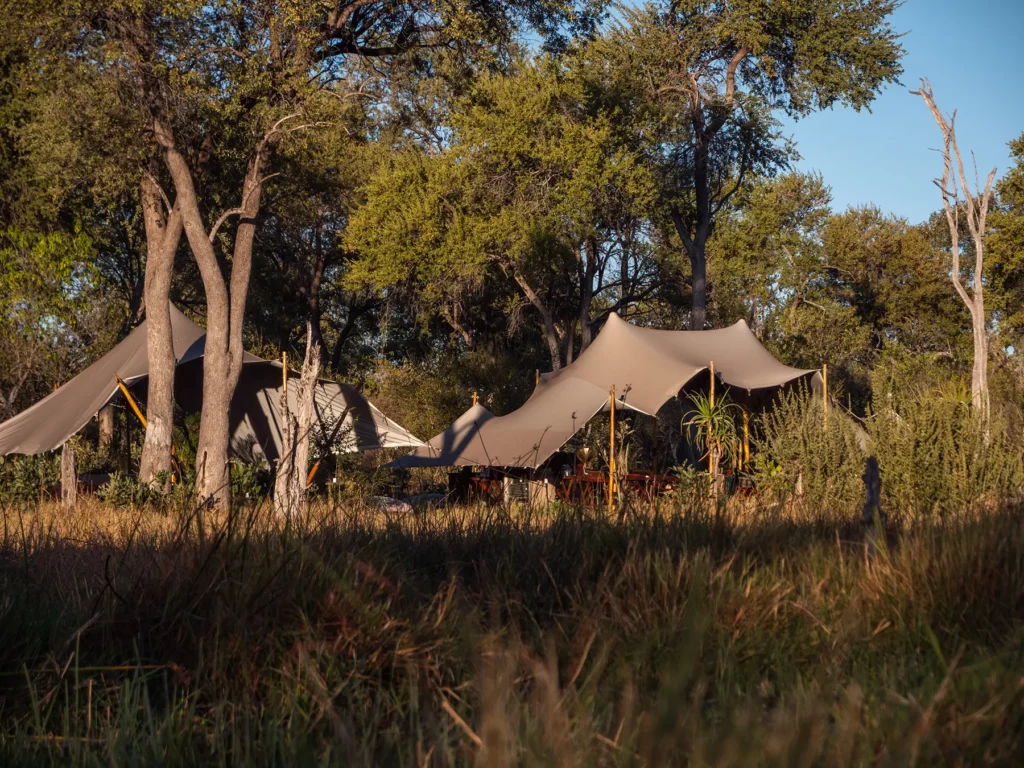
How to Book a Hotel-Provided Safari
- Option 1: My recommended tour operators on Safaris By Ella can arrange hotels and air or road transport to and from the hotels. If you opt for the more cost-effective road transport, since they have driven you to the hotel, you might find it cheaper to use the safari company for safaris rather than using the hotel-provided safaris.
- Option 2: Check with your chosen accommodation whether they provide this service and the booking requirements.
So, what is the best way to book a safari?
Your budget and personal travel preferences will determine the best way to book a Botswana safari.
However, using a local tour operator is easily the stand-out option, with lower costs, insider knowledge, and personalised itineraries.
Recommended Booking Options For Your 10-Day Botswana Safari Itinerary Itinerary
Safari with local tour operator
Most popular & best experience – typical prices for this itinerary start from $400 per person per day.
Visit safarisbyella.com for free quotes from trustworthy local tour companies I use to book my own trips.
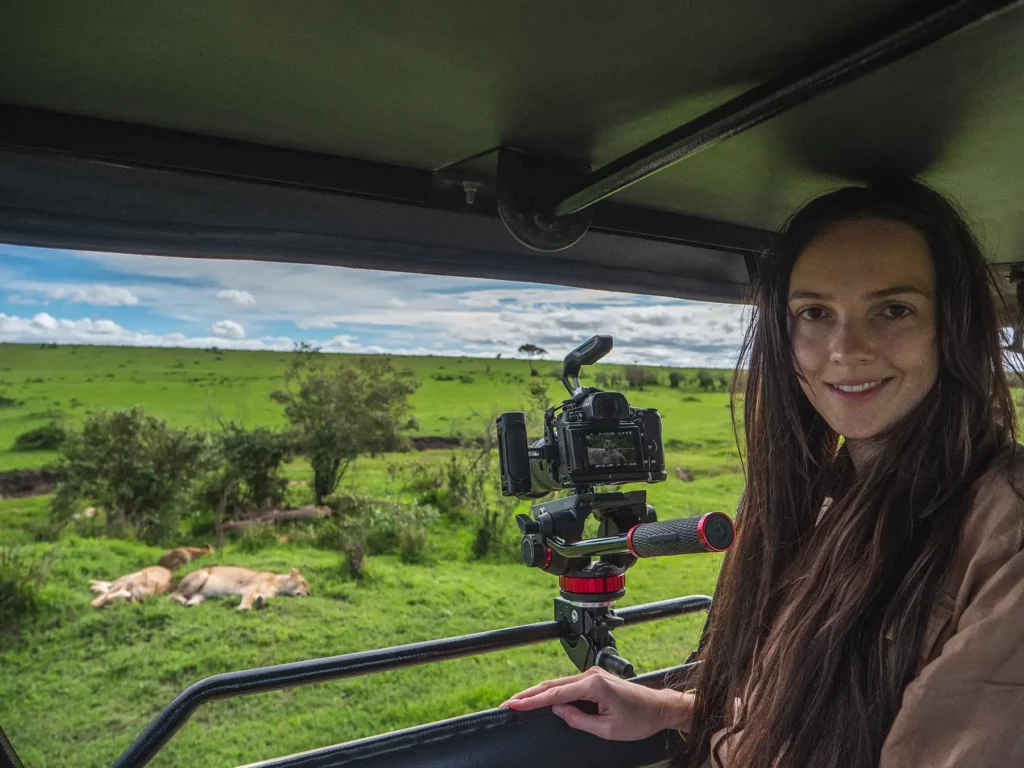
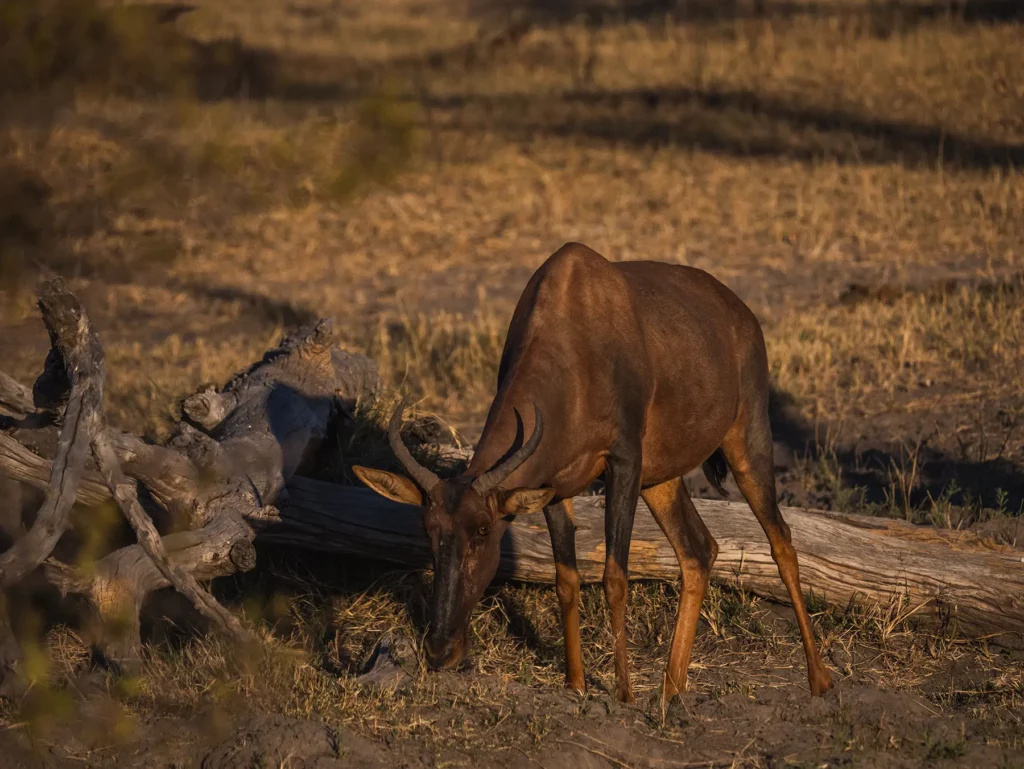
How Much Does a Botswana Safari Cost?
Compared to other safari destinations such as Kenya and Tanzania, Botswana is more expensive. In fact, Botswana is the most expensive safari destination on the African continent.
Typical prices for a private safari in Botswana start at $500 per person per day. This is $200 higher than the starting price for a private Tanzania or Kenya safari.
Shared group safaris in Botswana start at around $400 per person per day.
These prices include your park fees, accommodation, meals on full board, all beverages (including alcoholic drinks), transport, driver guide, all activities (often including mokoro trips and boat cruises) and unlimited game drives. Prices exclude international flights, tips & gratuities.
I’ve created a chart below to give you an idea of costs for various luxury levels.
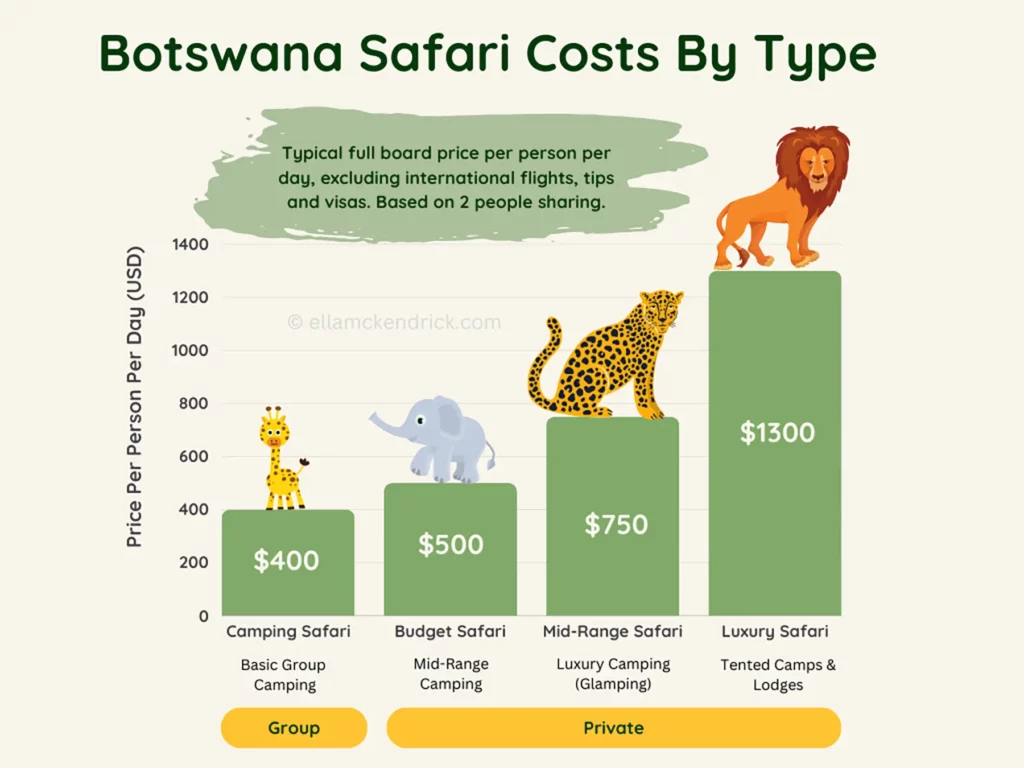
The higher prices are as a result of Botswana’s low-impact high-value tourism scheme where they encourage less tourism to reduce damage to the ecosystem whilst still trying to keep income high. The remoteness of the parks and reserves also adds to the costs.
There is a huge benefit however to the increased costs and that’s fewer visitors at wildlife sightings. Many times you will have fantastic sightings entirely to yourself!
For luxury mobile tented camps with a comfortable bed and en suite bathroom (glamping), prices start from $650 per person per day.

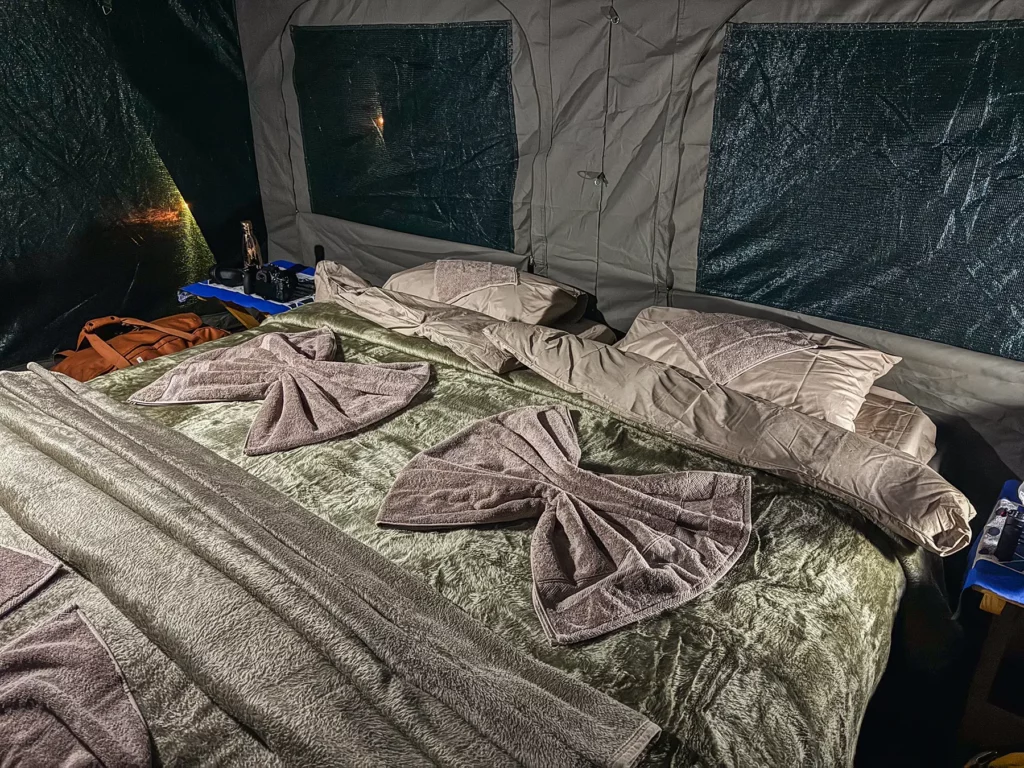
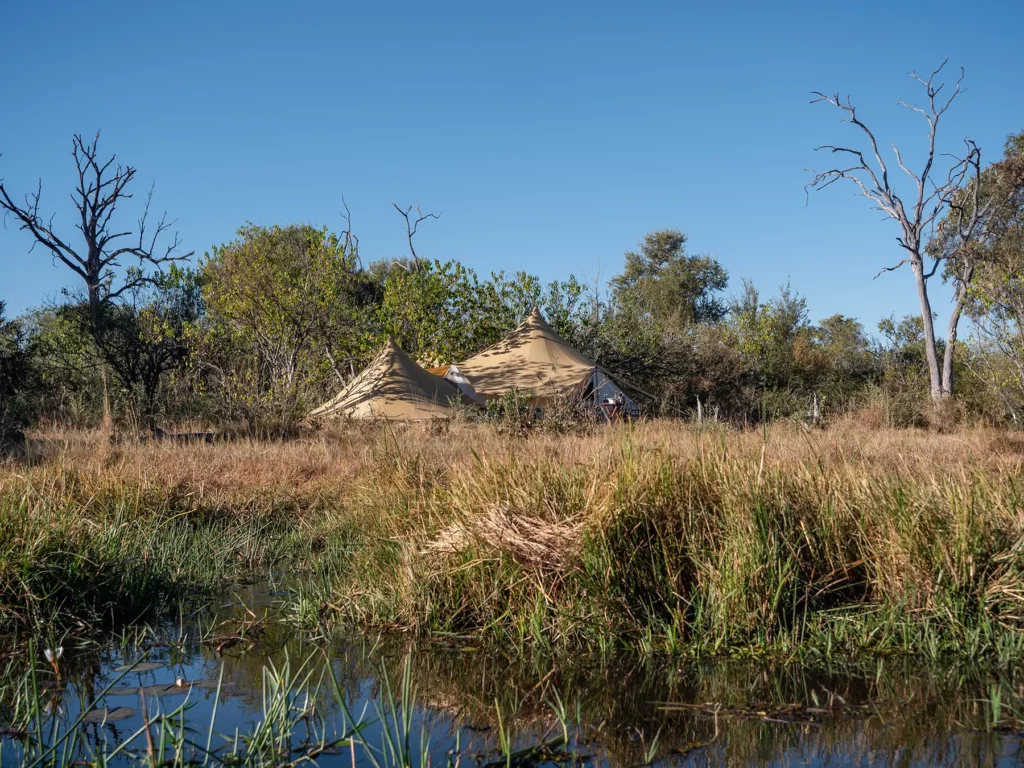
Prices go up drastically if you upgrade from a camping safari (either budget or glamping) to a lodging safari. This is when the base-line price becomes $1,000 per person per day with some luxury lodges as much as $7,000 per person per day.
Botswana Safari Cost Breakdown
As you can see from the costs breakdown graphic below, in Botswana over 59% of your money goes on accommodation and your safari vehicle, fuel and driver guide. Add another 15% for park and concession fees and that takes you up to about 74%.
Park & Concession fees assume a mid-range safari where you’ll be staying in a luxury mobile tented camp which requires quite increased overnight concession fees to be paid by the safari company vs basic camping.
This leaves 3.4% for bank fees and 13% goes to safari company overheads such as insurance & office support staff, leaving around 9% as their profits for organising everything.
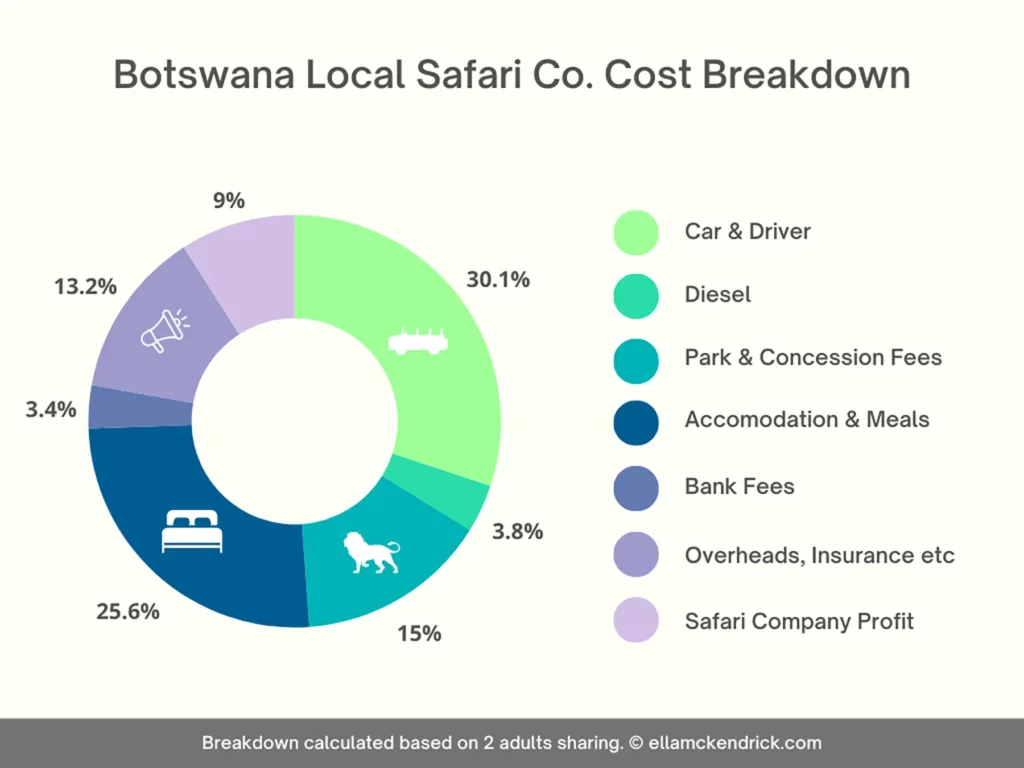
Compared to Kenya and Tanzania safari costs, more money is attributed towards accommodation and car and driver guide costs. This is because the accommodation is more expensive in Botswana due to their low impact tourism model and the safari trucks tend to be higher specification and more expensive.
The driver guides are higher-paid in Botswana as it’s a richer country and they are often, in my experience, very knowledgeable and well educated.
Entrance fees to the parks and reserves in Botswana are quite a bit lower cost than Kenya and Tanzania which helps off-set some of the other higher costs.
Park entry fees are a minor cost at around $10 per person per day plus a nominal vehicle fee of up to $5 per day for a foreign vehicle.
Overnight concession fees ranges from $30 to $75 per person per night for basic camping and can increase to as much as $100 per person per night for luxury camping (aka a mid-range safari) where the safari company rents a private camp site to allow for plenty of room and privacy to set up a luxury mobile tented camp.
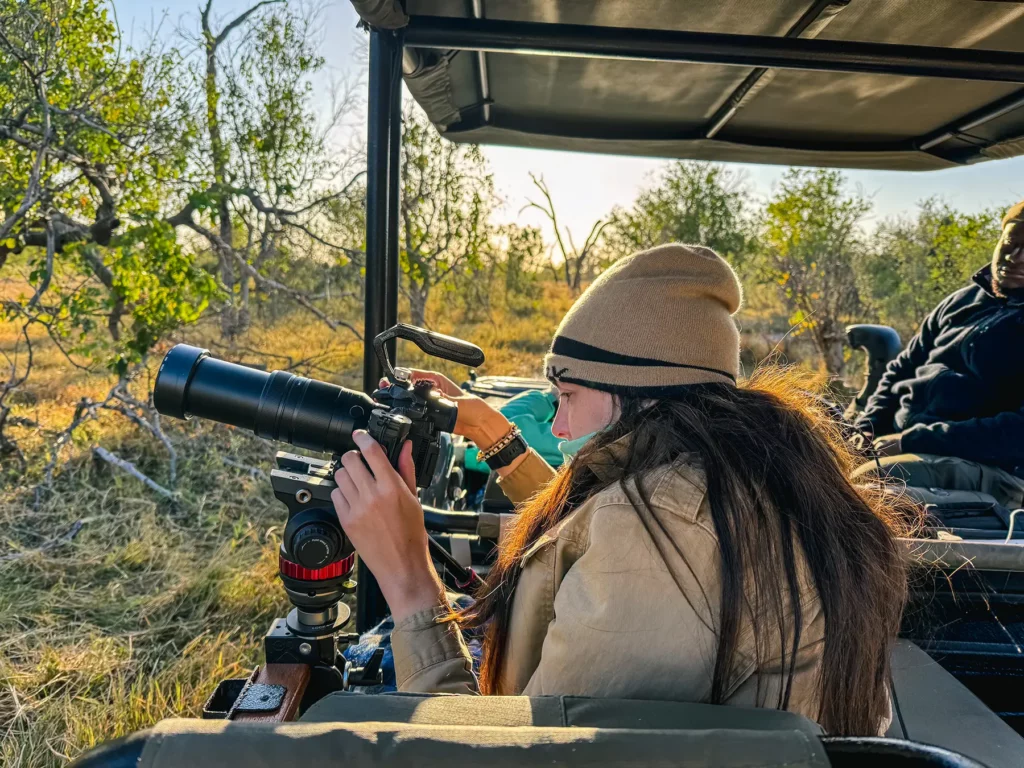
Factors Affecting Botswana Safari Cost
Which month of the year that you choose to visit will significantly impact the cost of your safari. June to the end of October is classed as peak season and so you can expect to pay higher rates whereas November to the end of May will be cheaper. I’ve found that some lodge prices fluctuate by as much as 50% depending on when you choose to visit.
The next biggest factor is the type of accommodation you choose which can vary from $100 per person per day for DIY camping through to $650 per person per day for mobile luxury tented camps though to $1,000 – $7,000 for luxury semi-perminent lodges and tented camps.
The final major variable with costs is the number of people in your group. Solo travellers in on a private safari can sometimes pay as much as 50% per person more than a couple. When you have two people all the fixed costs such as the driver guide and vehicle and room or tent are split between two people or more in the case of bigger parties.
Prices vary depending on which park you are visiting and which site you are in.
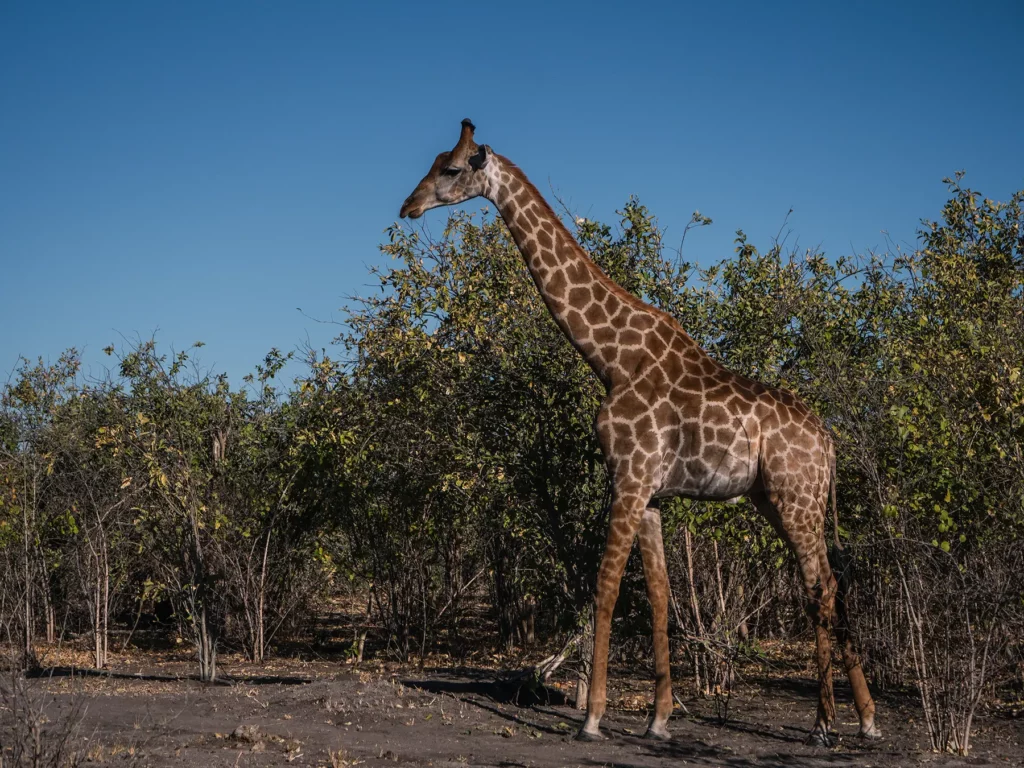
Best Time to Go on Safari in Botswana
You can enjoy safaris in Botswana all year round, with the different seasons offering their own unique wildlife experiences. Consider your budget, and what you want to see and do to pinpoint the best time for your Botswana safari.
Many people come to Botswana during the dry season, which runs from May to September. Temperatures are warm (between 22°C and 35°C), the skies are often sunny, and the sparse vegetation makes wildlife viewing easy. Animals tend to gather around the remaining water sources, so your chances of spotting them are high. This is, of course, peak season which is reflected in the prices of lodging and tours.
This is the best time of year to see African wild dogs as they typically den at this time of year, fixing them to one location. At other times of the year they can be extremely tricky to find as they travel such vast distances and have huge territories.
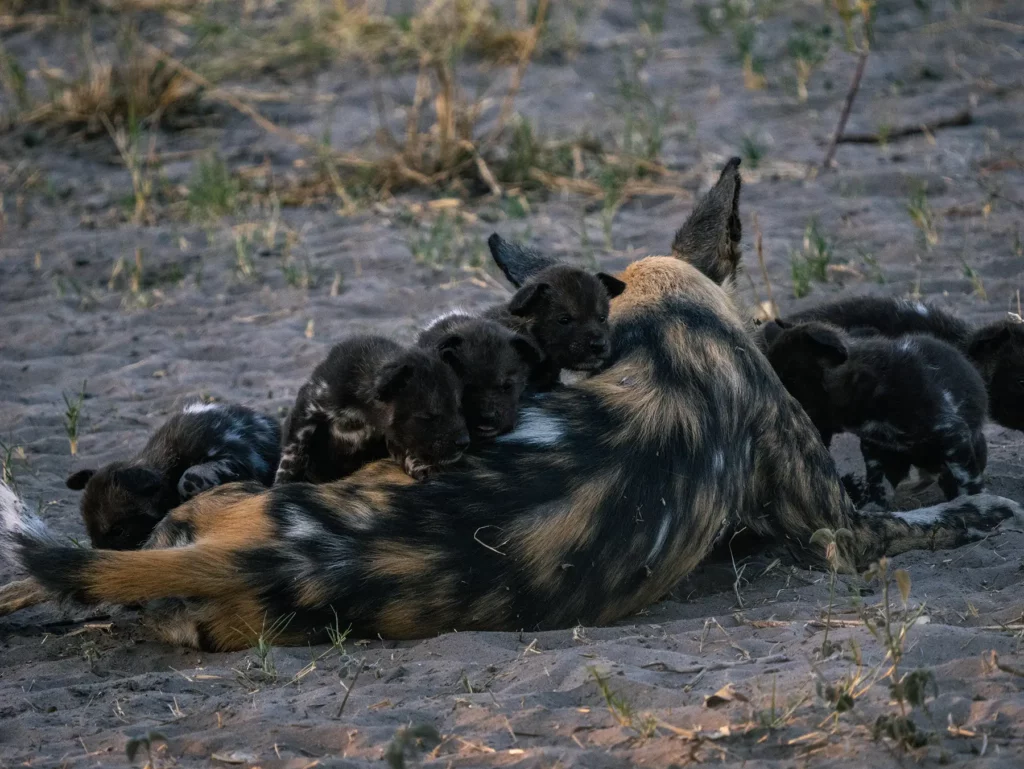
If you want to enjoy water activities like mokoro (canoe) safaris, then come between June and August. This is when the Okavango Delta is flooded, allowing you to access more channels for close-up encounters and wider exploration. It’s a unique experience and one of the most coveted safari excursions in Botswana.
Safaris between October and April can be rewarding too, although you’ll be dealing with hotter temperatures and a fair bit of rain. Yet lower prices and far fewer tourists mean that you’ll enjoy an even more exclusive experience. This is also a good time for bird watching and seeing newborn animals tottering about the plains and riverbanks.
Botswana is home to one of the world’s longest zebra migrations, with the herds undertaking a 620-mile return journey each year. During the dry season between June and November, you can see the migration around the Chobe River flood plains. Or head to the Nxai Pan National Park in Makgadikgadi to see the zebras feasting on the lush green grasses between December and March.
To conclude, the dry season between May and November is the best time to visit Botswana. However, it’s a year-round destination and you can benefit from discounts if you visit outside of peak season.
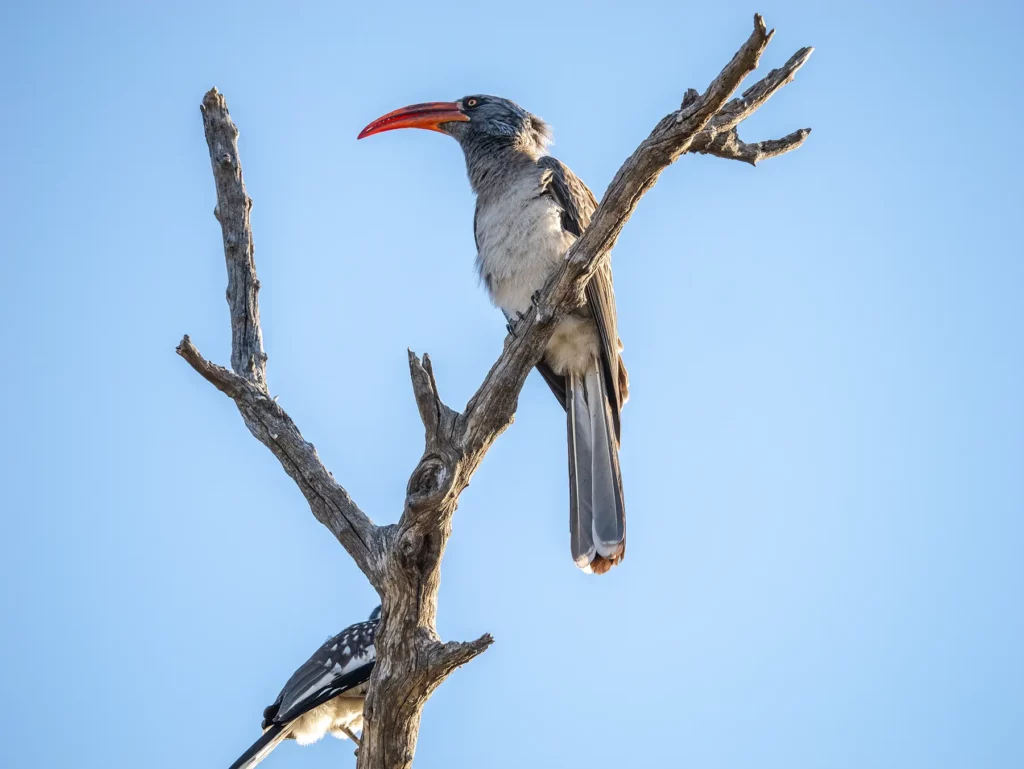
How Long to Spend in Botswana
In order to see Botswana’s safari highlights, I’d recommend spending at least 7 days in the country.
Ideally, however, you would visit for a little longer. I believe 10 days is a slightly better amount of time to spend in Botswana as it prevents you from rushing around and not just fast-track through each location.
If you have even more time, 2 weeks allows you to see even more of what Botswana has to offer beyond the typical northern circuit.
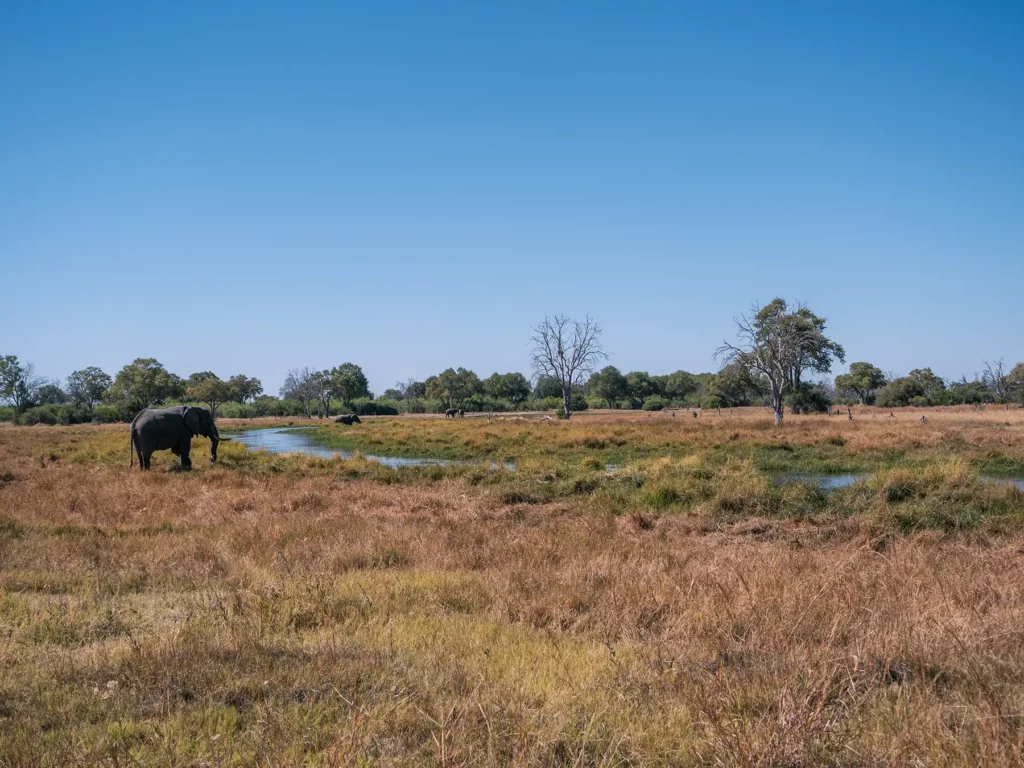
Botswana Safari Logistics
If you’ve booked your safari through a local operator, most of your logistics will be taken care of. However, there are still some things you need to consider when planning your Botswana safari.
Visa & Entry Requirements
Citizens from the UK, US, Canada, Australia and much of Europe don’t need a visa to enter Botswana and can stay for up to 90 days without one. Make sure your passport has an expiry date of at least 6 months after your arrival date, and that you have a minimum of 3 blank pages.
If you’re travelling with children under 17 years, you’ll also need to have a certified copy of their birth certificates.
You can check exactly which countries need a visa on the Botswana eVisa website.
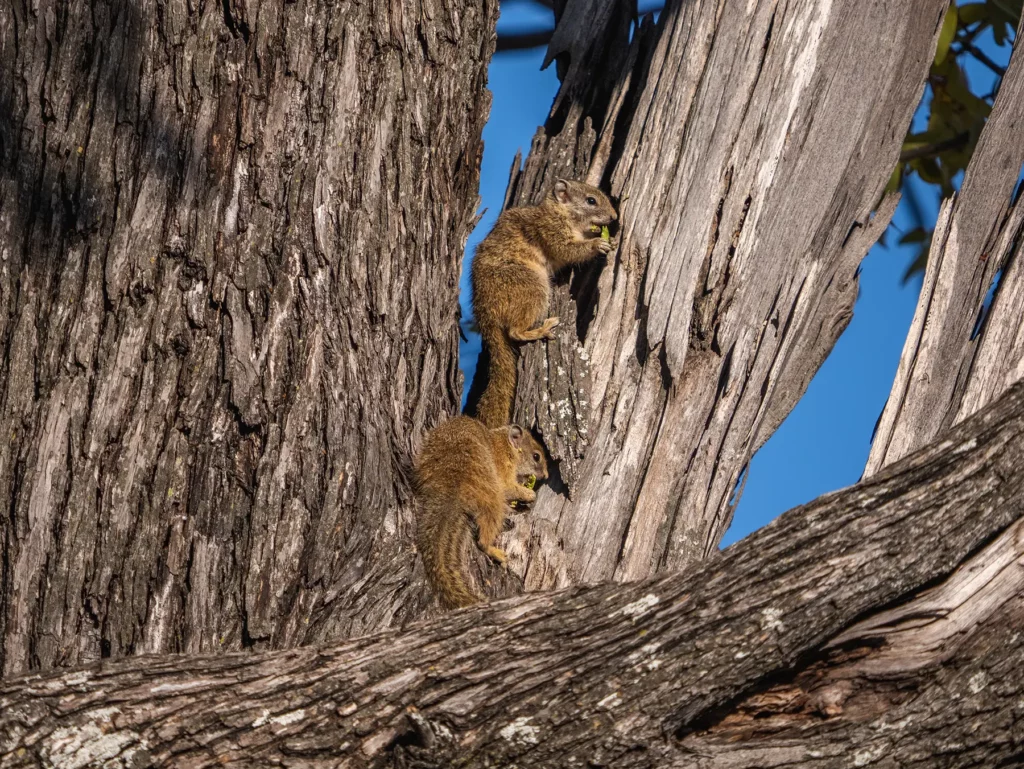
Vaccinations
You should always speak to your healthcare provider before travelling abroad to make sure your immunisations are up to date, and to check if anything further is advised. Remember to do this at least 2 months before travelling, as some vaccination courses can take a few weeks.
Wherever you travel in the world, you should make sure your routine vaccinations are up to date too.
Hepatitis A, Tetanus and Typhoid are often recommended for Botswana. Depending on the locations you’ll be visiting and the activities you’ll be undertaking, vaccinations like Hepatitis B and Rabies may be suggested.
If you’re arriving from a country listed as a transmission risk, you must have proof of a yellow fever vaccination.
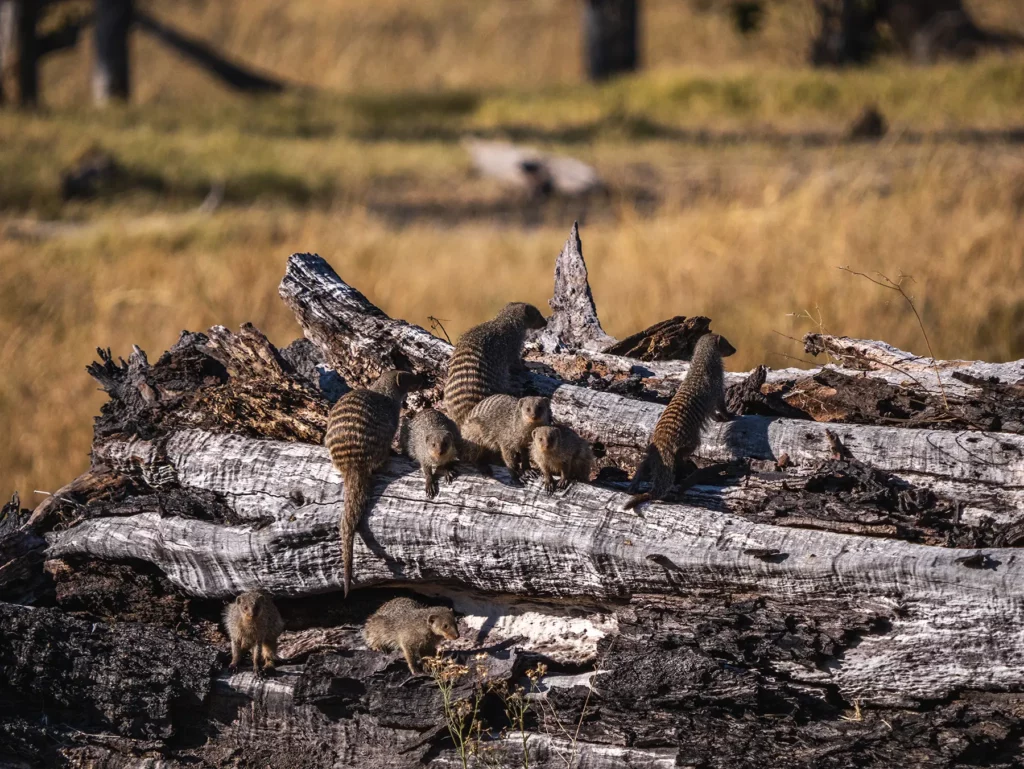
Medications
Malaria is present in Botswana. The country has a designated high risk in northern regions like the Okavango Delta during the wet season between November and June. Ask your doctor about the best antimalarial medication for your trip.
If you take medication for existing conditions, make sure you have a supply that will last you the whole trip. It may be difficult to get hold of medicine in Botswana, especially if you’re visiting remote safari regions, so it’s best to go prepared.
You should always take out travel health insurance when going abroad, and this is true for Botswana too. Healthcare in the country is good in cities and larger towns but can be limited in other areas. If you have a health emergency, you may require medical evacuation or treatment in a private hospital where costs will be high, so make sure the level of medical cover on your policy is sufficient.
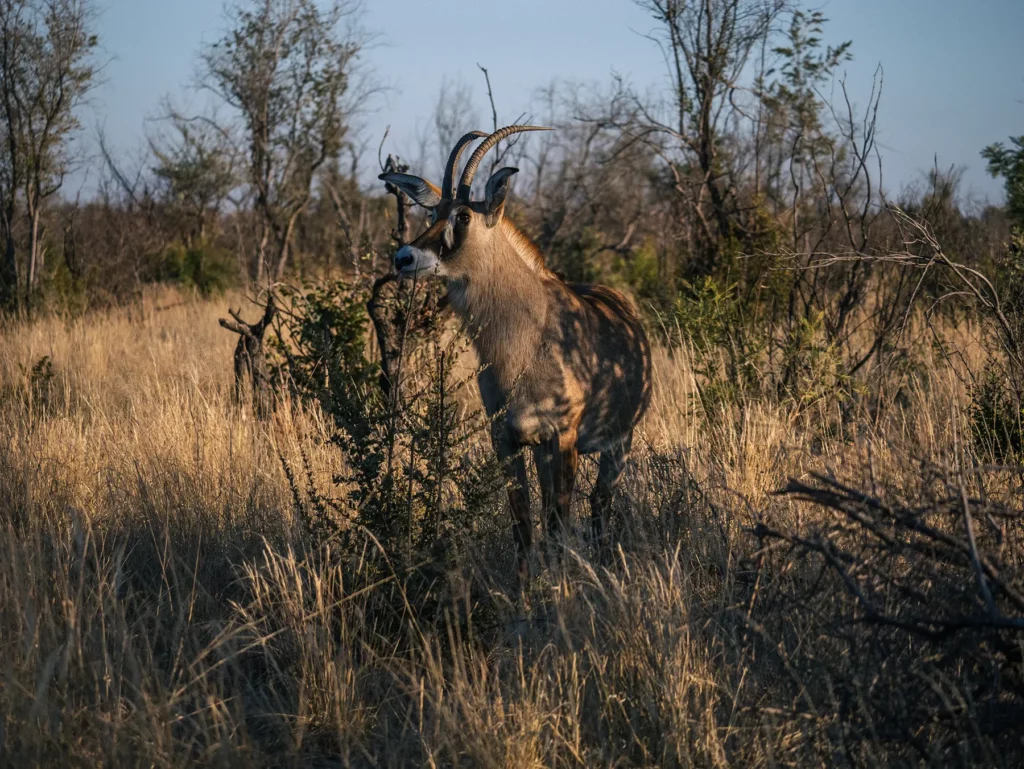
Border Crossings
Most people arrive in Botswana by air, usually flying via Johannesburg or Cape Town in South Africa, into Maun or Kasane in the north. If you’ve booked your trip through a local tour operator, once you’ve landed, all logistics inside Botswana will be taken care of.
However, if you’re planning on crossing into Zimbabwe after your Botswana safari to see the mighty Victoria Falls, you’ll need to be aware of the land border crossing requirements. Thankfully, they’re relatively straightforward and don’t require much pre-planning.
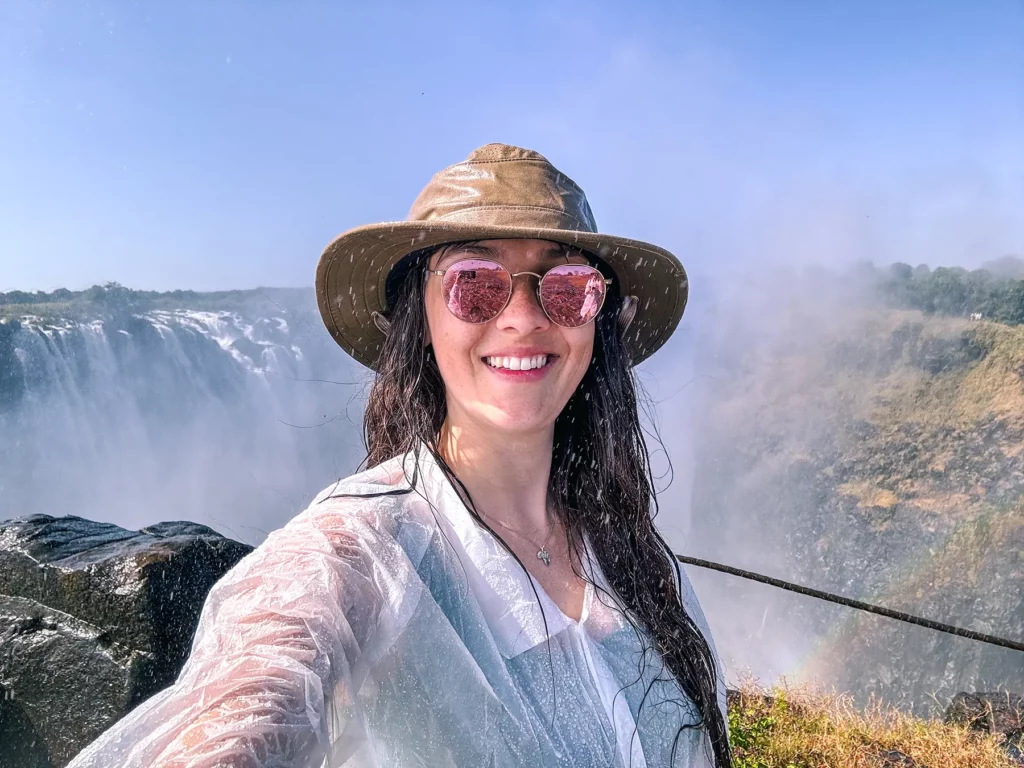
You can get a visa on arrival at the border between Botswana and Zimbabwe. It costs US $30 – $55 (exact price is dependent on your nationality with it costing $30 for US citizens compared to $55 for UK citizens) for a 30-day single entry visa, and you’ll need a return ticket and sufficient funds to cover your stay in the country. If this element of your trip is being arranged by your tour operator, they will give you advice on this too.
If you want to visit the Zambian side of Victoria Falls and then return to Zimbabwe, you’ll need to get a multiple-entry visa. The Kaza Univisa costs US $50 and allows you to enter Zimbabwe and Zambia several times. It’s valid for up to 30 days.
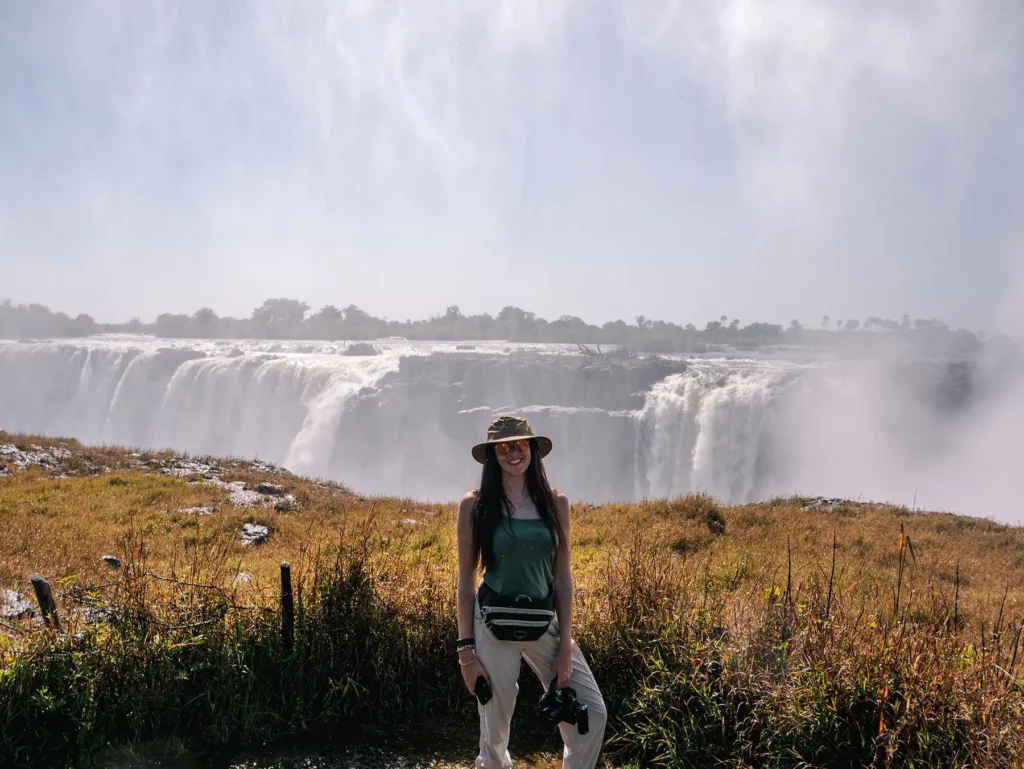
10-Day Botswana Safari Overview
I’ve loved my safari experiences in Botswana and have come away from the country with a wealth of knowledge about the best places to visit. So, I’ve put together this 10-day itinerary to help you plan your own trip.
This itinerary takes in some of Botswana’s top safari destinations as well as a few places that are more off the beaten track. It’s the ideal trip for first-time visitors to Botswana, as well as seasoned explorers.
The trip begins in Moremi Game Reserve up in the famous Okavango Delta, before moving on to the Khwai Community Area and Chobe National Park. You also have the option to end your safari on a high with a day at Victoria Falls.
Travel time is kept to a minimum, with the transfers often being a bonus game drive in themselves. You can often take a scenic flight transfer if you prefer, so logistics are quite flexible.
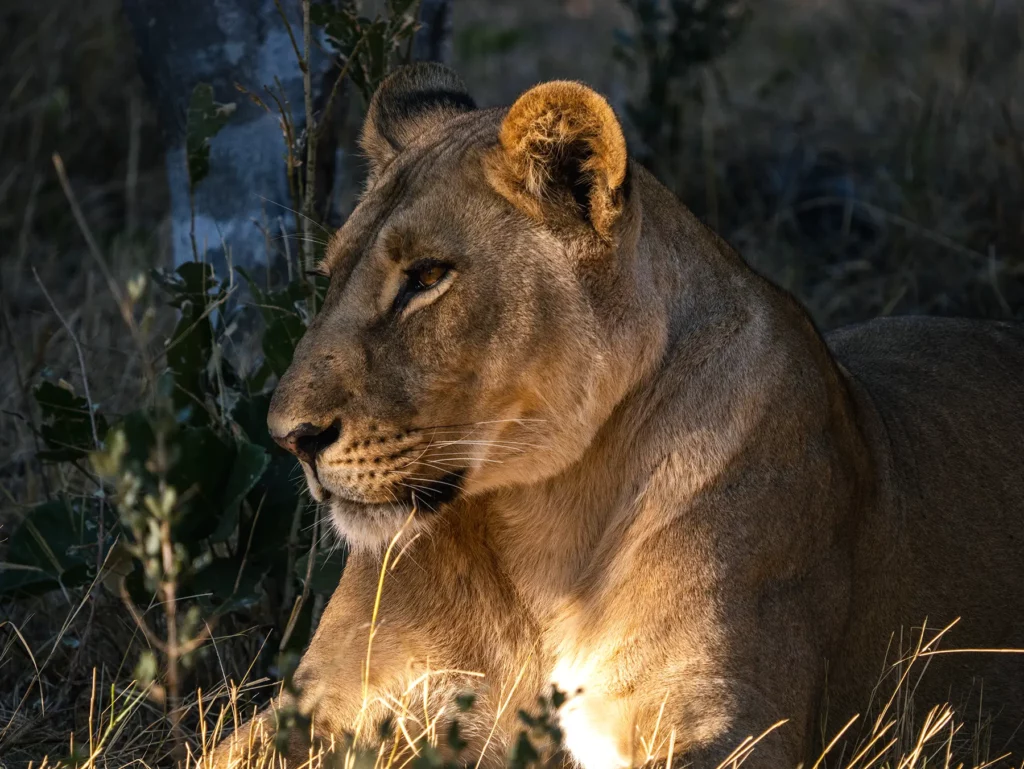
Day by Day Breakdown of the Ultimate 10-Day Botswana Safari Itinerary
Day 1: Maun
Total drive time (excluding game drives): 15 minutes
Today your adventure begins as you touch down in Botswana. Flights into Maun usually arrive at around 1pm or 2pm so you can either head to your hotel and relax or check out what the city has to offer.
Time-permitting I’d recommend arriving a day early for your safari to allow for any travel delays. This goes for any safari as flight delays can happen anywhere and you don’t want to miss any safari days!
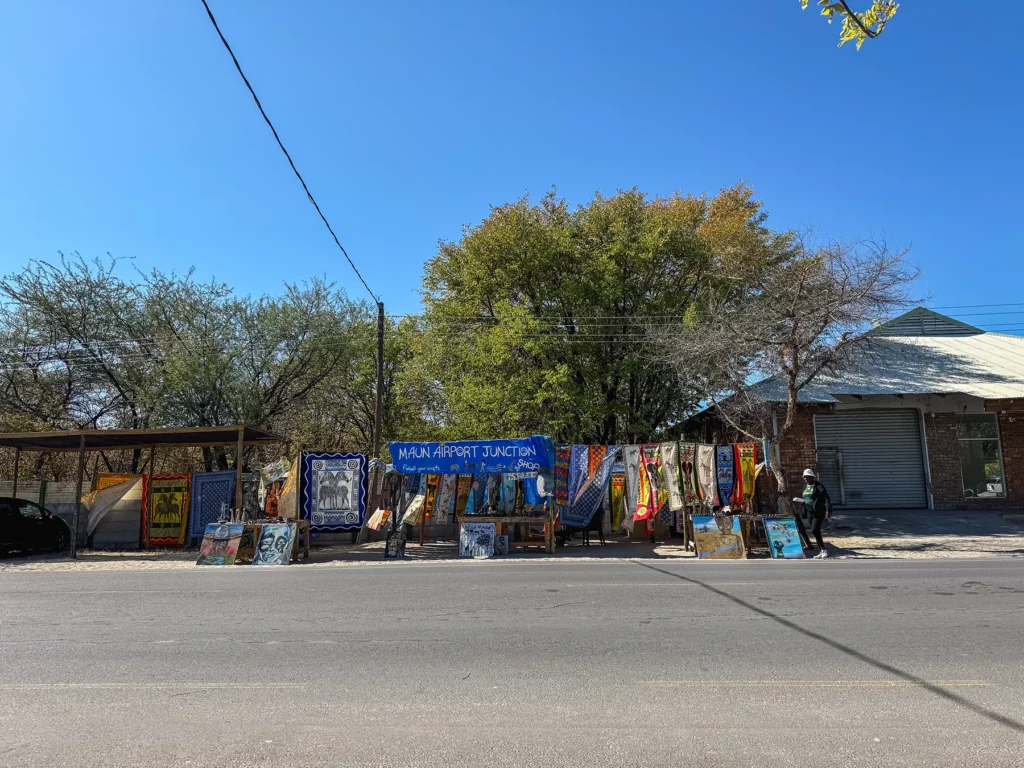
About Maun
Based in the north and known as the country’s tourism capital, Maun is one of Botswana’s largest cities. You can fly into Maun from Johannesburg and Cape Town in South Africa.
Maun was founded in 1915 by the Batawana people. It was their tribal capital and later became known for its cattle ranching operations. Today, Maun feels a bit like a modern frontier town, with a delightful mix of contemporary development and traditional residences.
The town has grown considerably since the 1980s thanks to the rise of tourism yet, in my opinion, it’s still pretty small with only a handful of eateries dotted around the colourful streets.
Maun is the gateway to the Okavango Delta, being only a couple of hours away by road and by housing the nearest airport, and is a popular start and finish point for many safaris in Botswana.
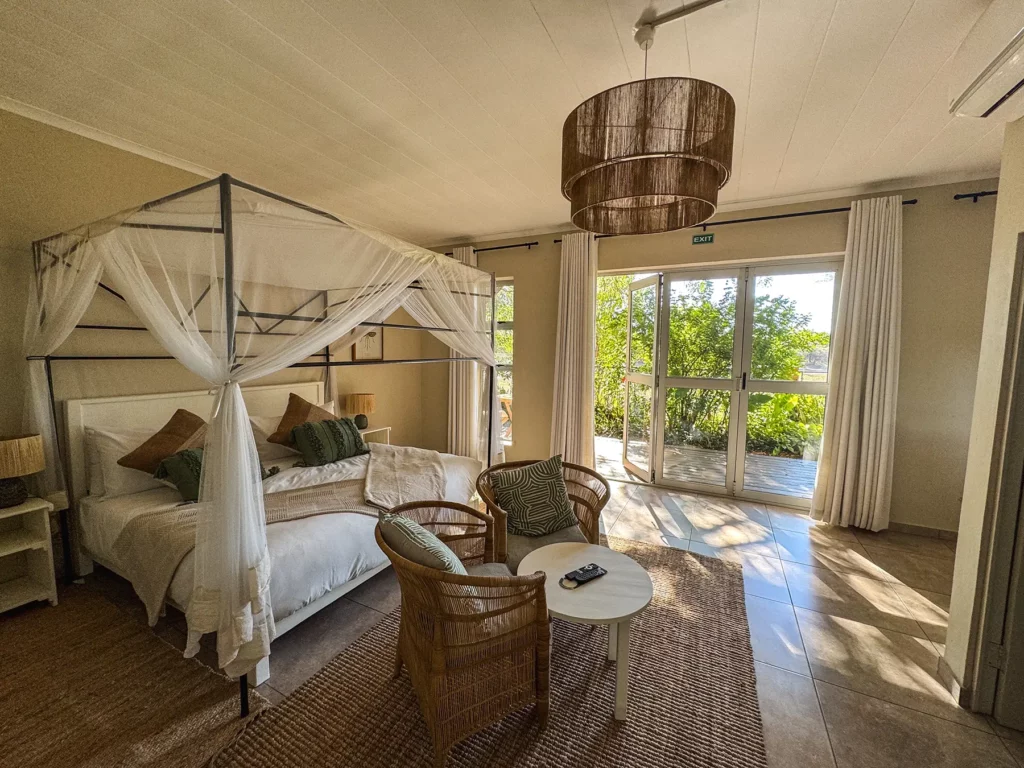
Where to Spend the Night
There are several nice lodges and guest houses to choose from in Maun, that offer a comfortable stay before you head out on safari. Most are within sight of the pretty Thamalakane River.
For a peaceful riverside stay, check out the Maun Studios, The Waterfront, or Maun Lodge. If you’d prefer to base yourself in the heart of town, Cresta Riley’s Hotel enjoys a convenient location and isn’t far from the airport.
My favourite place to stay is The Waterfront. It’s only a 15 minute drive from the airport and heart of town and is perched on the banks of the Thamalakane River (which is dry for much of the year). The rooms are clean and modern and the staff are so friendly. Breakfast is included in your stay.
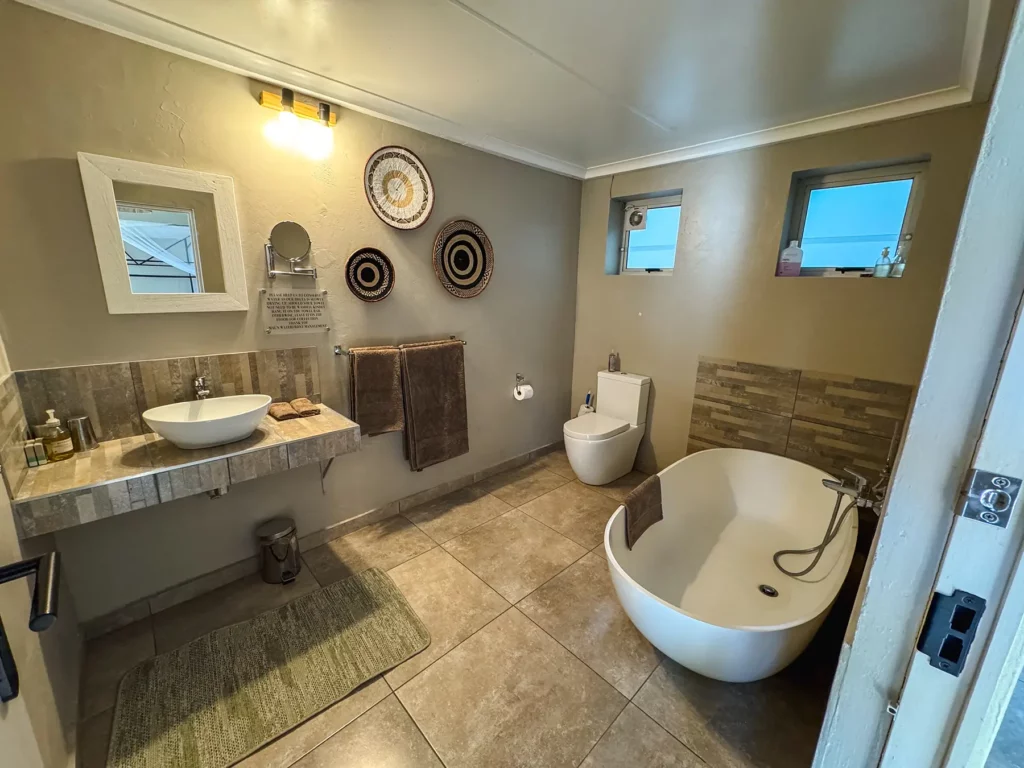
Things to Do in Maun
If you have a few hours to spare on your first day or want to add a day in Maun to your Botswana safari itinerary, there’s plenty to keep you busy.
Here are my top suggestions for activities in Maun:
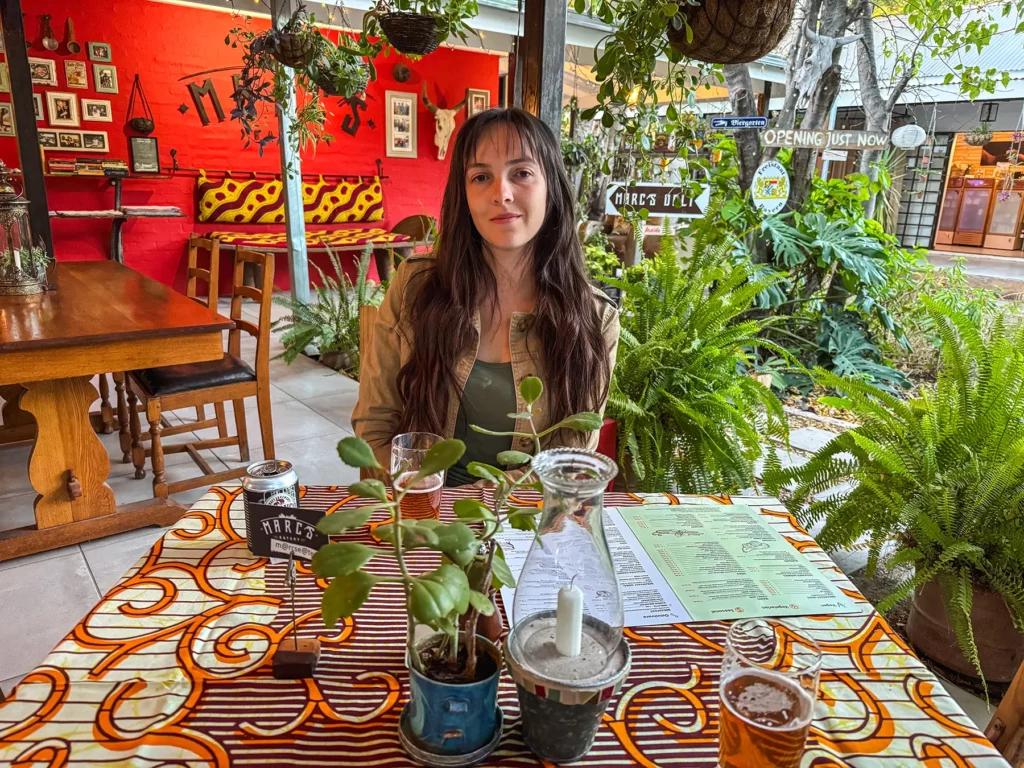
1. Visit Marc’s Eatery for dinner
My absolute favourite place to enjoy an evening meal in Maun is Marc’s Eatery. Marc’s Eatery serves up fresh, home-cooked food in a lush garden oasis just outside the town. It’s a relaxing place to enjoy dinner, with an international menu that often features artisanal food from the local market.
The furniture is eclectic, the music is from around the world, and there’s a homely vibe that makes you feel instantly welcome. There’s a deli here too, so you can pick up sandwiches and cake for picnic lunches if you wish.
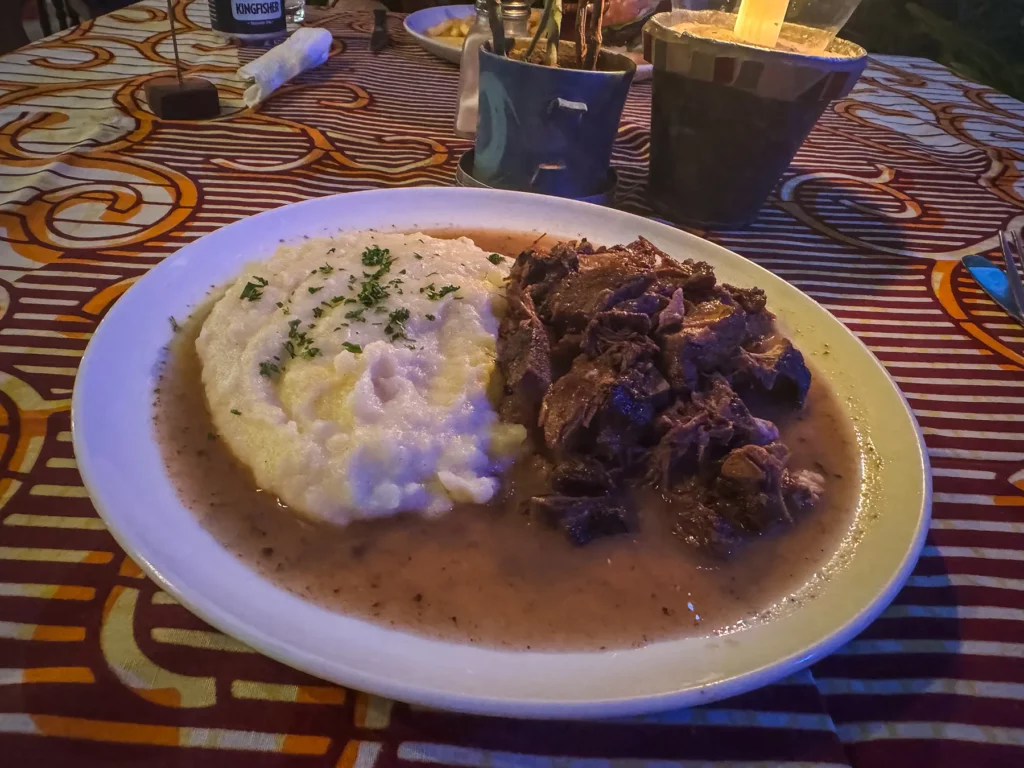
2. Hang out at The Duck Cafe and Buy Souvenirs
If you’re looking for a double fix of food and shopping, then the family-run Duck Café and Bar is the place to go. It’s just across the road from the airport, so is handily placed for the start of your trip.
The coffee here is renowned and slips down easily with the homemade dishes. The café has a quirky selection of locally made crafts and gifts so make sure you leave a bit of room in your suitcase.
There’s also a great little souvenir spot across the road which has fixed prices to save you the hassle of having to haggle. It sells beautiful hand-carved animals as well as books on Botswana and some useful maps. It’s the best place in Maun to buy souvenirs.
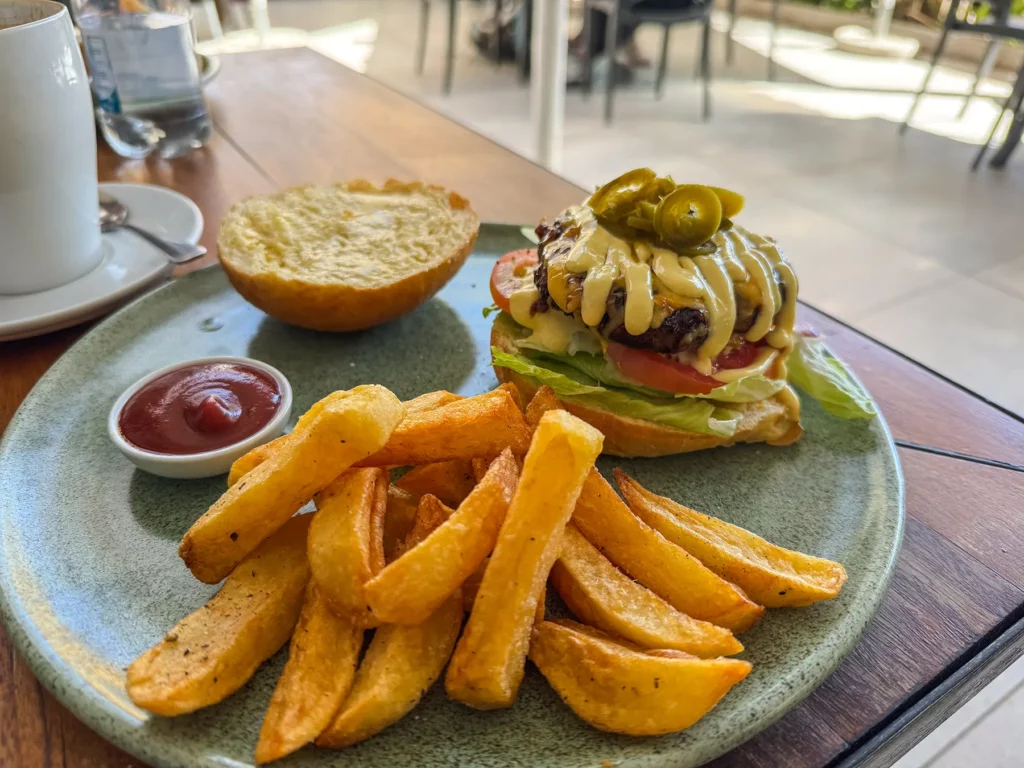
3. Visit the Nhabe Museum
Located in a historic colonial building not far from the airport, the Nhabe Museum has a fascinating collection of treasures and artefacts. You’ll learn about Ngamiland tribal heritage as well as take in art and basket weaving exhibitions put together by local creatives.
It’s a great stop-off on your first day if you want to find out about the cultural and natural history of the Okavango Delta. There’s a gift shop so you can pick up a few local souvenirs too.
4. Take a Scenic Helicopter Flight
For magnificent aerial views of the Okavango Delta, you can take a helicopter flight from Maun. Many flights operate with their doors off, so you’ll feel immersed in the breathtaking scenery. Most trips last around 45 minutes, which is plenty of time to soak up the views.
There are other options available however, including flights that stop in a remote island in the delta for some champagne or even a stop-off at a luxury lodge in the delta for a five star lunch.
Many of the remote delta areas aren’t accessible by land, so this is your chance to see places that few other tourists ever get to experience. As you fly over the vast floodplains with their maze of channels, woodlands and grasslands, keep an eye out for elephants, buffalo and lechwe.
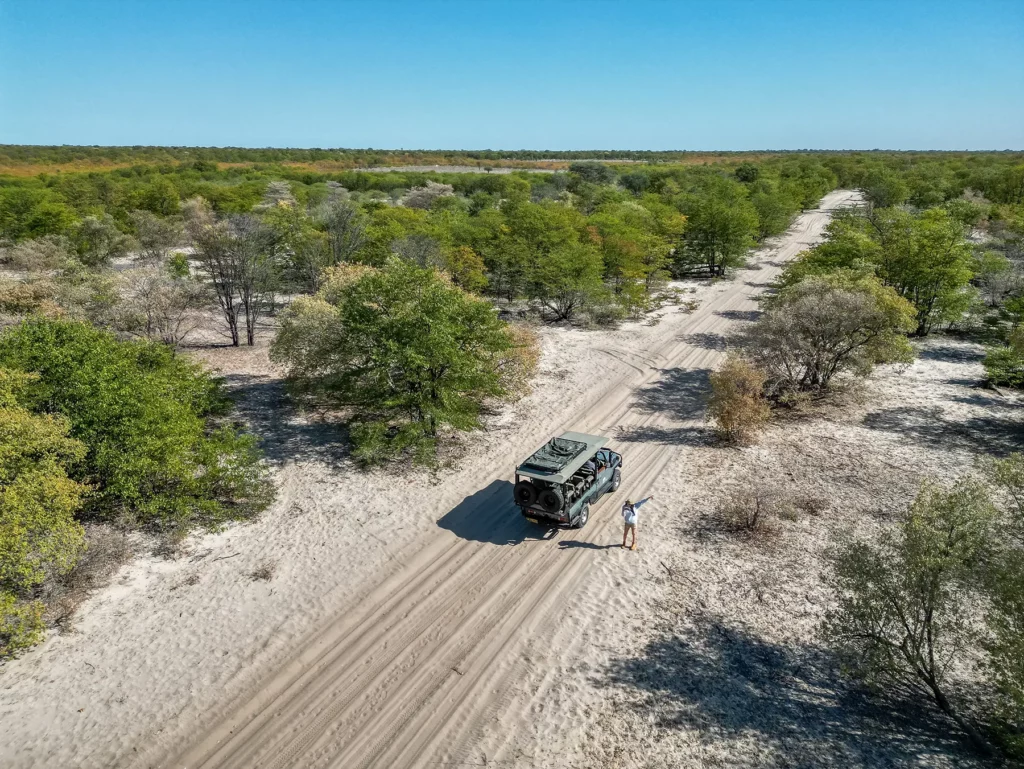
Tips for Visiting Maun
Maun is a small town, but it’s quite spread out, which is something to bear in mind if you’re staying outside the centre. Many guesthouses and lodges are not walkable from the airport.
Private taxis are relatively cheap and can be flagged down on the street, and there are shared taxis available too. Alternatively, ask your accommodation to arrange a transfer if required. I arranged my taxis through my lodge and they were reasonably priced, including a $7 ride from the airport.
As with most places around the world, you should take a few precautions to stay safe. Keep valuables out of sight in public places, and don’t go wandering around at night or in secluded areas. Crime isn’t a major problem here, but pickpocketing does happen, so it’s best to be aware.
Whilst Maun is a town, nature is never far away so try not to become complacent. There are crocodiles in the river, so don’t walk too close to the water, especially after dark.
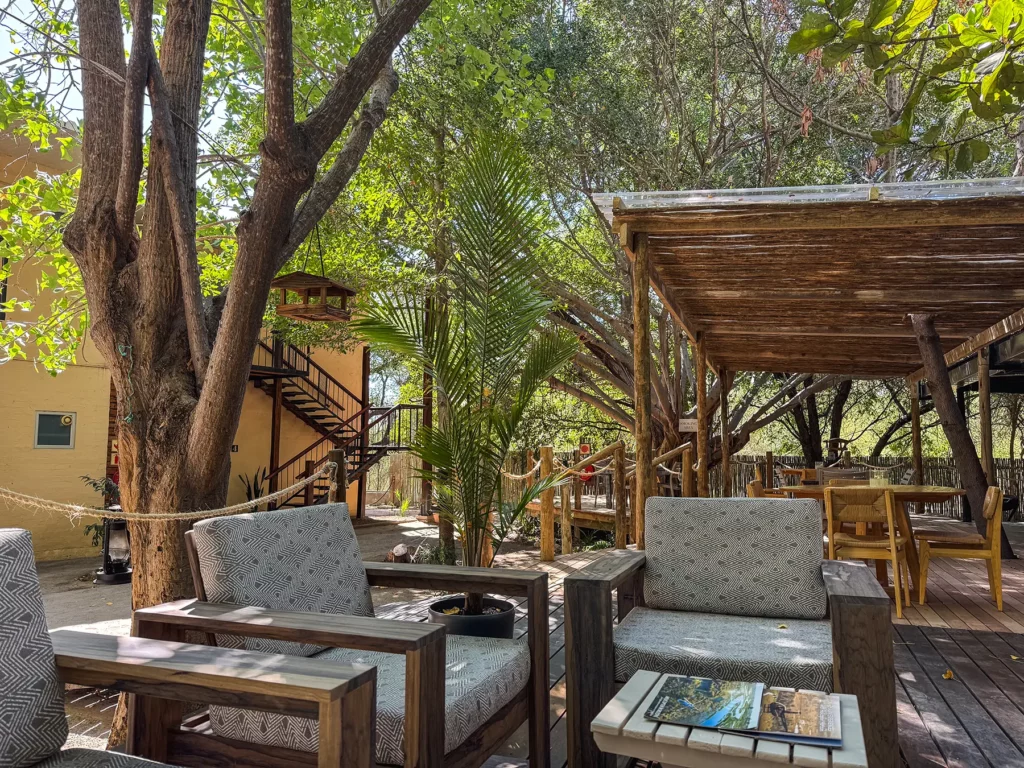
My Experience Visiting Maun
Maun is a sleepy town where nothing feels rushed. Compared to other African towns, traffic is fairly minimal and drivers are less erratic than I’m used to which is a welcome change. The ground is sandy and you can expect to encounter a donkey or goat or two on your travels through the town.
The spread-out nature of Maun does make it a little challenging to walk around (as I found when I got completely lost walking down a rather empty dusty road hoping it would take me to a central location) and so I’d recommend saving the number of a taxi driver so you can summon them whenever you wish to move location. Local taxis are the best way to get around as Uber doesn’t operate here. My taxi driver, recommended by my lodge, was so friendly and was never far away.
Maun has a lovely laid-back vibe to it and I felt completely safe at all times here. I experienced zero hassle whilst walking down the street and everyone was so friendly.
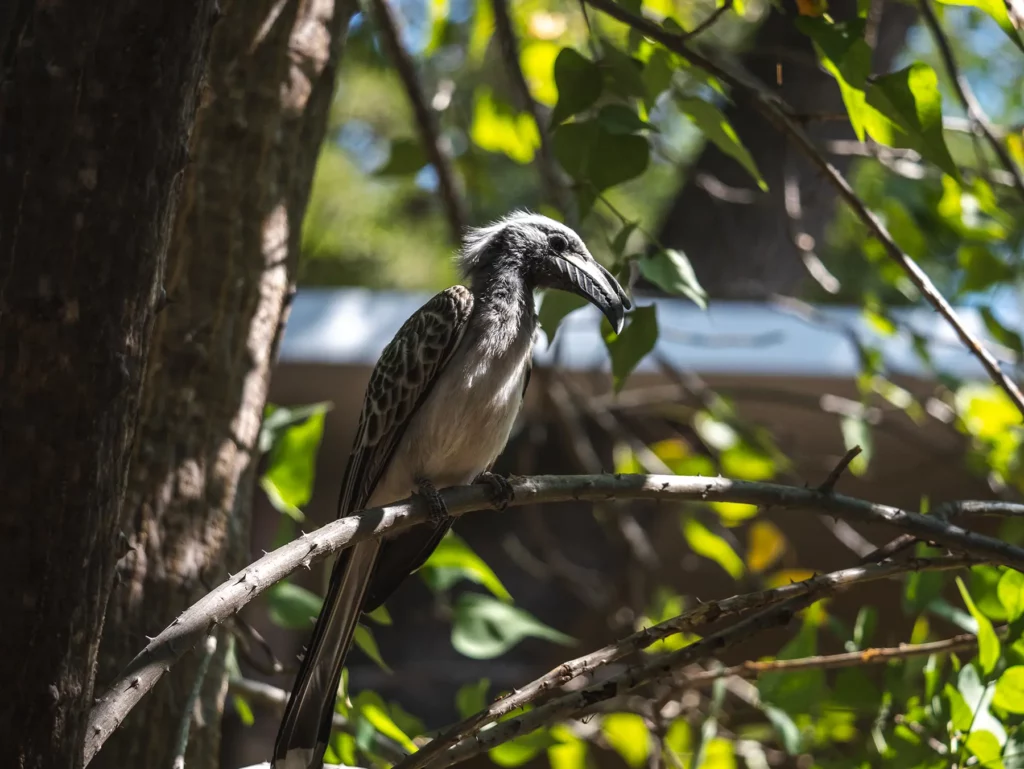
There aren’t many places to grab a bite to eat in Maun and so I found myself coming back to the same places every day (The Duck for lunch and Marc’s Eatery for dinner) and started to recognise faces. There was one evening where our taxi driver was just going back and forth to the same restaurant, ferrying different people from the same lodge to the same eatery. He dropped off some guests, picked us up and when dropping us at the lodge picked up even more guests to go to Marc’s!
The Duck and Marc’s Eatery have the best reviews in town which is why they were my preferred choice and why they were so popular.
There are a lot of expats living in Maun so you can expect to see them working from cafes such as The Duck. Practically every table had a laptop on it!
There isn’t that much to do in Maun so whilst I’d recommend one night here before your safari, I don’t think it’s worth spending much more time here.
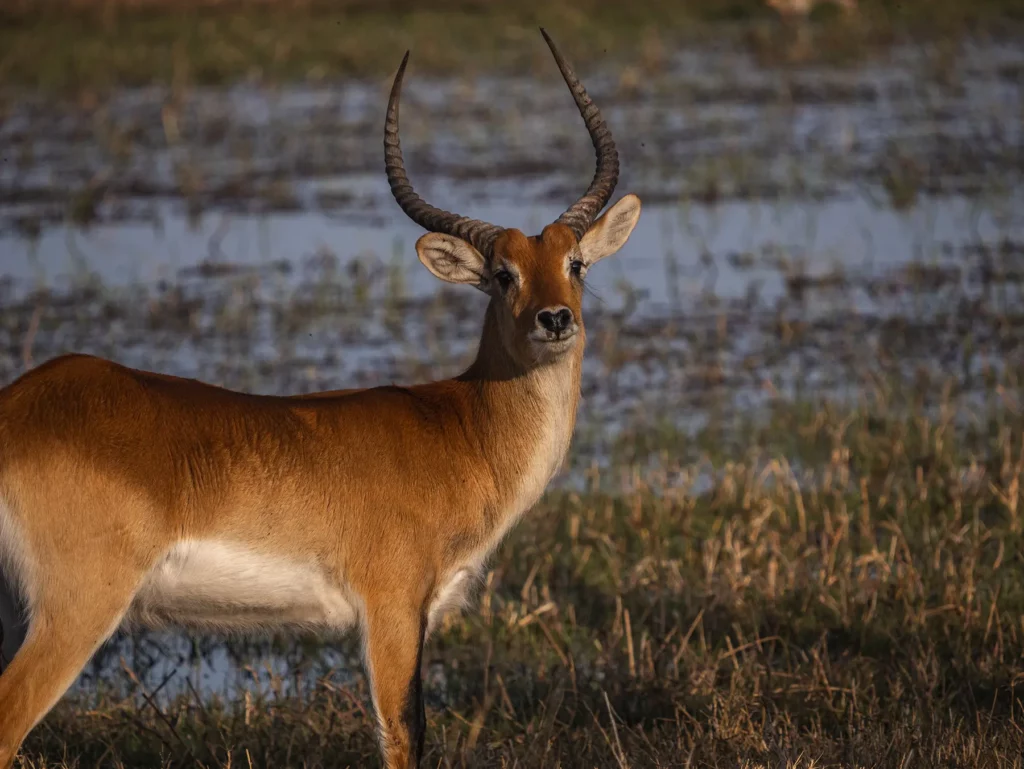
Day 2: Maun to Moremi Game Reserve (Okavango Delta)
Total drive time (excluding game drives): 4 hours drive or 30-45 minute flight
Today your adventure truly begins and you’ll transfer to the Okavango Delta to explore the beautiful Moremi Game Reserve. This is one of the most highly anticipated safari destinations in Botswana and is famous for its wildlife density and species variety.
Moremi Game Reserve (Okavango Delta) Map

Itinerary
This morning, you’ll head to Moremi Game Reserve, either by road or by air. It takes around 3-4 hours to drive the 95 miles from Maun, and between 30 and 45 minutes to fly.
The drive will initially take you down a stretch of smooth tarred road. It then turns into a sandy track. This dirt road is notoriously corrugated so be prepared for a gold old ‘African massage’ as you drive on the wide open road through mopane woodland. As soon as you’ve passed the cattle fence (which separates the wild from livestock to stop the spread of foot and mouth disease), the drive turns into a game drive and you can expect to see wildlife. I saw a breeding herd of elephants cross the main road.
If you’ve arrived by plane, you’ll be collected at the Moremi airstrip by your lodge or tour operator.

After arriving in Moremi, you’ll then be driven to your lodge for lunch, enjoying a mini game drive on the way. Alternatively, if you’ve booked a mobile safari, you’ll just head straight out into the bush, for a picnic lunch out in the wild.
The afternoon game drive is the highlight of the day when you’ll explore the reserve in a 4X4. Moremi is to the east of the Okavango Delta and so you can expect to see tranquil waterways, the water a brilliant blue as it reflects the clear sky, as well as beautiful swathes of mopane forest and even some grasslands. Many species can be found here including elephants, lions and leopards.
After spending a few hours delving deep into the remote wilderness in search of wildlife, you’ll return to your lodge or mobile camp for dinner.
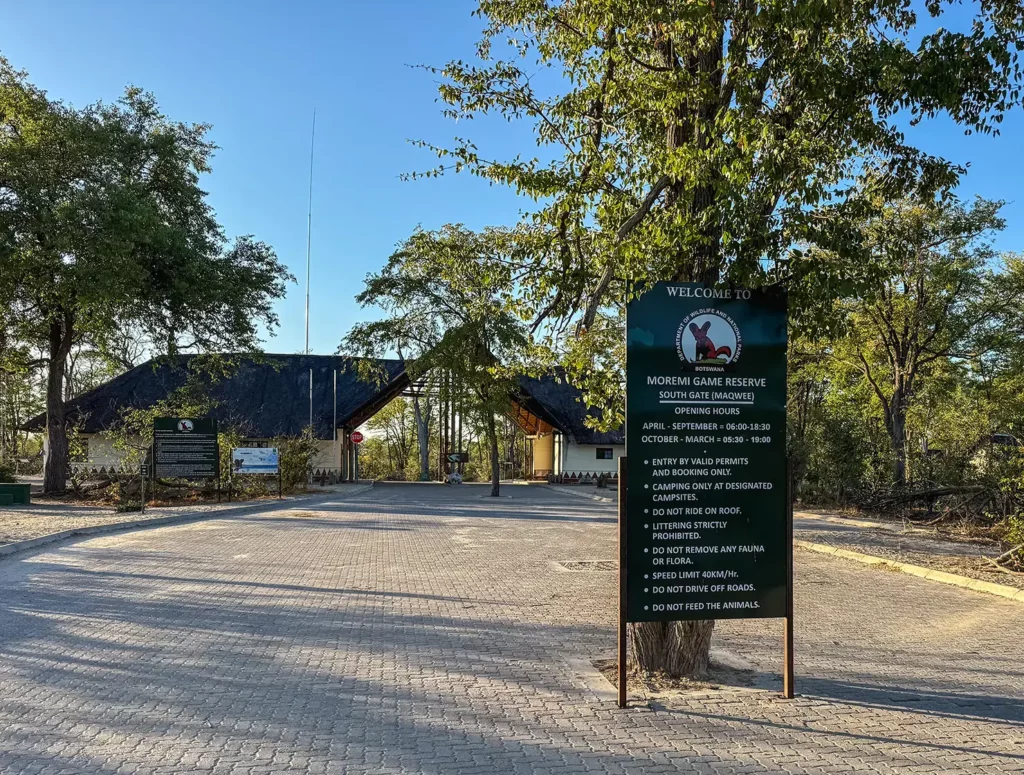
About Moremi Game Reserve
Moremi Game Reserve is one of the most popular safari destinations in Botswana. This is the oldest protected area of the Okavango Delta and covers about 40% of the region. The reserve was named after Chief Moremi III of the Batawana tribe after he created a wildlife sanctuary here on his lands.
A visit to Chief’s Island is included on many Moremi safaris – this was once a royal hunting ground but is now a hotspot for native wildlife. The island boasts one of the highest animal densities in Botswana, with pristine landscapes that have never been formally settled.

Moremi Game Reserve is home to diverse habitats which support a staggering number of wildlife species. You’ll get to explore the floodplains, mopane woodlands, acacia forests and lagoons during your safari in Moremi.
You can see all of the Big Five here (although rhinos are just limited to Chief’s Island where they are safe from poachers), as well as wild dogs, buffalos, hippos, giraffes and plenty of plains game. Safaris are usually enjoyed in 4x4s, mokoros (traditional dugout canoes), or on foot.
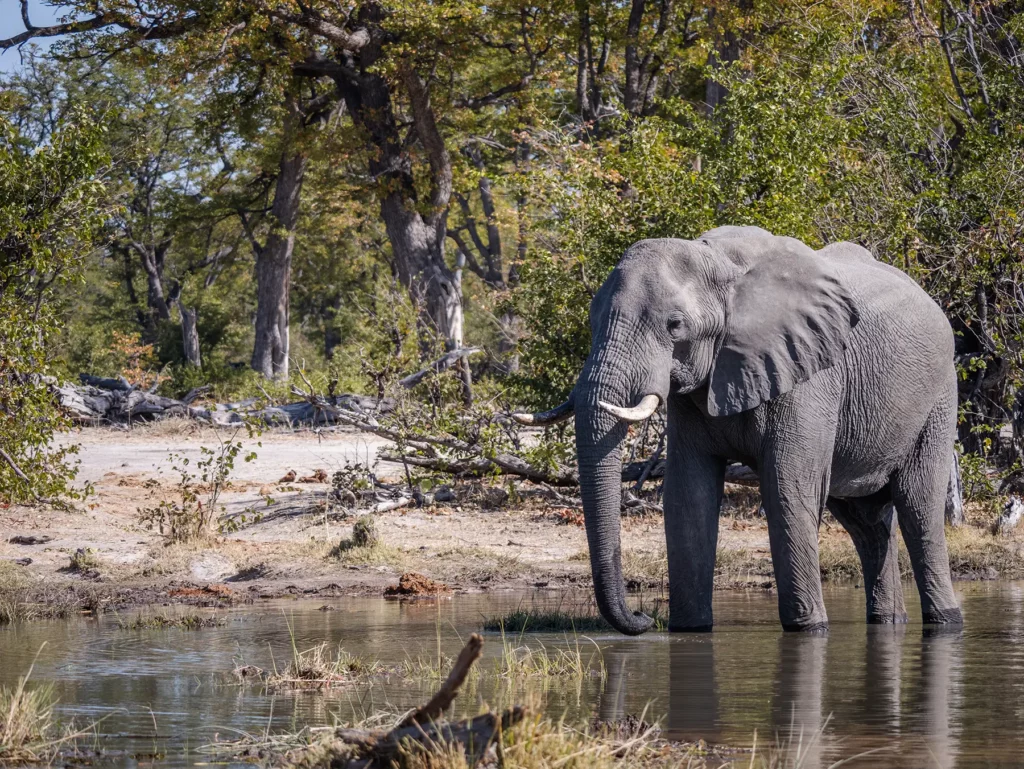
Where to Spend the Night
You have a lot of choice when it comes to staying in Moremi. There’s everything from high-end lodges to more basic camping. All accommodation is inside the game reserve, so no matter where you choose, you’ll have wildlife on your doorstep.
If you’ve booked a mobile safari, you’ll be camping out in the heart of nature. This is the most immersive safari option, and while facilities will be more basic than those of a lodge, you won’t need to forgo all your creature comforts.
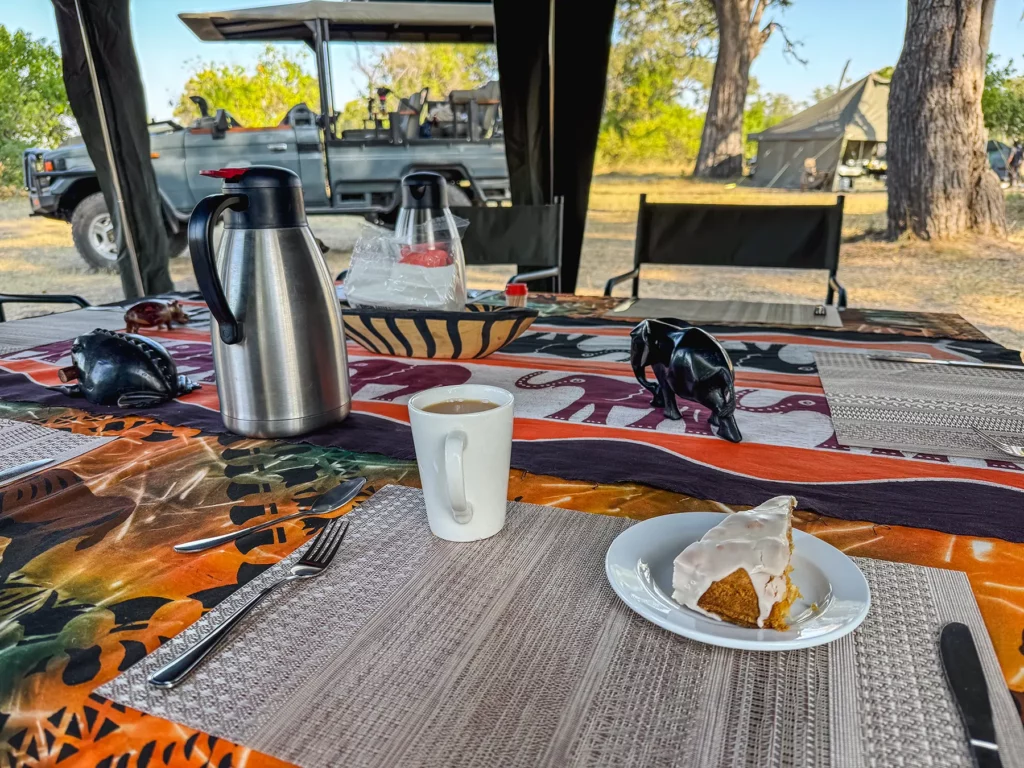
There’s a range of different mobile camps, from rustic options for hardy adventurers looking to keep costs down, to luxurious en suite bush tents with comfortable beds and hot water bucket showers. In the latter camps, everything will be done for you, with service just as good as in the lodges.
If you prefer a more permanent base, then there are plenty of lodges and tented camps scattered around the reserve. Again, prices and service levels vary depending on the standard of lodge you book. Camp Moremi, Nokanyana Lodge, and Little Sable all offer luxurious, classical safari experiences.
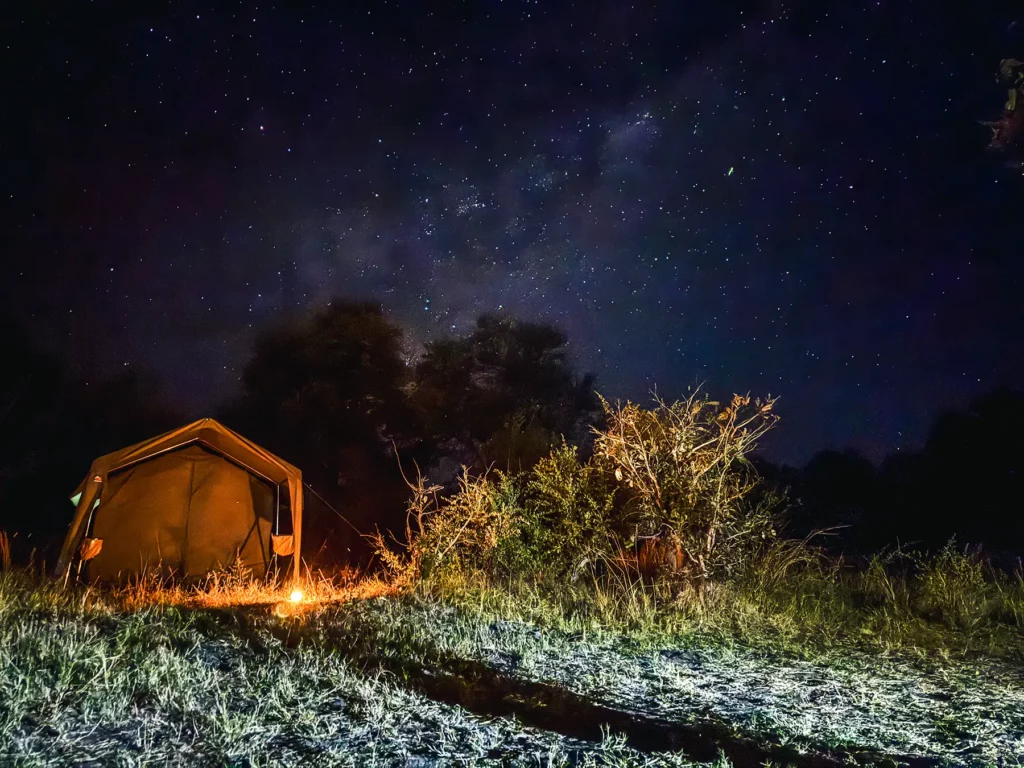
Tips for Visiting Moremi Game Reserve
You can visit Moremi at any time of year but be aware that some lodges and camps close when the water levels rise. Chief’s Island is a good spot for year-round lodging as the land here remains above the fluctuating water level.
If you fly into Moremi, remember that the smaller bush planes usually only allow 10-12 kg for luggage, so pack wisely. Laundry will be offered at many of the lodges as well as mobile tented camps (which move around with you), so you don’t need to take much.
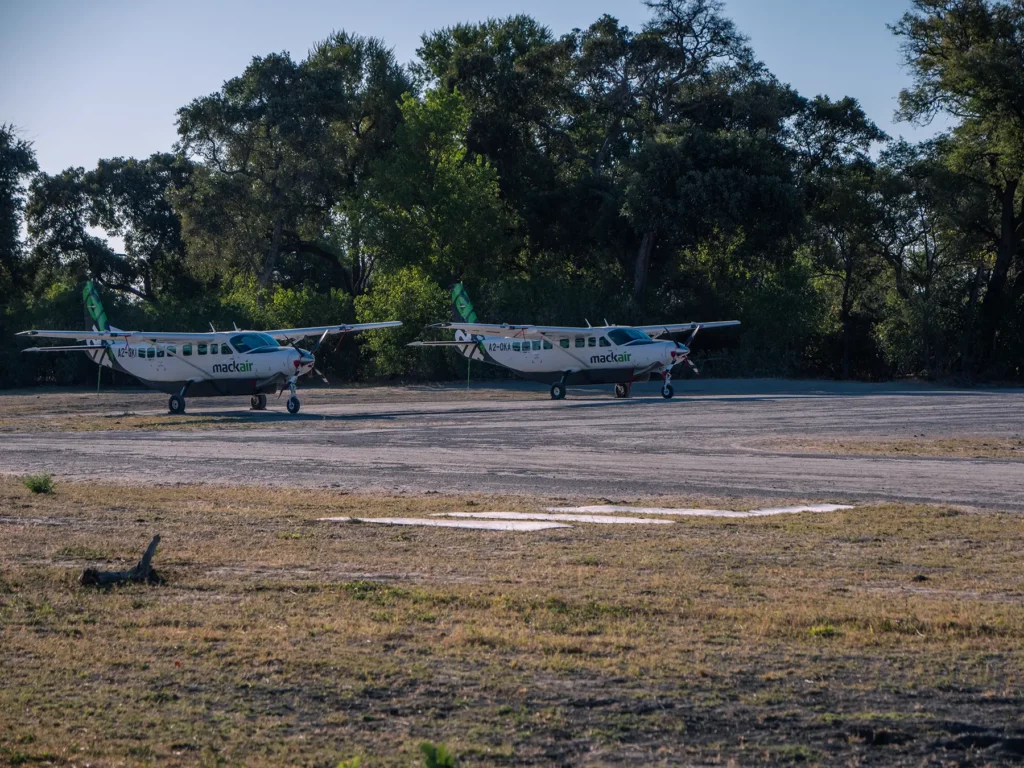
Most lodges and camps aren’t fenced, which means that wildlife can roam freely through the area. It’s therefore advisable not to walk unaccompanied around the site after dark – a member of staff will be happy to escort you wherever you need to go.
My top tip however, and this goes for every safari destination in Botswana, is to be prepared for the temperatures. The temperatures fluctuate between 5 degrees celsius at night to 30 degrees celsius in the peak of the day and so it’s essential that you bring layers. The mornings, nights and evenings are bitterly cold, especially when you’re out on safari as the vehicle is completely open.
I’d highly recommend bringing a scarf, gloves, beanie hat and even neck warmer which can be pulled over your nose. In terms of clothing I like to wear a vest top covered by a shirt covered by a fleece or jumper covered by a down jacket or gilet covered by a thin windbreaker coat. Even then I’m often still cold! Thankfully many mobile safari companies provide blankets at hot water bottles as well.

As the day starts to warm up you can then gradually take off layers.
My Experience Visiting Moremi Game Reserve
Moremi Game Reserve is without a doubt one of the most beautiful safari destinations that I’ve visited. Seeing the red morning light filter down through the great rain trees and onto passing zebras and impalas below simply took my breath away. Contrast this to marvelling at the dozens of species of waterbirds wading into the delta’s waterways and you’re starting to understand how varied Moremi really is.
I had three nights in Moremi as part of an 11 day mobile safari in luxury en suite tents. It was the first stop on my safari and we were basing ourselves within the Xakanaxa region of the reserve.
Over the four days we saw so much wildlife. We saw more elephants than I can count, including an extremely special encounter where we enjoyed a picnic lunch on the banks of the river and one by one, eleven bull elephants waded into the water from the opposite side of the bank and began to drink from the river just a few metres from us. This was the highlight of my time in Moremi.
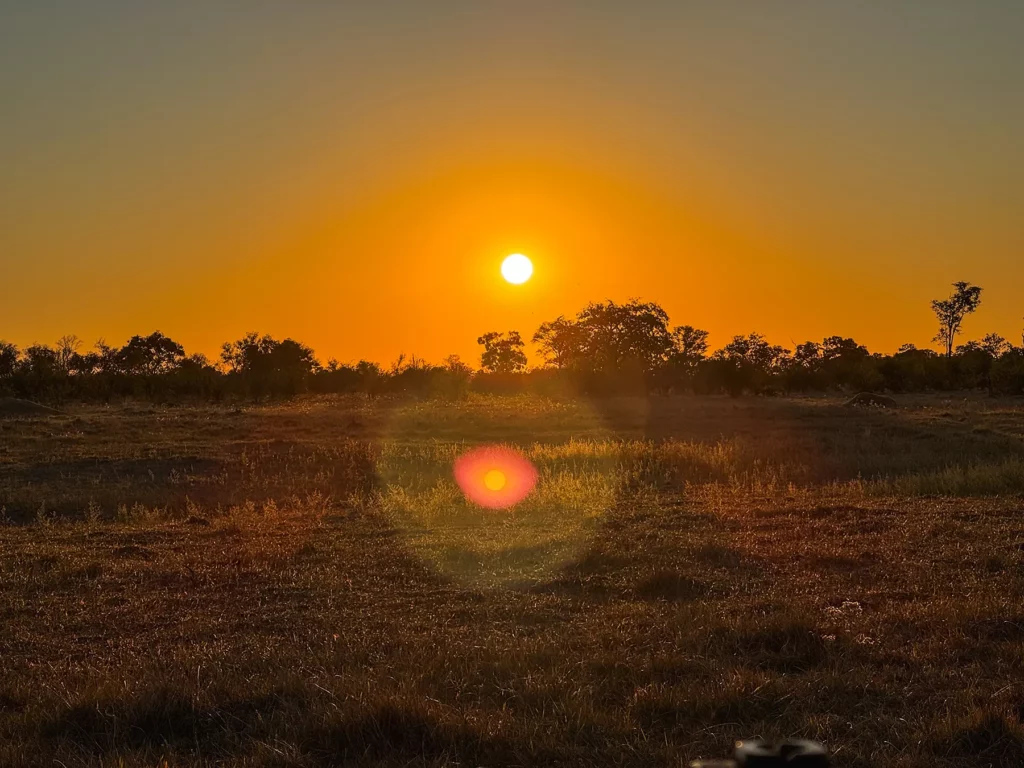
Another memorable moment was when we were driving back from sundowners on our second evening, the sky blood red as the sun set just below the horizon. The light was fading fast as we drove through a swathe of mopane woodland.
I spotted movement from within the forest and called ‘leopard’ at the same time as my guide. We halted and I laid eyes on the beautiful male leopard who was sitting in the sand. Another member of our group said they spotted another leopard in a nearby tree but I didn’t manage to spot it.
The leopard on the ground stood up and began stalking deeper into the forest. We followed him for a short while, watching as he momentarily flopped down for a rest before at last he stood up and melted into the shadows.
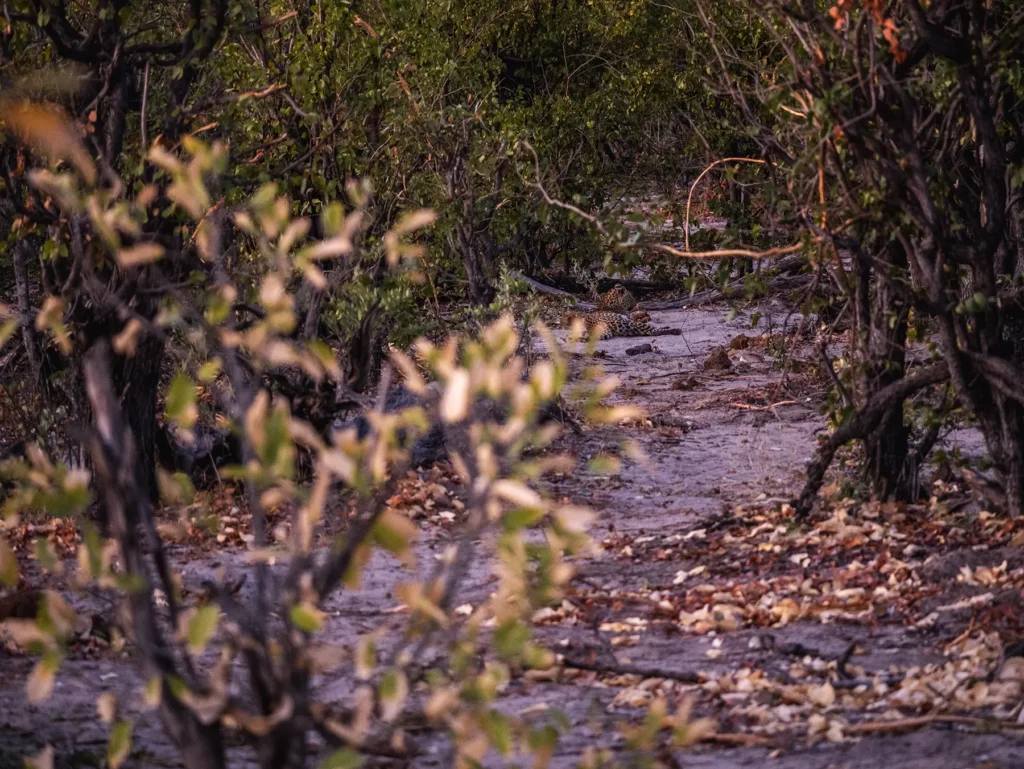
Day 3: Moremi Game Reserve (Okavango Delta)
Total drive time (excluding game drives): 0 hours
Today is all about safaris and exploring deep into the Moremi Game Reserve. You’ll enjoy a couple of game drives with a local guide – if there’s a particular animal you’d like to see, just ask and they will plan the excursions accordingly.
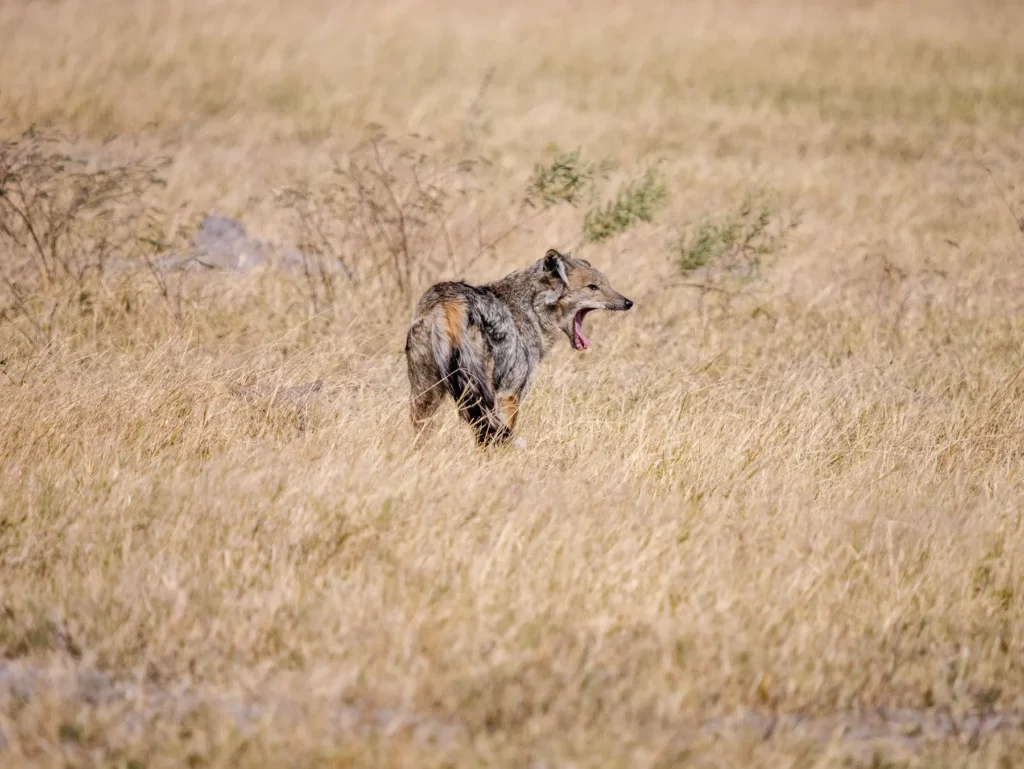
Itinerary
It’s an early start this morning, but you’ll agree it’s worth the effort. After a 5:30am wakeup call and 6am breakfast, you’ll head out on a game drive at 6:30am, visiting different habitats in search of a range of wildlife species. Expect to explore forests, floodplains, riverbanks, and lagoons during your adventure.
You’ll return to your camp or lodge at around 11:30am for lunch and some free time to relax, or even catch up on a bit of sleep. If you’re mobile camping, I advise you use this time to grab a hot shower whilst it’s not too cold outside. Showering in the evenings is freezing!
At 3:30pm you’ll head back out into the bush on an evening game drive. This is a great time to try to spot predators as they are typically becoming active after a long day of resting. The lighting at this time is also exquisite as the sun gradually starts to set and makes for some gorgeous photos. Moremi has a curfew which in the dry season is 6:30pm and so at this time you’ll arrive back at your lodge or camp for some dinner.
Where to Spend the Night
You’ll be staying in the same place as last night, whether that’s a mobile camp or a lodge.
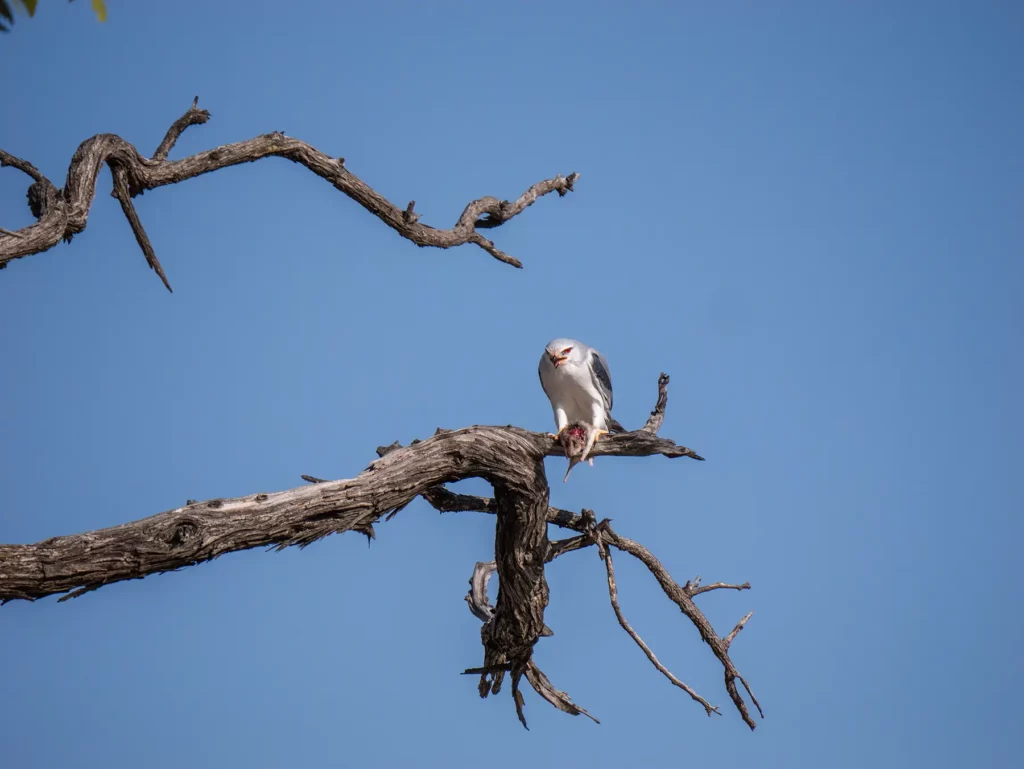
Day 4: Moremi Game Reserve to Khwai Community Area
Total drive time (excluding game drives): 4 hours drive or 15-30 minutes by plane
Today is a travel day, but you’ll begin with another game drive in Moremi before gradually meandering towards Khwai, which is essentially another game drive. After transferring to Khwai Community Area, there will be time for an evening game drive before dinner.
Despite the journey between the two destinations, this is a fun day out with non-stop scenery and potential animal sightings along the way. I absolutely loved my travel day between Moremi and Khwai!
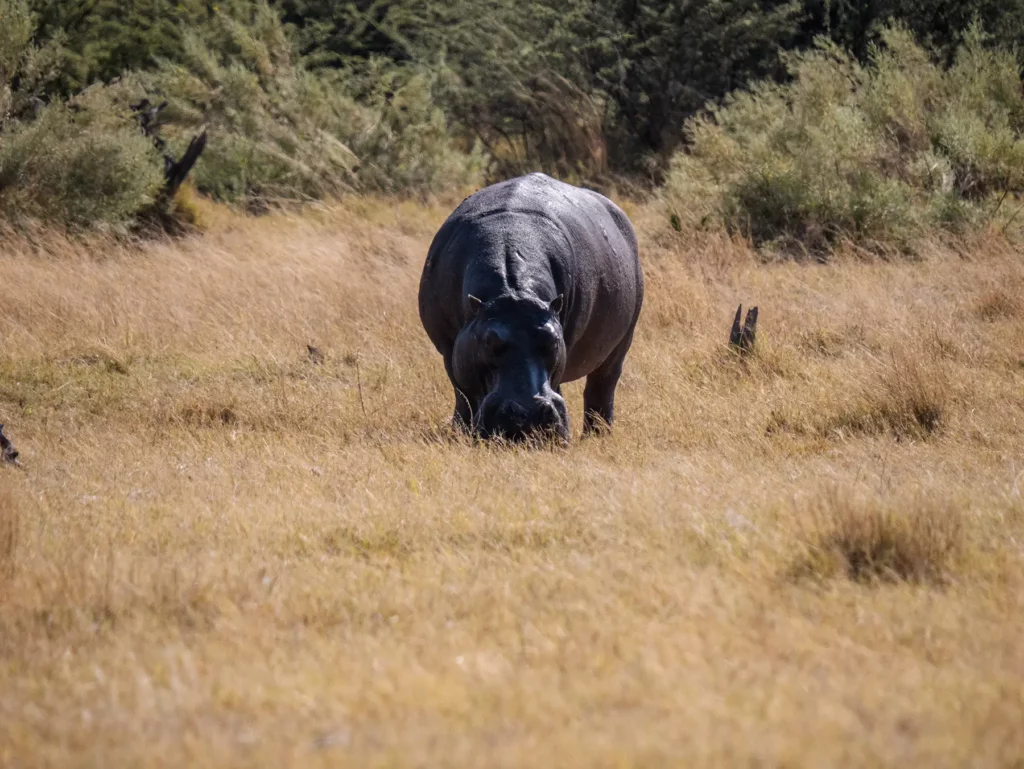
Khwai Community Area Map

Itinerary
You’ll enjoy one final game drive in Moremi this morning, before travelling onward to the Khwai Community Area which sits on the outskirts of the reserve. To get here, you have a couple of options – either a short bush flight or a ground transfer. The latter is a great way to arrive as you’ll be journeying through the reserve, so it’ll be like having a bonus game drive.
If you’ve booked a mobile camping safari, you’ll be treated to a picnic lunch at a scenic spot en route to Khwai. Alternatively, for those staying at a lodge, a hot lunch will be provided on arrival at your accommodation.

This evening you’ll venture out into Khwai for a game drive through the park. As Khwai is a private community concession and isn’t owned by the government, night drives are permitted.
You therefore have the chance to stay out after sunset and search for Botswana’s nocturnal wildlife such as genets, civets, spring hares and more. Then it’s time for dinner back at your camp or lodge to swap stories about the day’s sightings.
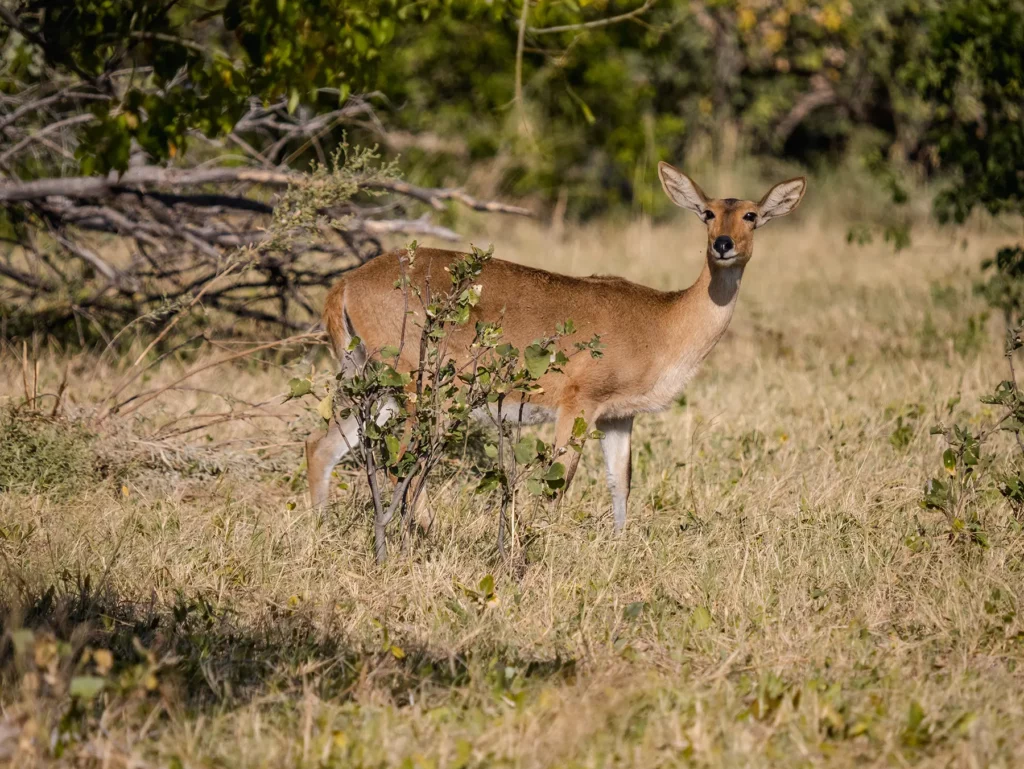
About Khwai Community Area
The Khwai Community Area is located on the edge of the Moremi Game Reserve in the northeastern reaches of the Okavango Delta. It’s a pristine wildlife haven packed with a range of diverse ecosystems, which makes for fantastic animal spotting. As well as floodplains and lagoons, you’ll be exploring open plains and forests in search of different species.
Khwai is famous for its predators, with high concentrations of lions, leopards, cheetahs and hyenas. There’s a healthy population of wild dogs here too, as well as favourites like elephant, zebra, giraffe and hippo.
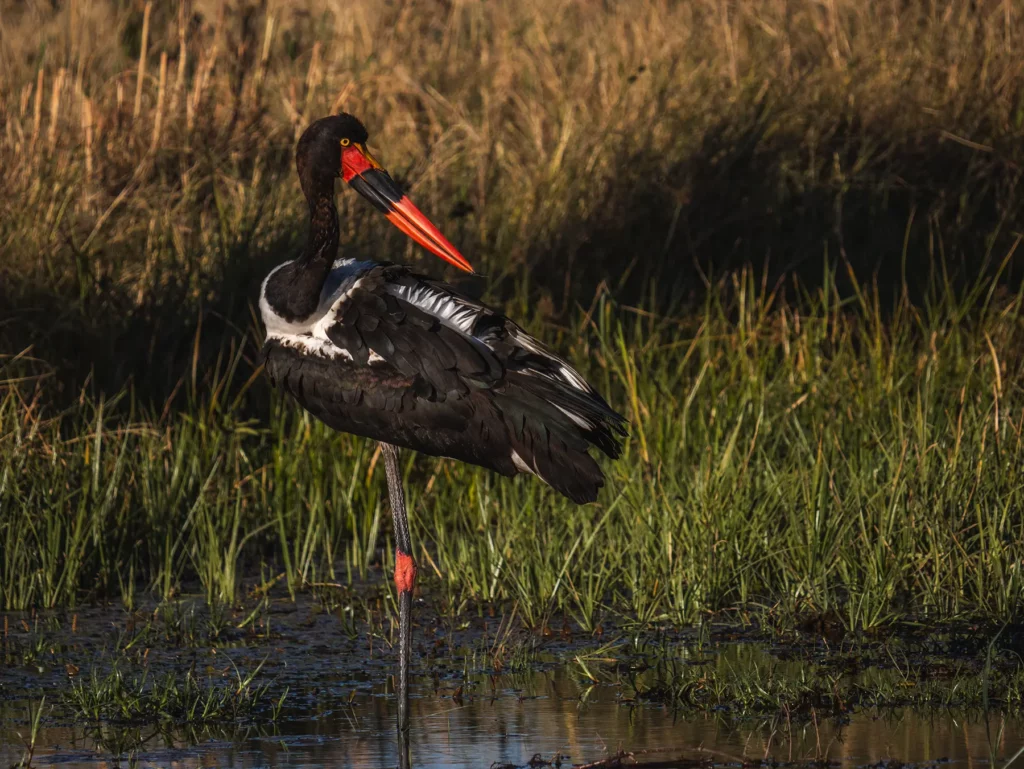
This scenic area is a private concession owned by the native San people. There are around 400 people in the community today, living in harmony with nature. Formerly a hunting region, Khwai was formed by the local villagers and is now managed as a conservation area.
One of the bonuses of Khawi being a private concession is that night game drives are permitted here, giving you access to the incredible nocturnal wildlife that calls the place home.
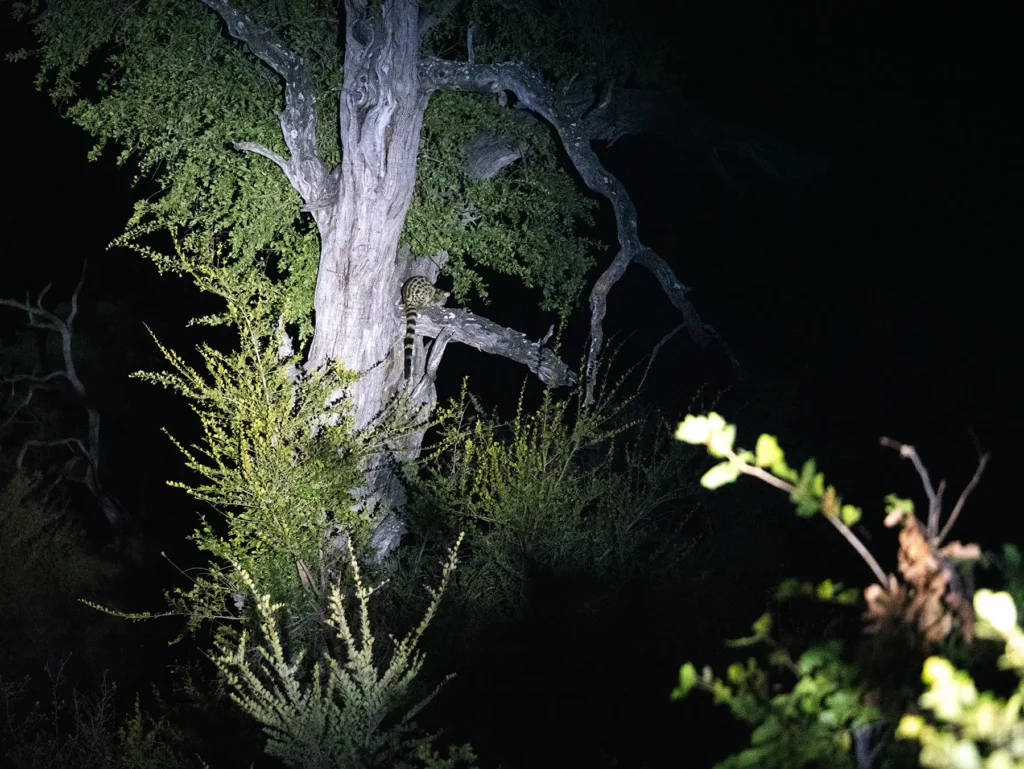
These animals only become active after sunset, which means that most visitors never get to see them. Keep an eye out for aardvarks and porcupines. You might even catch a glimpse of the threatened pangolin if you’re very lucky.
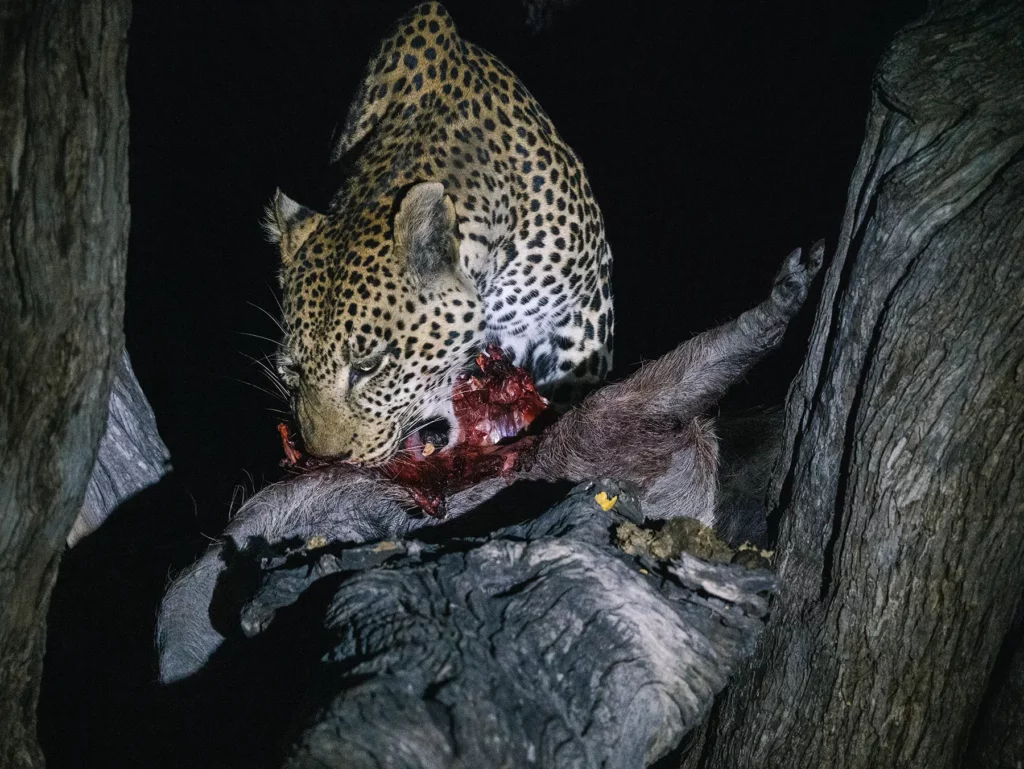
Where to Spend the Night
If you’re on a mobile safari, all the camp gear will be transferred and rebuilt at a new site in Khwai. On budget mobile safaris, you’ll need to pitch in with taking down and setting up camp, which makes it feel even more like a pioneering adventure. However, if you’ve chosen a more luxurious mobile safari, the camp will be taken down whilst you’re on your morning game drive and it will be all set up again, ready and waiting for your arrival. When you arrive in camp it will look almost identical to how it did in Moremi, except the scenery has changed!
There are several safari lodges and camps to choose from in the Khwai region. These include the sumptuous Belmond Khawi River Lodge, the elegant Khwai Leadwood Camp, the top-rated Machaba Camp and Khwai Lediba – a luxury tented option on the banks of the river.
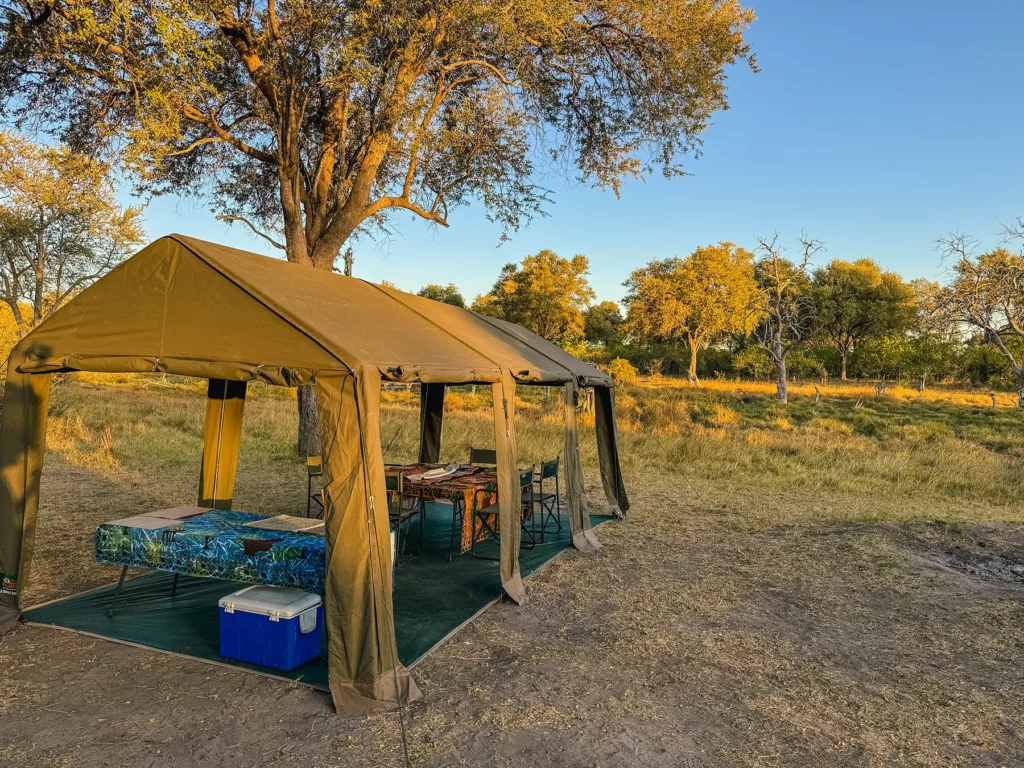
Tips for Your Moving Day to Khwai
If you’re staying in a lodge then moving day is pretty straightforward. You’ll just need to pack up all your belongings in the morning and either hop in your 4X4 transfer vehicle or take a quick flight to Khwai.
If you’re luxury mobile camping then things are also pretty simple. I like to pack my bags the night before as each morning is a very early start with a wakeup call at 5:30am. The team likes your bags to be ready before breakfast so that they can load them all into the vehicle. Then as you eat breakfast, the team starts to dismantle the tents. It’s a big job for them and so they like to start as soon as possible.
You’ll then head out for your full-day game drive whilst the team continues to dismantle camp. They’ll then hit the road, travelling at a much faster speed than you will be, in order to have time to set-up camp again before you arrive.

You’ll be on the road from around 6:30am till around 4:30pm so come prepared for a long drive. This may mean bringing a neck pillow with you, headphones and even some snacks. Also ensure you have plenty of water with you.
A picnic lunch will be provided and you’ll get to enjoy it in a scenic spot somewhere within Moremi Game Reserve. You should then have an hour or so after lunch to just relax before you get back on the road.
Once you arrive at camp, I recommend showing as soon as possible whilst there’s still some warmth in the day. Showers after dark are just too cold!
If you’re budget camping then you’ll likely have to get involved in the taking down of camp and setting it back up again in Khwai. This will take away from precious time searching for wildlife but at the same time provides a fun hands-on experience.
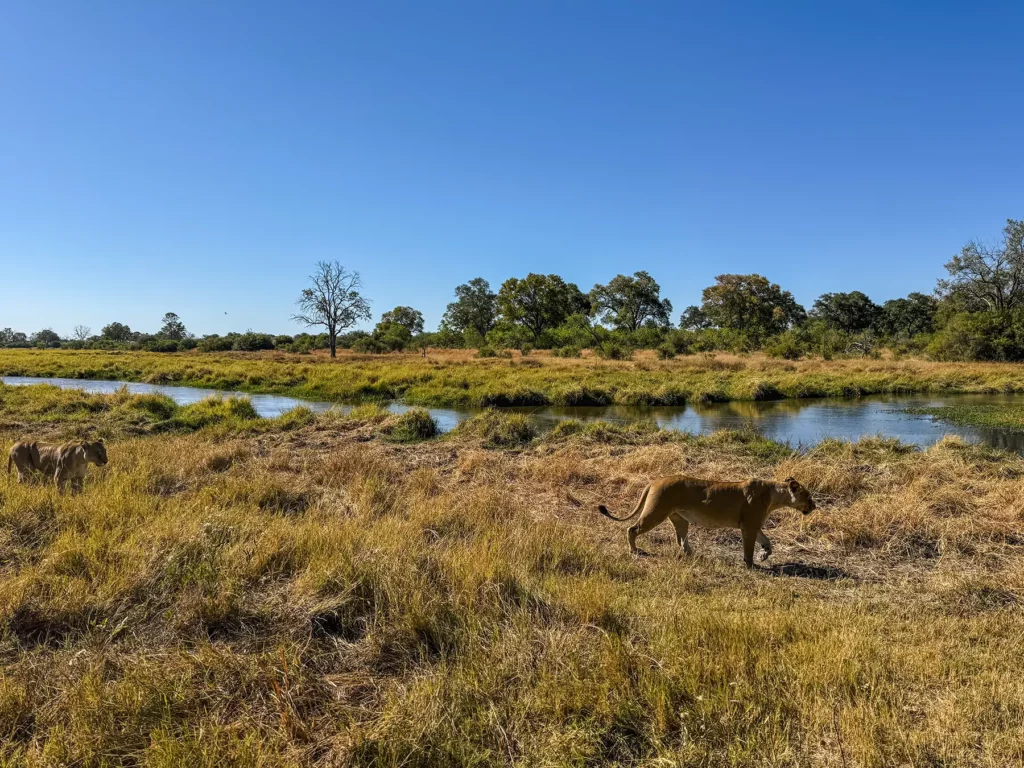
My Experience Journeying from Moremi to Khwai
My travel day between Moremi and Khwai actually ended up being my favourite day of safari so far. This is because we saw so much on this scenic journey.
We had a game drive in Moremi before starting our slow drive north east towards Khwai. We saw plenty of elephants! And it looked as though elephants were the theme of the day as we saw many more on our drive to Khwai, including a bull in musth. I would have been nervous had the bull been quite far away and heading away from us.
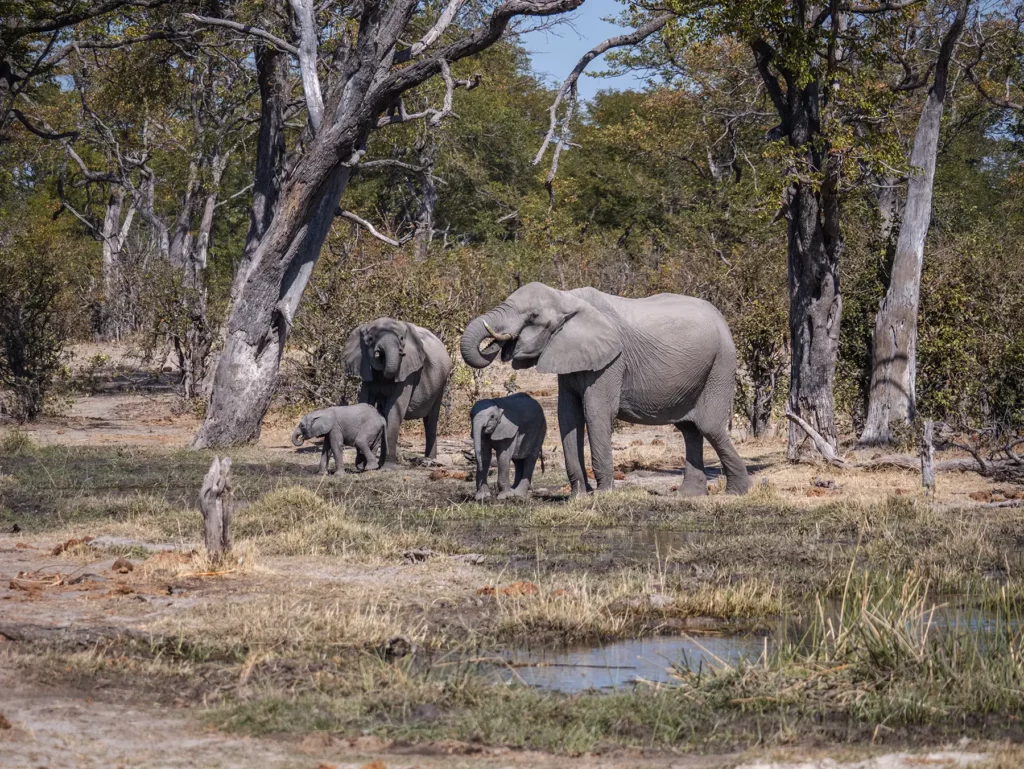
The highlight of the day was lunch time. This is when we settled our picnic chairs on the banks of a river which was quiet when we arrived. However, our guide knew this site well and sure enough, elephants started to appear, putting on a show for us in the river, only a few metres from where we ate our delicious wraps.
We spent several hours at this spot, just relaxing after our lunch.
More and more elephants kept arriving until there were eleven bulls in the water. Things got a little hairy when they started advancing towards us, leaving the river and getting far too close. My heart was pounding in my chest. Our guide, however, was as cool as a cucumber and managed to keep them at bay – I was impressed with how well he understood them.
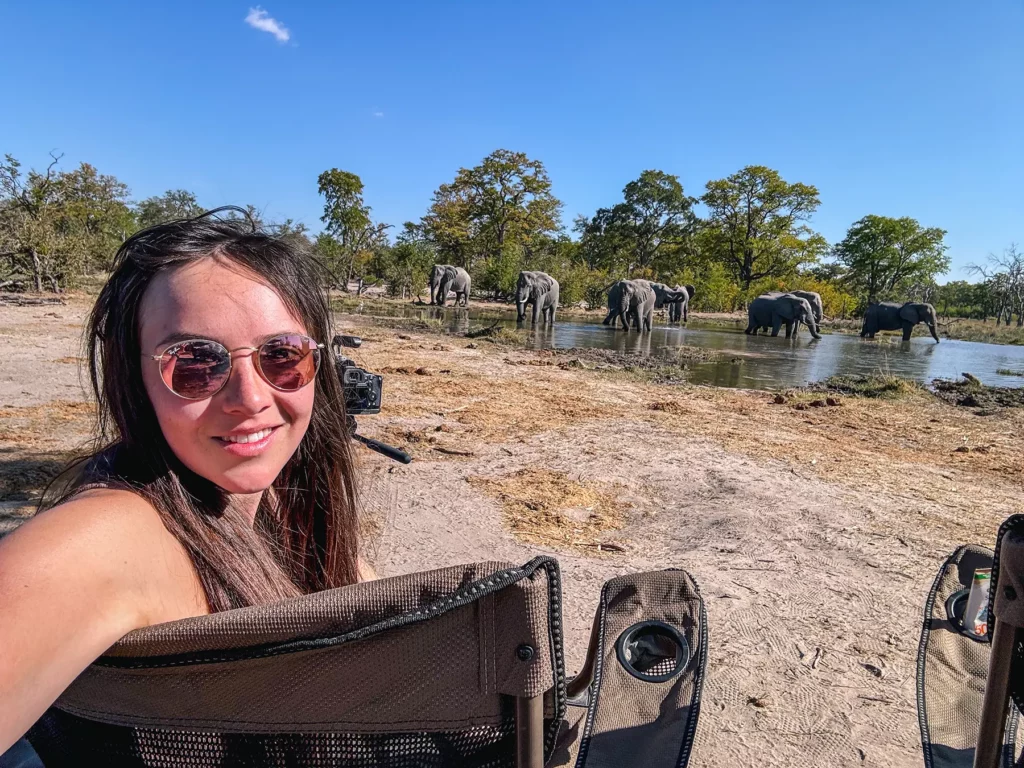
We did all have to shuffle back to the car slowly at one point however, when one particular bull wouldn’t back down and even mock charged. Our guide, Lucas, clapped his hands and all the elephants all turned and fled. What a moment!
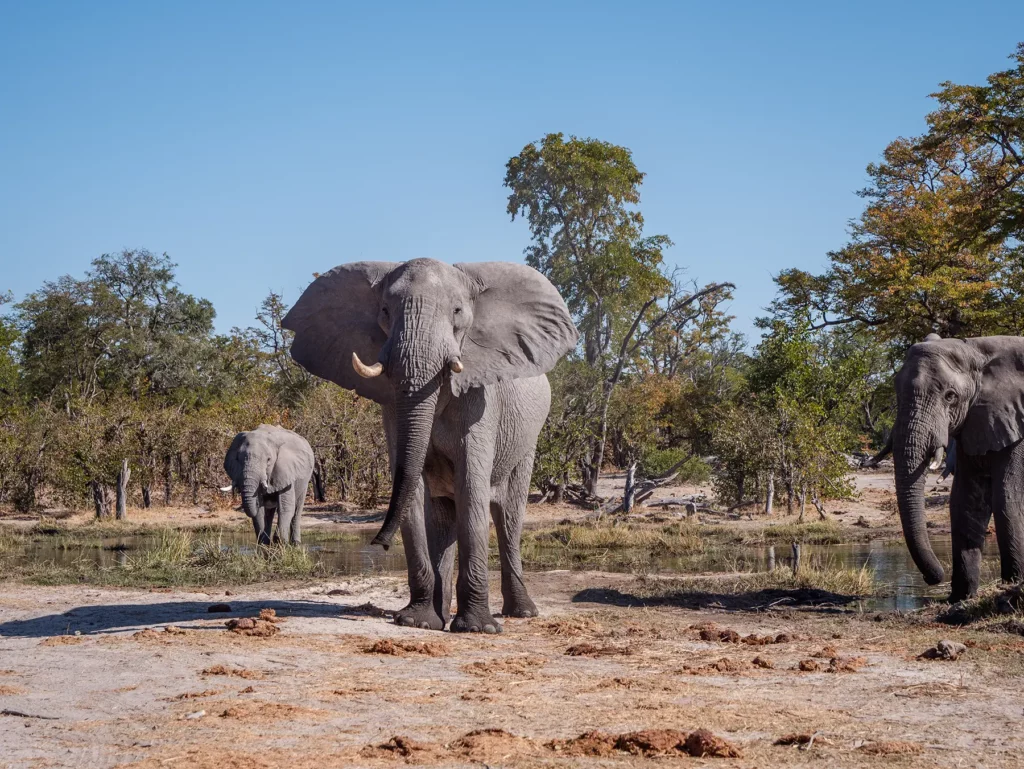
We continued our journey, gradually meandering through Khwai until we reached our camp shortly before sunset. It was a beautiful campsite, all the tents facing a lush river channel. It was as though the camp was the same but had been teleported to a new location – everything was exactly as it had been in Moremi!
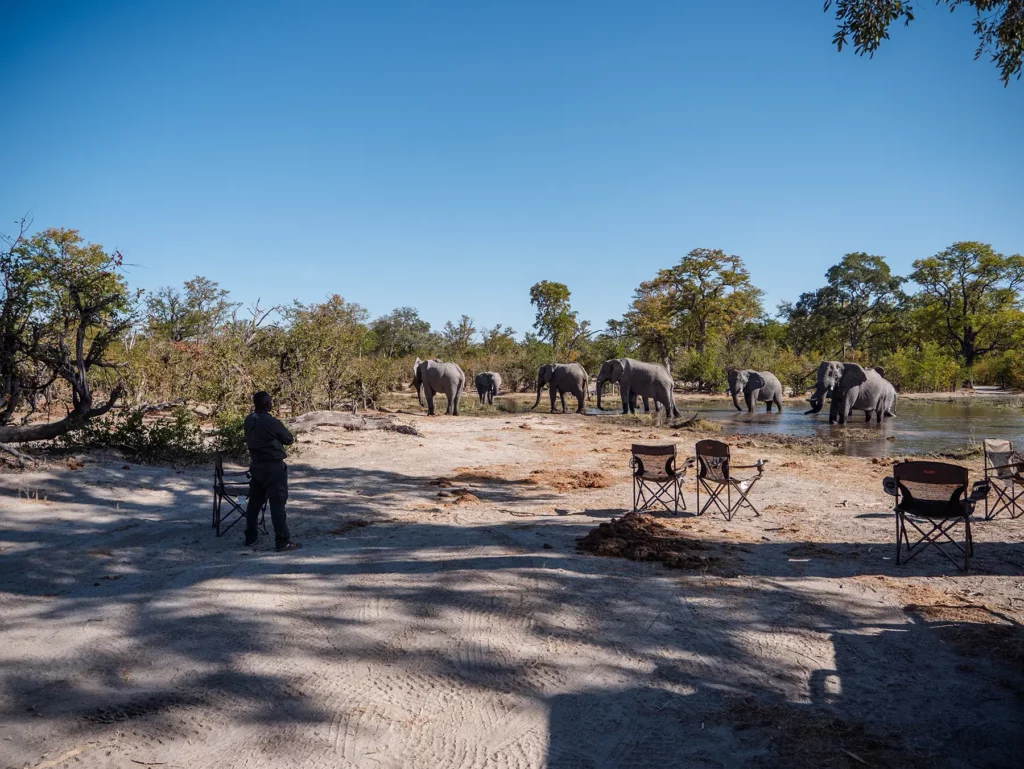
Days 5 – 6: Khwai Community Area
Total drive time (excluding game drives): 0 hours
You’ll be spending two full days in Khwai, giving you the chance to enjoy some serious safari experiences. Both morning and evening game drives are available, as well as a canoe ride for something a bit different.
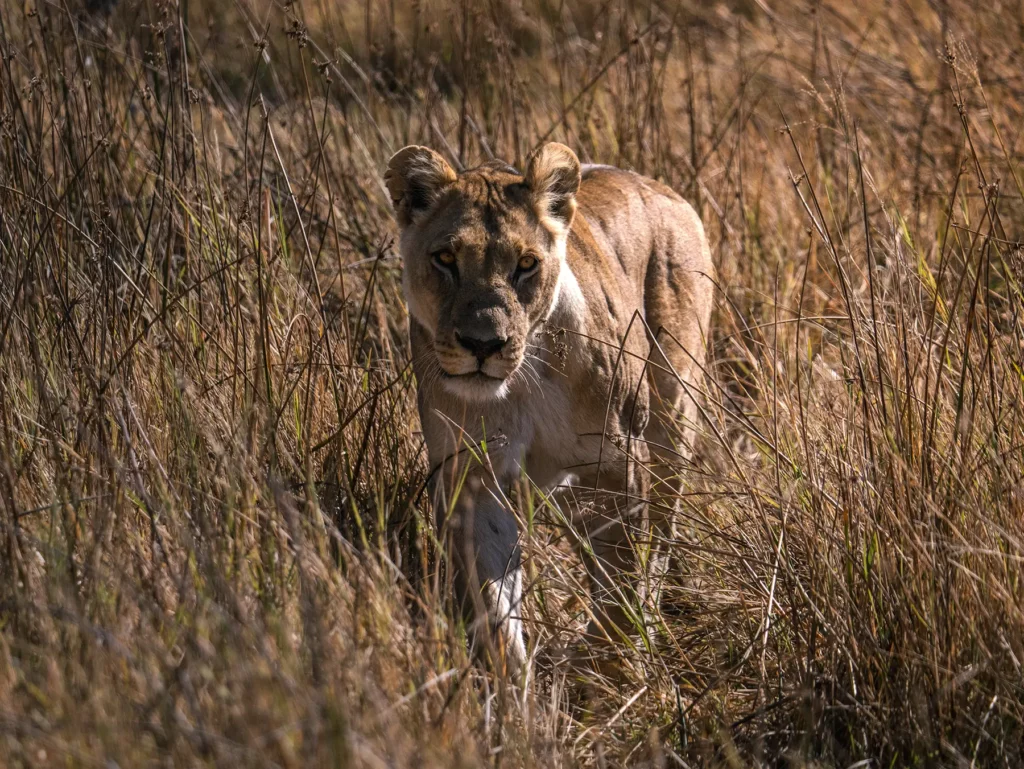
Itinerary
It’s another early start for your morning game drive, to catch the animals when they’re at their most active. This is the best time of the day to try to catch predators in action. There’s a healthy population of leopards here in Khwai as well as a resident pride of lions and pack of wild dogs.
After a few hours exploring different parts of Khwai, you’ll return to your lodge or camp for lunch. Once again, if you’re camping, this is the ideal time to take a shower as it’ll be too cool in the evening.

On your nights in Khwai you’ll embark on evening game drives to try and spot some nocturnal animals such as bush babies and nightjars.
On one afternoon, you’ll feel like a true explorer as you set off into the wilderness on a mokoro excursion. These traditional canoes are the best way to encounter some of the wildlife at close quarters, and you’ll get to see the delta from a different perspective too. It’s a relaxing experience, packed with new discoveries.
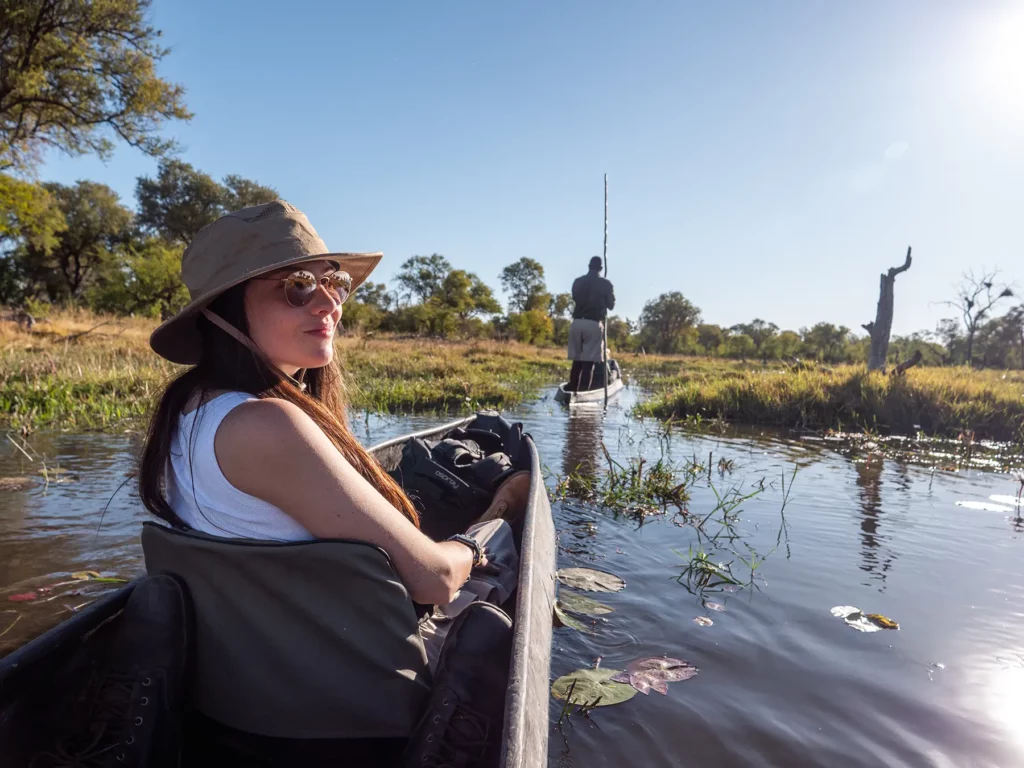
Where to Spend the Night
You’ll stay in the same place as last night, to keep logistics simple and your experience comfortable.
Tips for Visiting Khwai Community Area
As this is the only location in this itinerary that allows night game drives, I highly recommend you make the most of this opportunity and embark on night game drives each night. The wildlife you will see after dark is vastly different to what you encounter in the day.
Camps and lodges in the Khwai Community Area are unfenced, so you may encounter some wild visitors during your stay. Hyenas and hippos in particular like to have a nosey around campsites. A member of staff will escort you around the site after dark, for example, if you are leaving the restaurant to head back to your room.
Khwai is a great destination to visit all year round, and although water levels do rise, there are always places you can go and explore.
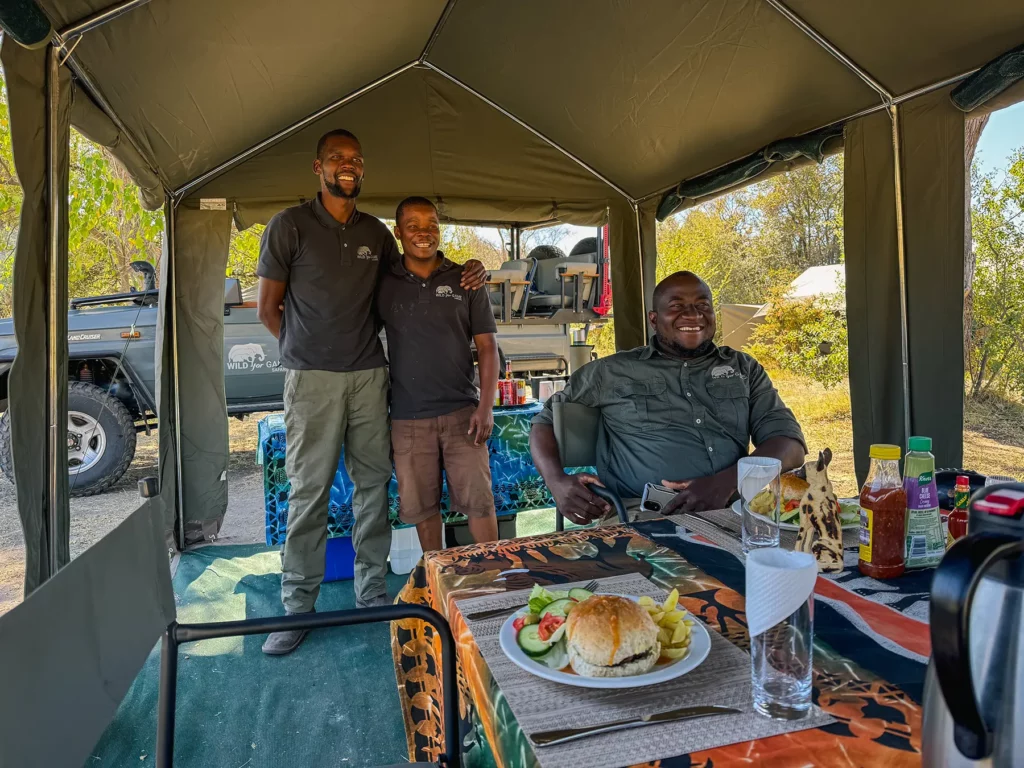
My Experience Visiting Khwai Community Area
I’d heard before visiting that Khwai was a fantastic place to encounter leopards and so I had high expectations. On our first full day in Khwai, whilst out on our afternoon game drive, we came across a partly eaten warthog hanging in a tree. It was fresh and a vehicle beside the tree informed us that the leopard who had killed the warthog had been disturbed whilst eating by a man walking through the bush on foot (please don’t do this!) and abandoned the kill. He was, however, confident that the leopard would return.
And so we waited. And waited. And waited. The sun began to set and the sky turned red and then purple. Whilst there was still some light left, I spotted him in the nearby mopane woodland, sauntering over. The leopard was magnificent – a big male with a long tail which curled over his back. I watched as he approached the tree and then lay down, apparently in no rush to continue feeding.

Eventually, as the sky turned black and we had to result to using our spotlight to see anything, he leapt into the tree and began to feed. A hyena paced beneath the tree, hoping to gobble up any falling scraps. We stayed with him for several hours, mesmerised by this beautiful sighting. We were the first car to watch him come back (the other vehicle had given up waiting at that point) and the last to leave.
The leopard was one of many incredible sightings that we enjoyed on our 4 nights in Khwai. Another favourite sighting was of two lionesses. We found them in the early hours of the morning, not long after 7am and stayed with them all morning, following them as they patrolled and even crossed rivers.
Another memorable moment was when we went to a hyena den one evening and watched as hyena cubs of various ages played with one another. There were two extremely young cubs amongst them, their fur completely brown. As we left the den after sundown, we came across a mother hyena running towards us down the road with the tiniest hyena cub in her jaws, letting out pitiful wails as its mother carefully moved it from one den to another. It was such a beautiful moment.
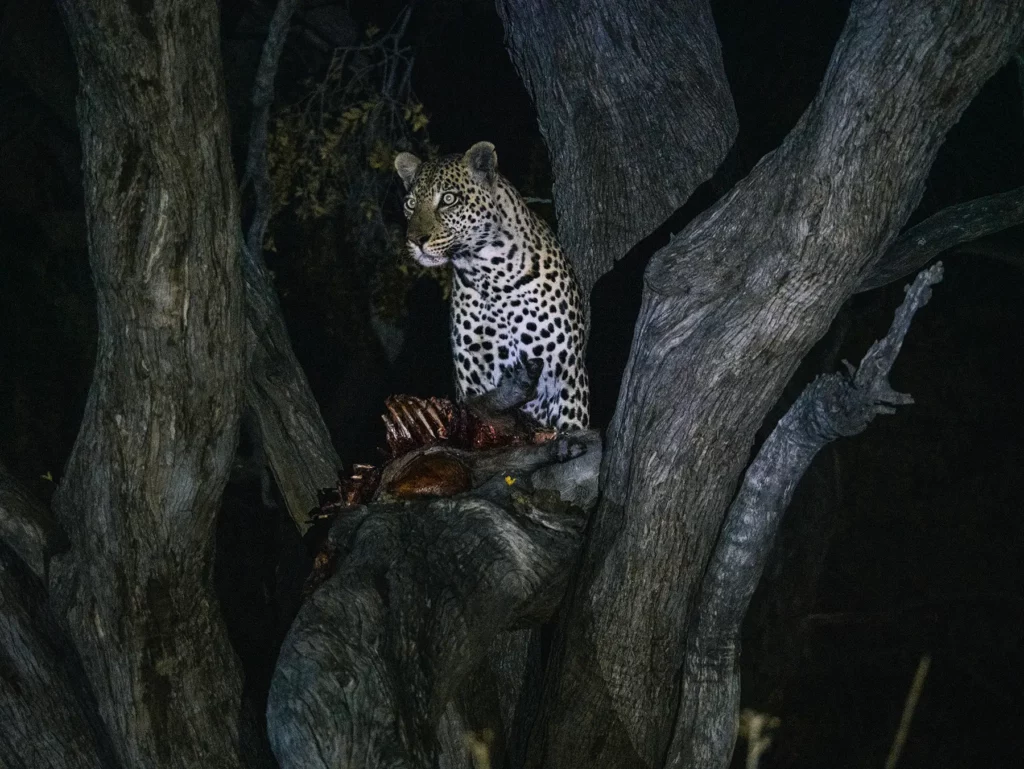
Day 7: Khwai Community Area to Savuti (Chobe National Park)
Total drive time (excluding game drives): 4 hour drive or a 30 minute flight
You’re on the move again today, with a transfer to Savuti in Chobe National Park. You’ll enjoy game drives in both Khwai and Savuti, with a scenic journey between the two for a bit of variety.
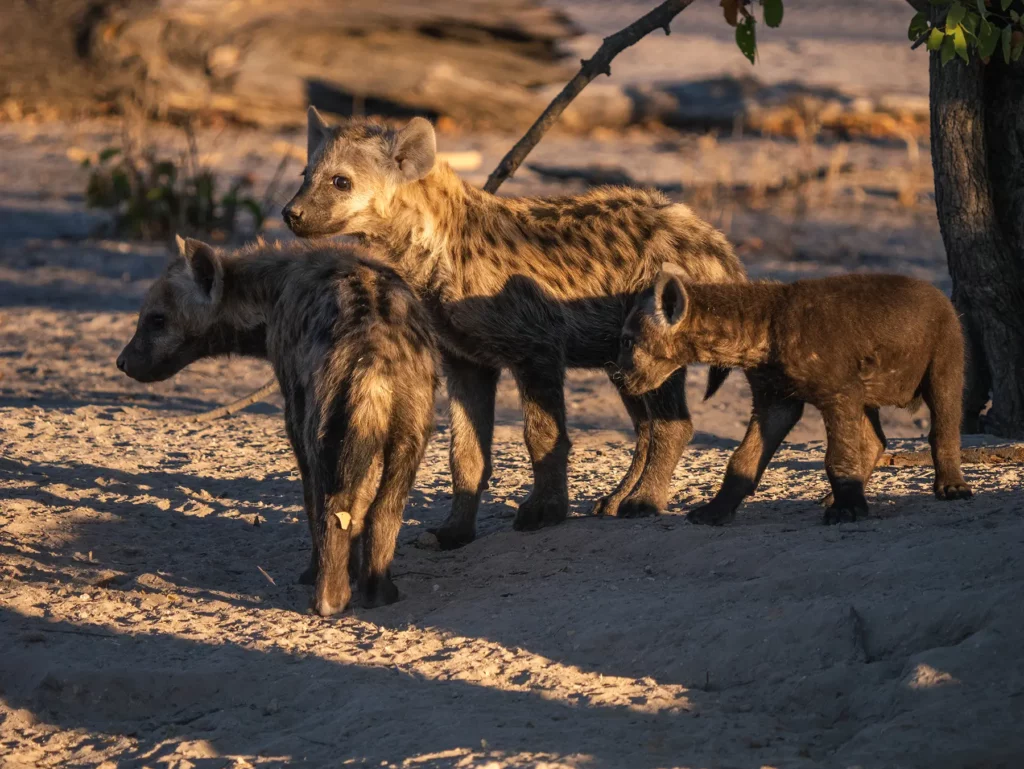
Savuti (Chobe National Park) Map
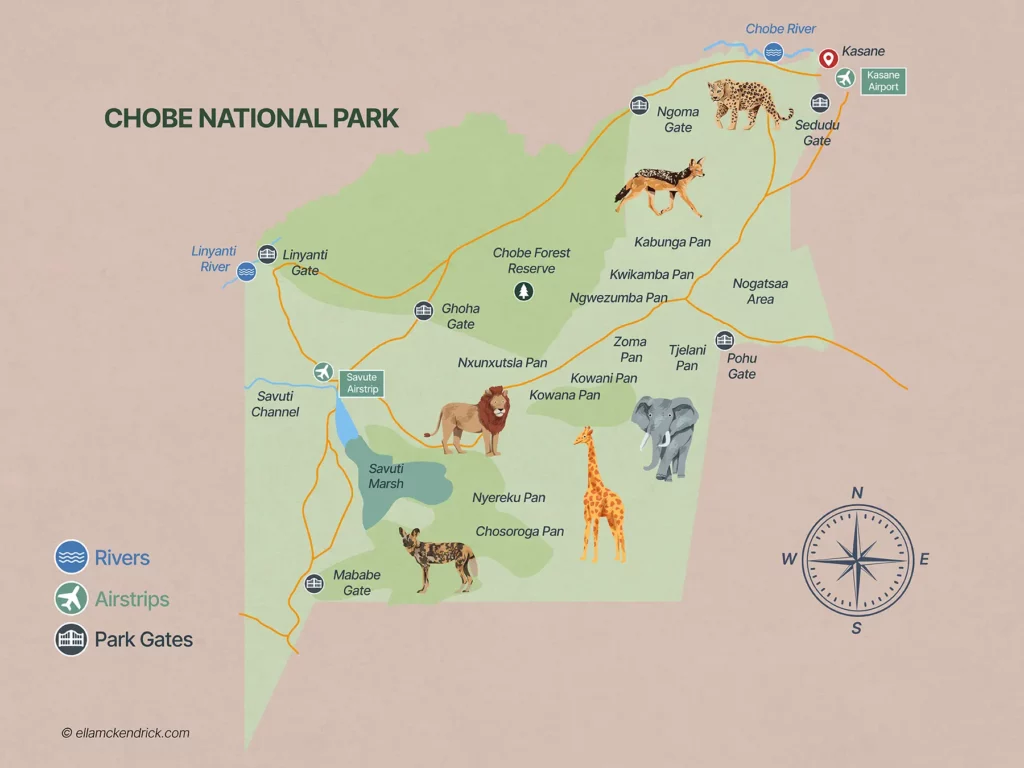
Itinerary
The day starts with another game drive in Khwai, so you can tick off a few more animals and perhaps visit new areas that you haven’t yet explored. Then it’s time to head over to Savuti, which is in the famous Chobe National Park.
If you want to prolong your safari experience, then the best way to reach Savuti is by land. You’ll enjoy a slow drive through the reserve, enjoying animal sightings along the way. This is a game drive and transfer in one! Keep an eye out for giraffes – we saw so many on this drive!
Alternatively, if you’d prefer to cut down on travel time and get to Savuti a bit quicker, you can take a bush flight. It takes just half an hour to fly, and you’ll enjoy some fantastic aerial views of the reserves down below.As before, if you’re on a mobile safari, you’ll stop for lunch at a scenic picnic spot during the drive to Savuti. Or, if you’re staying at a lodge, you’ll be greeted by a hot lunch on arrival.Finish the day with an evening game drive in Savuti in a 4×4 vehicle with a local guide.
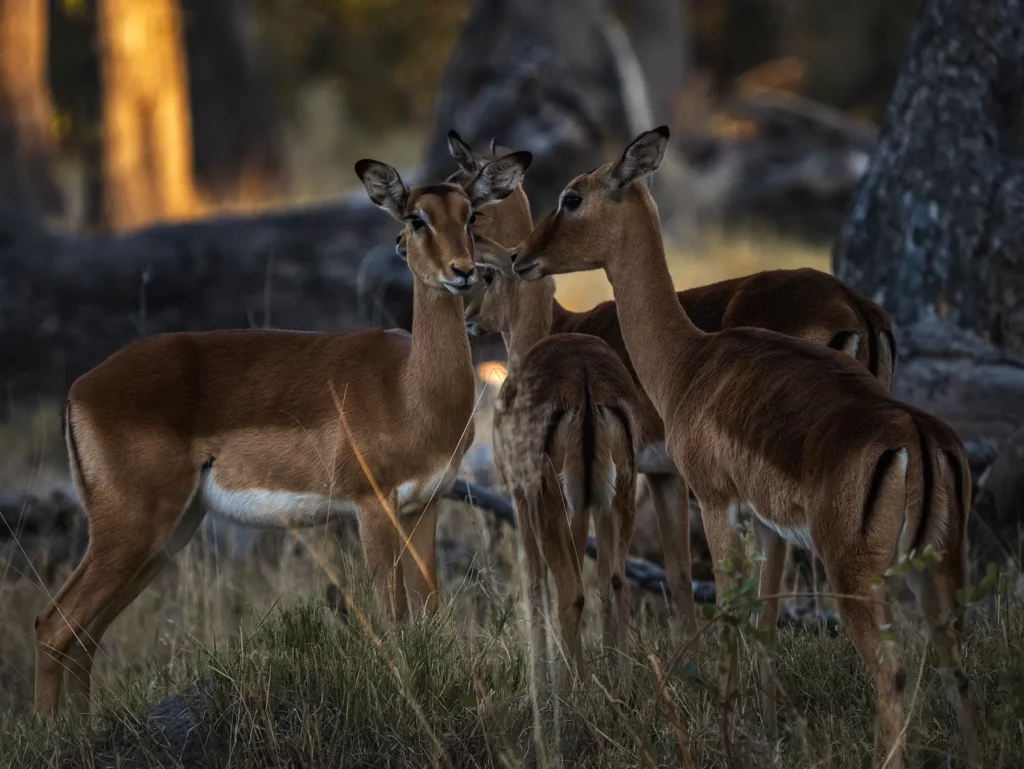
About Savuti (Chobe National Park)
Savuti lies in the west of Chobe National Park and spans over 6,200 square miles. Known as the ‘Savuti Marsh’, this area was once home to an enormous lake. Tectonic movements cut off the water supply to the lake, causing it to dry up, but the river remained. The Savute Channel can be unpredictable, sometimes flowing, and sometimes drying up completely. As of 2024 it has remained dry for over 10 years.
Besides the river area, Savuti boasts several different habitats including mopane woodlands and grassy savannahs. These ecosystems support a wide variety of species like lion, leopard, wild dog, elephant, buffalo, giraffe, and plenty of plains game. You may also witness the zebra migration as it moves down from northern Botswana, although timings tend to be a bit sporadic.Savuti is famed for its birding too, with over 450 species to spot. Popular sightings include the secretary bird, the kori bustard and the red-billed francolin. If you’re here in April, look up and you may see huge flocks of quelea finches.
The greater Chobe National Park is probably Botswana’s most visited safari destination. It’s known for its huge herds of elephants as well as a show-stopping variety of other wildlife species.The waterways in Chobe make for great river cruises where you can spot animals at close range. For something different, visitors to Chobe can stay in houseboats as an alternative to traditional lodges or camps.
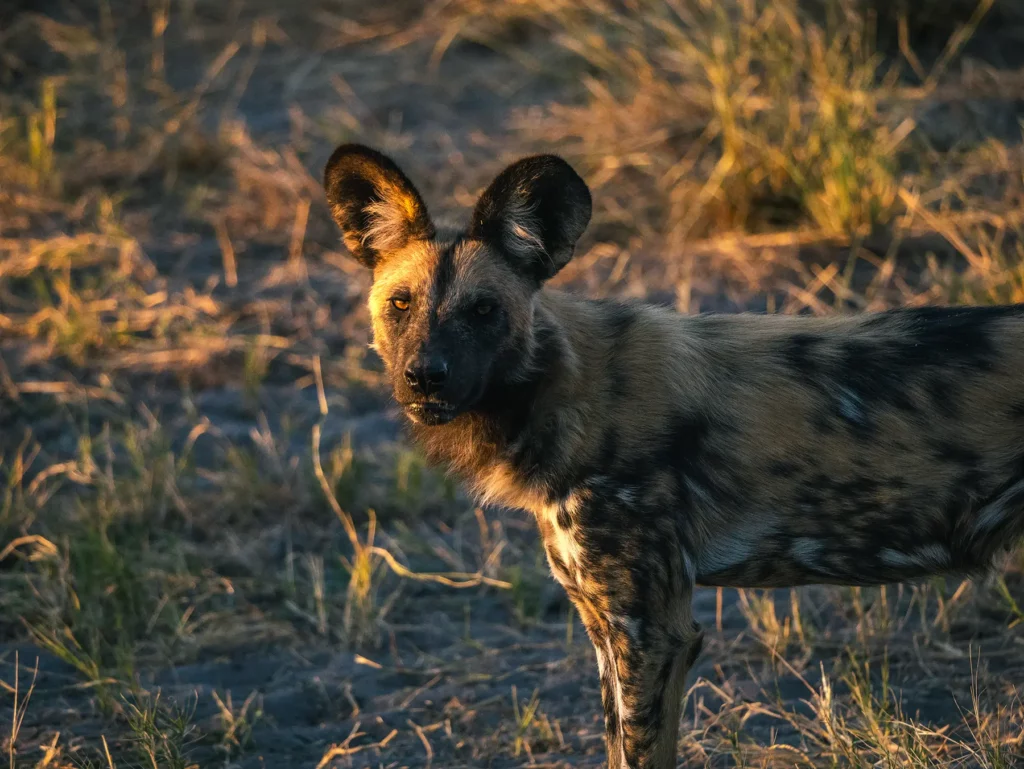
Where to Spend the Night
If you’re on a mobile safari, you’ll know the drill by now. Your camp comes with you and will be rebuilt at the new site in Savuti. You’ll be expected to help with the set up if you’re on a budget safari, but if you’ve booked a more luxurious camping experience, it will all be ready for when you arrive.
In terms of lodging, there are several luxury options within Savuti that will place you in the heart of the wilderness. For an upscale stay, choose from accommodation like Savuti Safari Lodge, Belmond Savuti Elephant Lodge, or Ghoha Hills Savuti Lodge. Or, if you want to sleep in style under canvas, Camp Savuti is a popular choice.Tips for Your Moving Day to Savuti
As with your moving day between Moremi and Khwai, I’d recommend packing your bags the night before so you can leave swiftly and without a hitch the following morning.
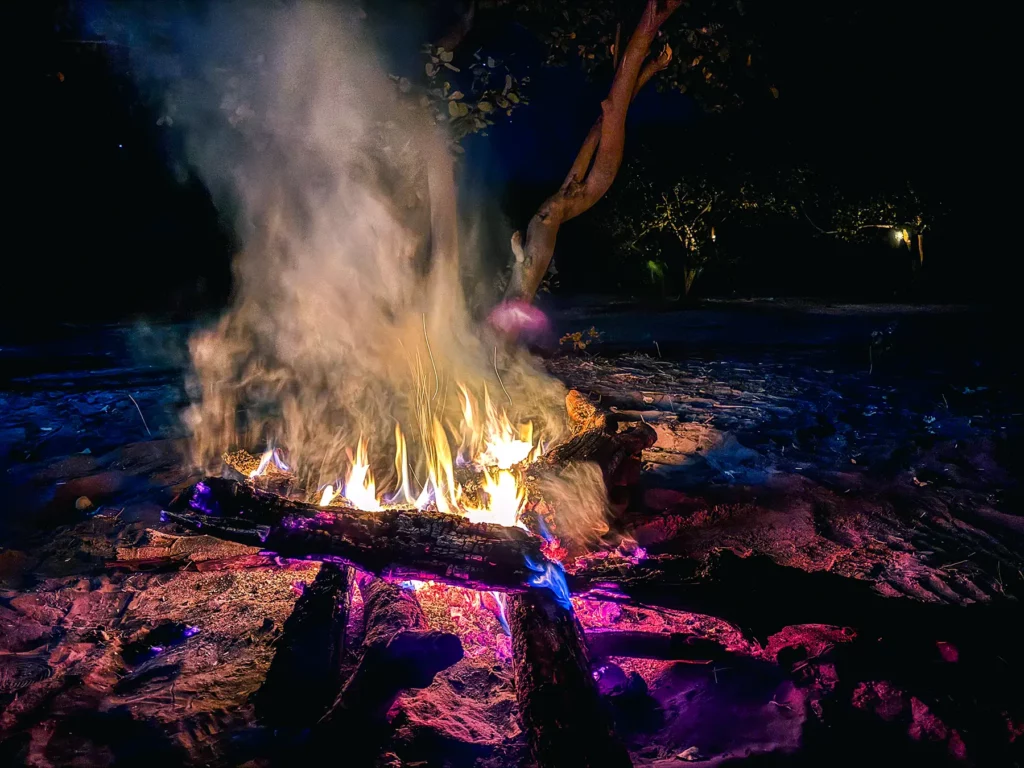
If you’re on a mobile safari, ensure your bags are safely in the 4X4 vehicle before breakfast, allowing your team to start dismantling your tent whilst you’re having your morning coffee or warm porridge.
The drive is long, often starting between 6:30am and 7am and lasting until 5pm or sometimes even longer if you encounter some excitement on your afternoon game drive. I didn’t reach camp until 6:30pm and so was out for a full 12 hours!
Prepare for the long drive with pillows, headphones, snacks, plenty of water and whatever else you require. If you’re on a mobile safari, your tour operator will likely have some snacks and cool drinks in the vehicle already so you can enjoy a Coca-Cola or cold juice as you drive.
The landscape that you’ll encounter between Khwai and Savuti is spectacular so have your cameras at the ready. You’ll head through the Mababe Depression which is a wide flat expanse of savannah. Through the haze you’ll see giraffes on the horizon-line which I found very atmospheric.

Journeying from Khwai to Savuti
My journey to Savuti started with a final game drive in Khwai. We meandered through the Dead Tree Forest to the east of Khwai. The expanse of dead trees seems to go on forever but within this desolate landscape is a lot of life. We saw two cheetah brothers racing after a herd of zebras, dust being kicked up and forming a huge cloud which seemed to engulf everything and throw the cheetahs off their hunt. After their unsuccessful attempt, they trotted into some dense bushes and were impossible to find again.
The road to Chobe wasn’t far away and before long we were officially within the national park. We had a quick tea and biscuit stop beside the Khwai River with some curious zebras and waterbucks only a hundred yards or so away, watching us with intent. Then we were off again, our next stop for lunch on the edge of the Mababe Depression.
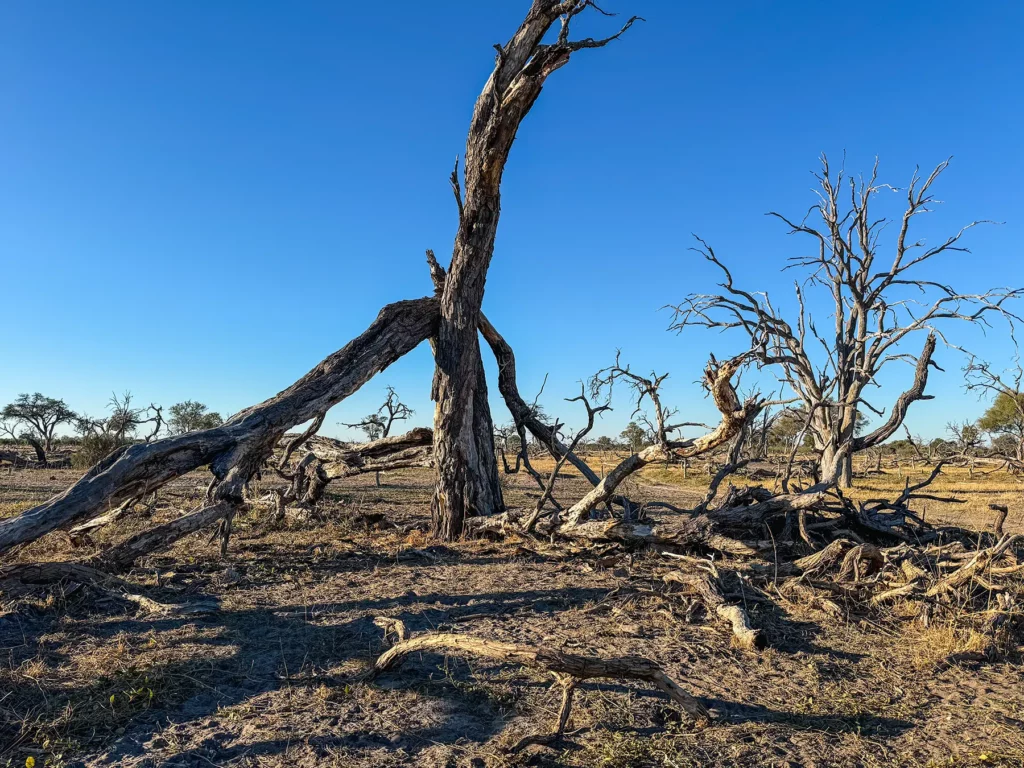
We saw so many giraffes on our drive to Savuti including several young ones who were lying down. I’ve never seen a giraffe lying down before!
The landscape in Savuti is different to anything we had seen so far in Botswana. So far everything had been very flat and there were numerous waterways. Here the landscape was bone dry and for a while the only animals that we encountered were steenboks, small antelope who don’t drink any water as they get it entirely from their diet. For the first time we saw rocky hillocks of volcanic origin dotting the landscape and I couldn’t help but marvel at their beauty.
Although it had been a long day of travel, we weren’t ready to head to camp just yet, and so we enjoyed an afternoon game drive. Our guide took us to the den site of my absolute bucket-list animal – African wild dogs. I was overwhelmed with emotion as we saw the dogs. There were a handful of them sleeping. Then suddenly they got up and started greeting each other, squeaking excitedly as nine tiny puppies emerged from the den. It was a beautiful way to end our day on the road.
We wanted to stay with the dogs as long as possible and so didn’t make it back to camp until just before 6:30pm. I showered in the last rays of light and was pleased that Savuti seemed to be quite a bit warmer than Khwai and Moremi and so didn’t freeze to death! The further north you go in Botswana, the warmer it gets.
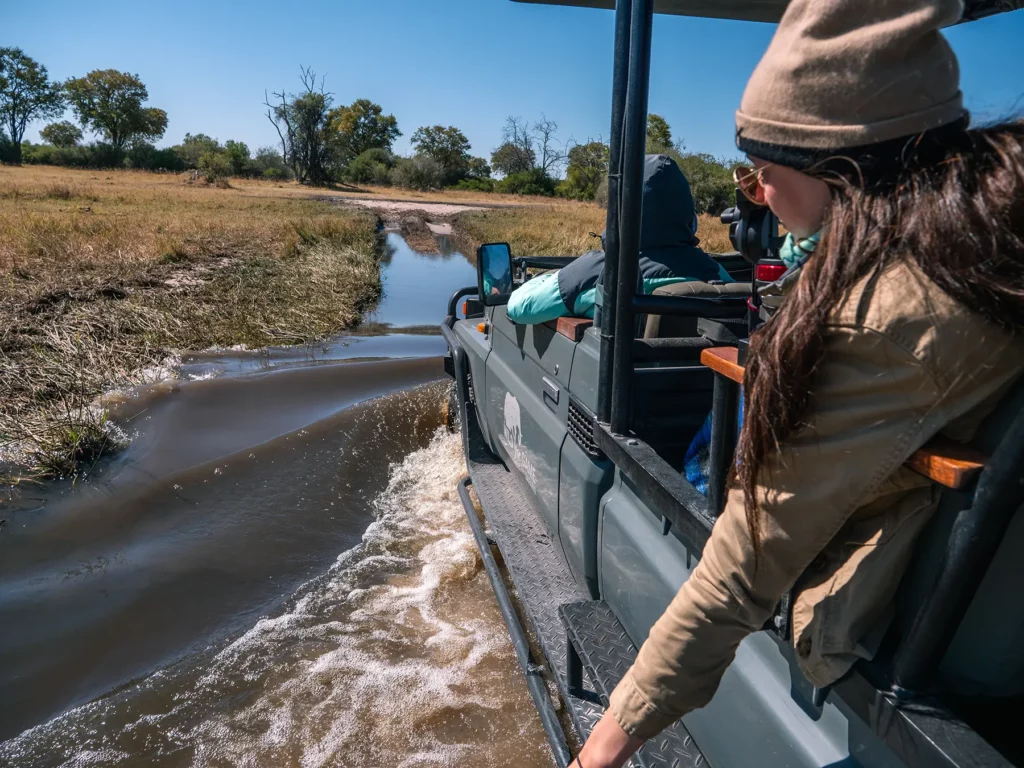
Days 8 – 9: Savuti (Chobe National Park)
Total drive time (excluding game drives): 0 hours
You have two full days to explore Savuti with your guide. You’ll enjoy a couple of game drives at different times each day, spending several hours out in the bush.
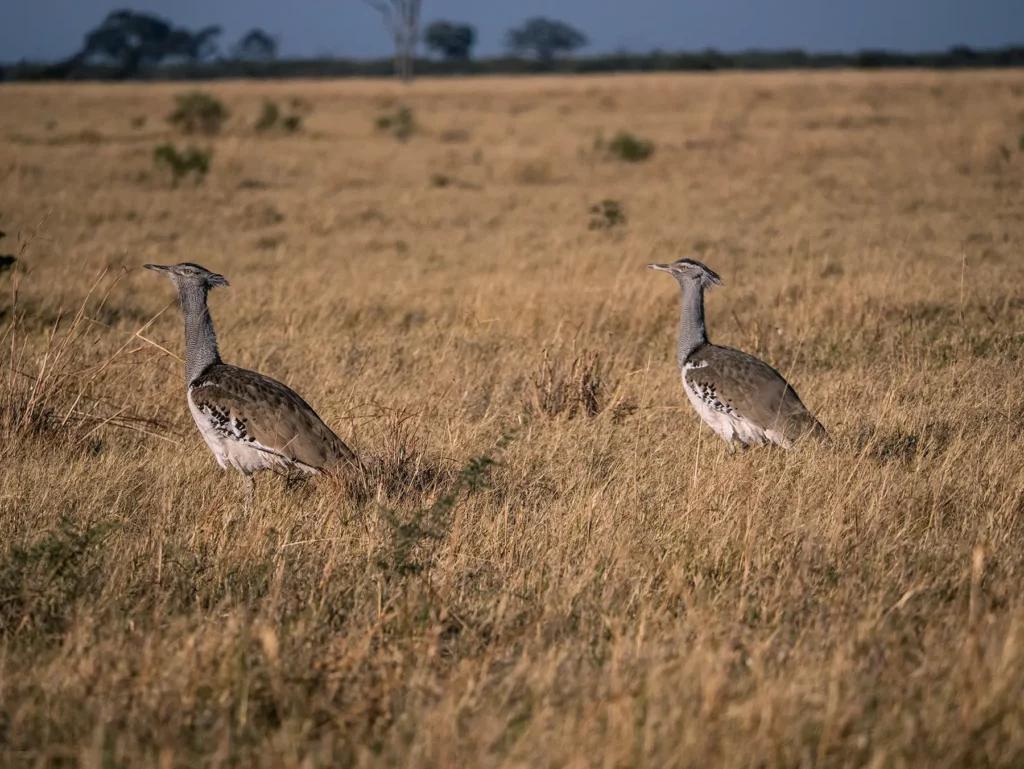
Itinerary
Your early morning game drive begins at 6:30am, which is the prime time to see wildlife at its most active. Keep a lookout for lions and leopards as they are extremely active at this time and Savuti has healthy populations of both. If you’re lucky you may even witness a hunt.
At 11:30am you’ll return to your camp or lodge for lunch and some downtime. You can spend this relaxing or making use of the accommodation facilities. If you’re mobile camping, you can grab a hot shower while the day is still warm and then kick up your feet and read a book, or take a nap to recharge your batteries.
Then it’s time to head out on your evening game drive, which usually lasts between 3:30pm and 6:30pm. It’s cooler at this time of day, which is good news for both you and the animals. It’s a great time to witness wild dogs on the move as they love hunting at this time. Lions are also pretty active at this time and you may witness them walking down the roads to one of the three man-made watering holes in Savuti. You’ll return for dinner at your lodge or camp.Where to Spend the Night
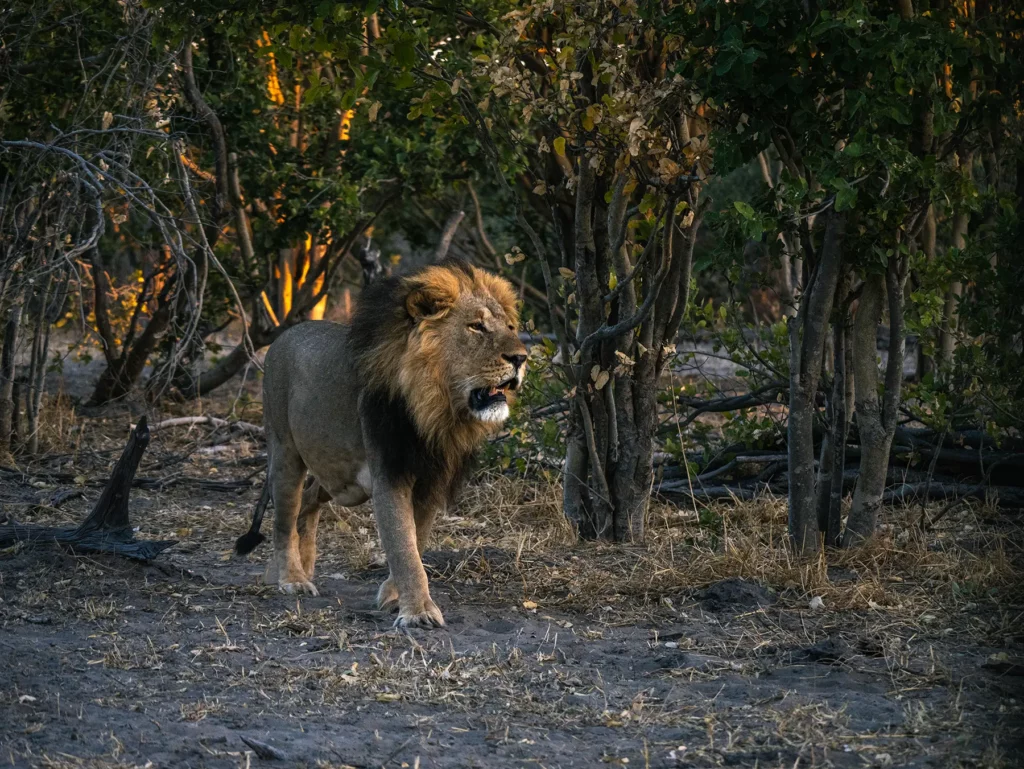
Tonight, you’ll be returning to the same camp or lodge where you stayed last night.
Tips for Visiting Savuti (Chobe National Park)
It gets cold at night, so make sure you pack warm clothing for the evenings. This is especially important if you’re mobile camping. Many camps will provide blankets and hot water bottles when necessary, but it’s advisable to take warm sleepwear to stay cosy.During the day, temperatures can fluctuate, and it’s often quite chilly in the mornings.
I always wear multiple layers so I can take some off as the day warms up. These usually include a jacket or jumper, a shirt, and sometimes a vest top underneath to give me options according to how hot it gets out in the bush.Most camps and lodges in Savuti aren’t fenced, so don’t go wandering around alone after dark. If you want to leave your room or need escorting back from the restaurant, a member of the team will be on hand to guide you back safely.
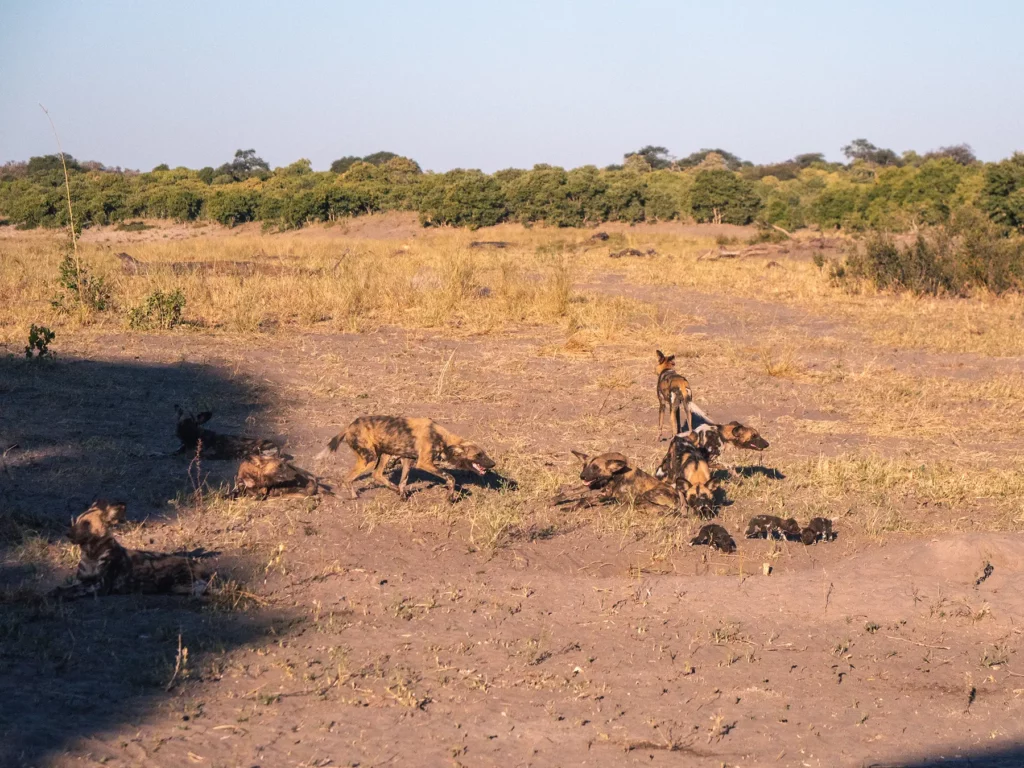
I set-up a trail camera at night to see what kinds of animals came snooping around our campsite after dark. I was able to capture a hyena, an African civet and a pair of curious honey badgers. I was so pleased that I thought to bring my trail cam and so if you’re also curious to see what critters wander past your tent at night, I’d highly recommend bringing one. Just be sure to strap it to a tree that’s out of reach of a nosy hyena as they love to chew!
The wider Chobe area is in a malaria zone, so antimalarial medication is a good idea. Talk to your healthcare provider before your trip to decide which type is best for you. Also, remember to wear insect repellent to deter the mosquitoes.
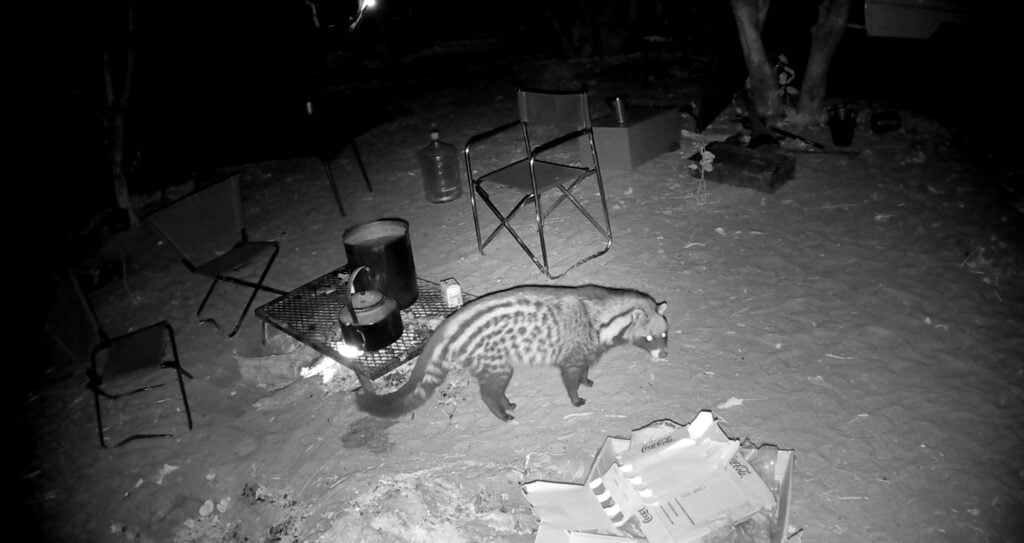
My Experience Visiting Savuti (Chobe National Park)
I can confidently say that Savuti is my favourite safari destination in the world! I can only apologise to Serengeti, who remained my favourite for several years, up until I set foot in Savuti. Don’t worry Serengeti, you’re still my number two!
I definitely think that the sightings you have influence how fond you are of a place and I had some of my best ever wildlife sightings in Savuti.
To start with, Savuti was where I had my first ever African wild dog sighting. We rocked up at an active den on my first evening in Savuti and witnessed the dogs playing, greeting one another and the alpha female’s pups even made an appearance, drinking milk and wandering around on clumsy legs.
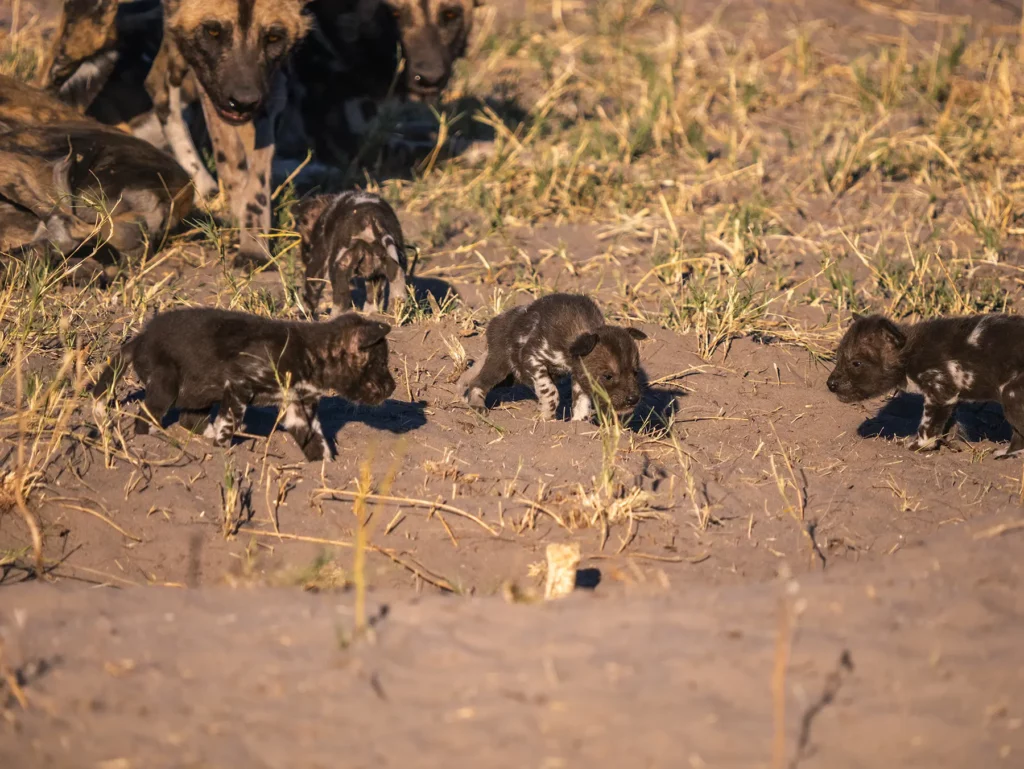
Knowing where they were based, we made it part of our routine to visit the den every evening during our stay in Savuti and it was never disappointing. We even witnessed the pack head out to hunt, coming across a family of elephants including a calf. The dogs rounded on the calf, excited at the prospect of a meal but the elephant family were protective and chased the dogs off.
I also had some incredible lion sightings in Savuti. There are two main prides in the Savuti region, the Northern Pride who are based near the camps and lodges in Savuti and the Marsh Pride who live in the marsh.
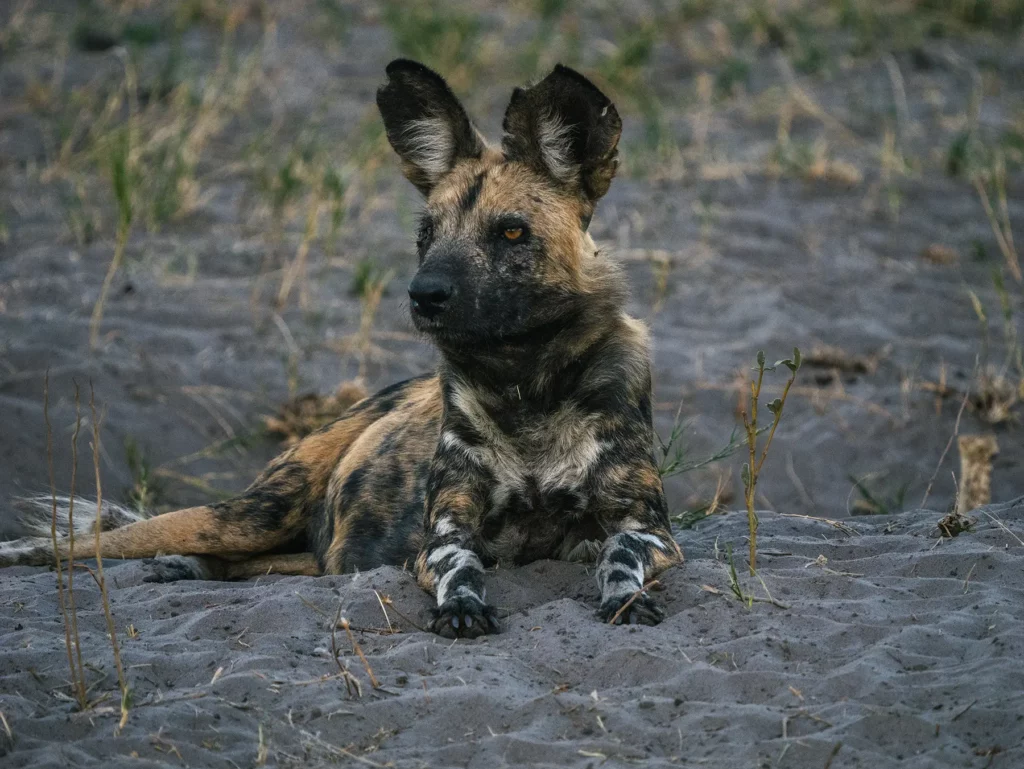
We could hear the Northern Pride roaring every night whilst we slept and would find them each morning just a short distance away from camp. One morning we encountered a lioness from the Northern Pride as she drank from the waterhole and then went to feed on an elephant carcass. We found the rest of the pride later that morning with yet another elephant carcass. Another morning we found one of the pride males, Waziba, as he patrolled his territory, scent marking and roaring as the sun rose behind him. It was a really magical sighting!
We came across the Marsh Pride as well. On this particular day, the pride had been extremely successful at hunting and had taken down two wildebeest! One of the pride males, Gaam, was guarding one of the kills whilst the other pride male, Tsunami, as well as a female were eating the other kill.
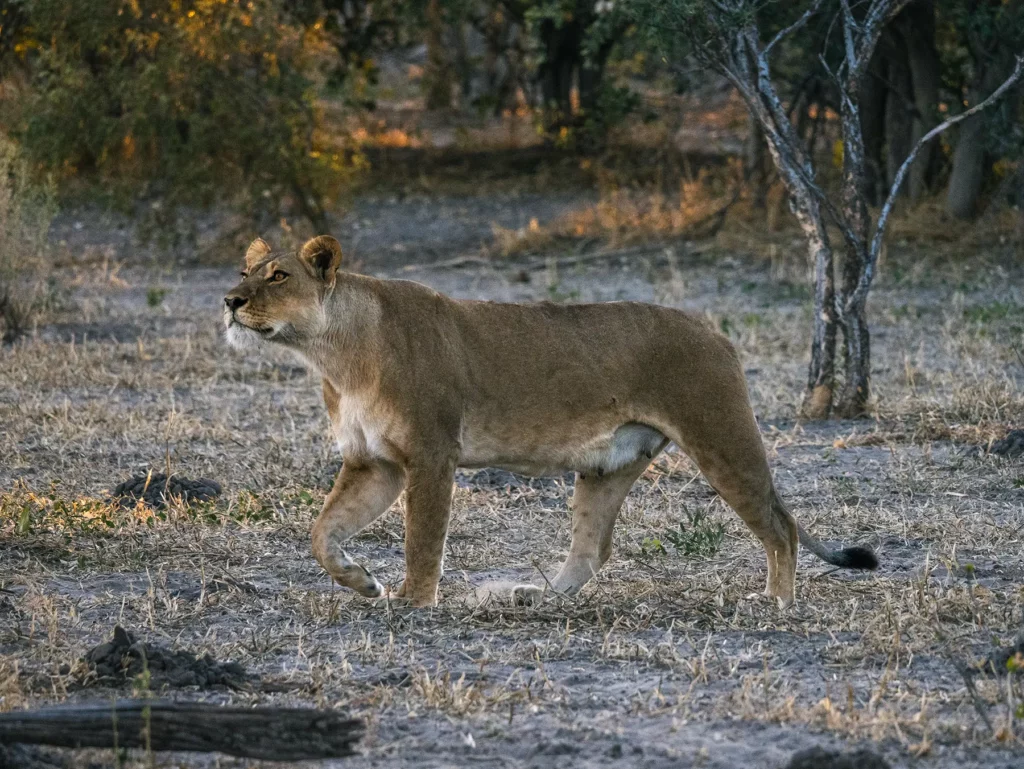
Day 10: Chobe Riverfront
Total drive time (excluding game drives): 4 hour drive or 30-45 minute flight
Today you leave Savuti and travel up to Chobe Riverfront for a relaxing water excursion. You’ll cruise along the Chobe River and enjoy lunch in Kasane, before ending your Botswana safari.
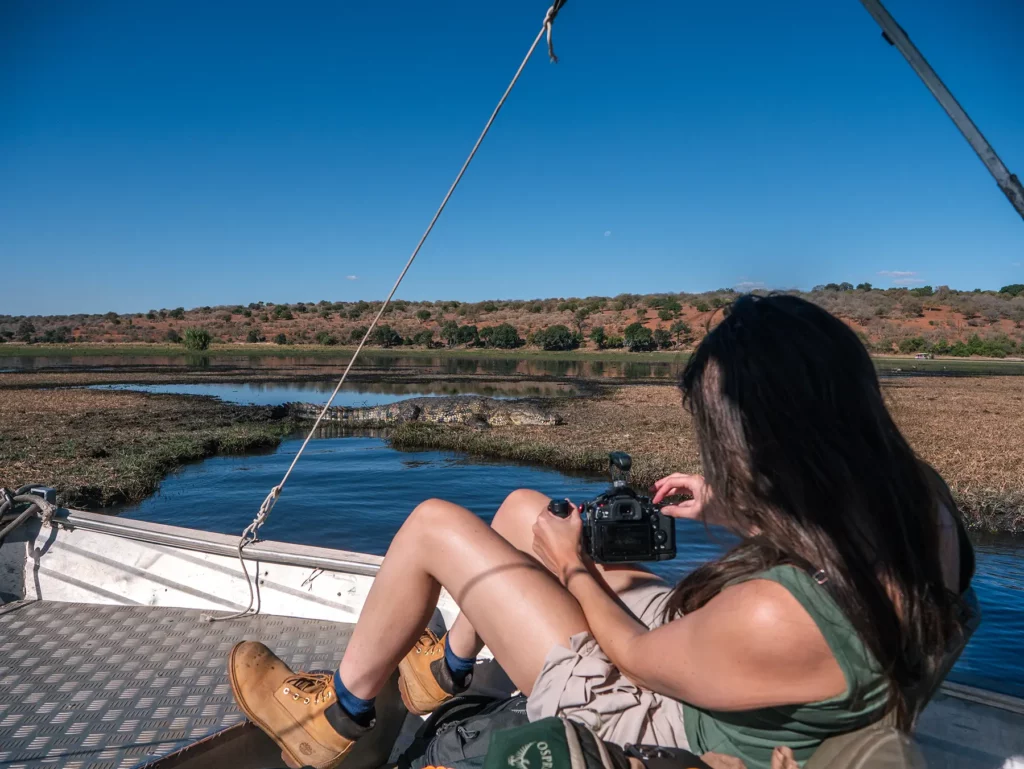
Itinerary
This morning you’ll head off on your final safari adventure, and it might just be the best one yet. You’ll enjoy a scenic 4-hour drive from Savuti over to the town of Kasane, which lies up in the northeast of Botswana near the border with Namibia, Zimbabwe and Zambia. You can fly if you prefer, with flights taking less than an hour.
After lunch in a café or restaurant in Kasane, you’ll hop on a boat cruise at Chobe Riverfront. This is a great way to see hippos, crocodiles and elephants up close without disturbing them, as well as other animals that congregate along the riverbank.
Back on dry land, you’ll return to Kasane, where you can either spend the night or fly home.
About Chobe Riverfront
Chobe Riverfront runs along the northern boundary of Chobe National Park. It’s flanked by grassy plains and dense forests, with the river attracting wildlife from miles around. Huge numbers of elephants, lions and buffalos are often spotted, as well as plentiful hippos and other plains game.
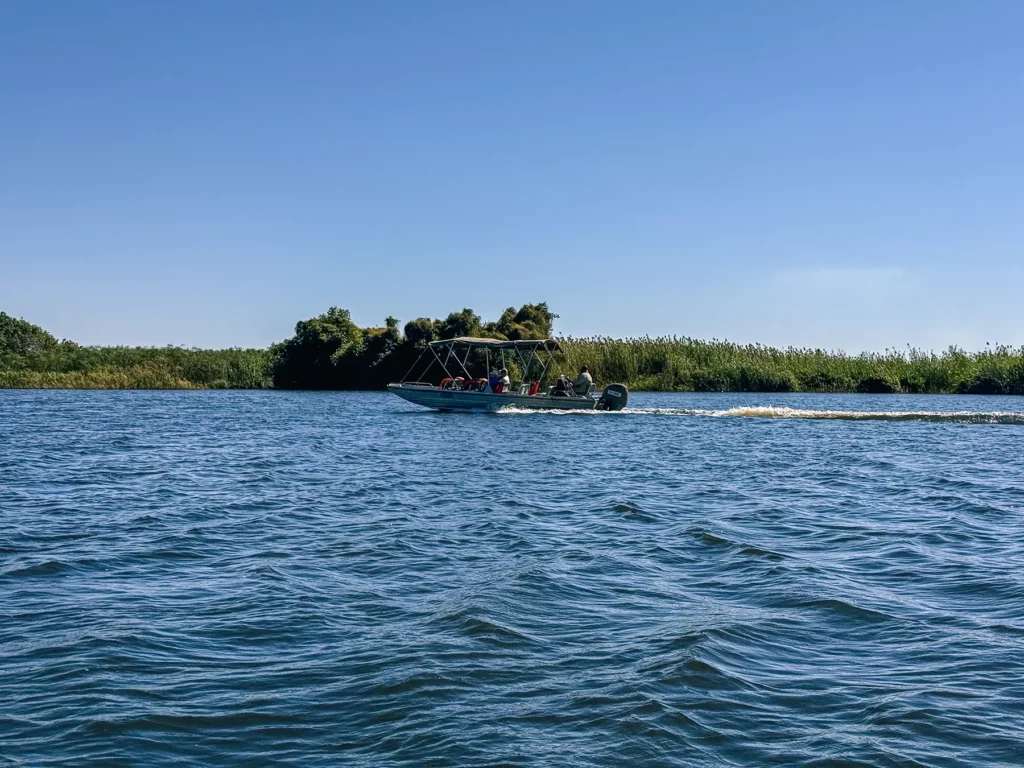
Wildlife viewing here is exceptional, with some of the densest animal populations in the country. The Chobe River is the main water source in the area, so it’s a bit of an animal hotspot. Most safari activities focus on the river, as it gives great access to otherwise inaccessible parts of the park.
Boat safaris give you front-row seats to unrivalled animal encounters, and great vantage points for photos too. It’s a fun way to explore, and you’ll see things that you’d probably miss if you were travelling in a vehicle. An afternoon cruise is the best time to catch elephants swimming and playing in the water, so make sure your camera batteries are fully charged.Where to Spend the Night
Unless you have an evening flight out of Kasane, you will spend the night here in town. There are several lodges and guesthouses to choose from, depending on your budget. Many have outdoor pools, lush gardens, and views out over the river. Chobe Marina Lodge, River View Lodge, and Sunbirds Hotel Chobe are popular options.
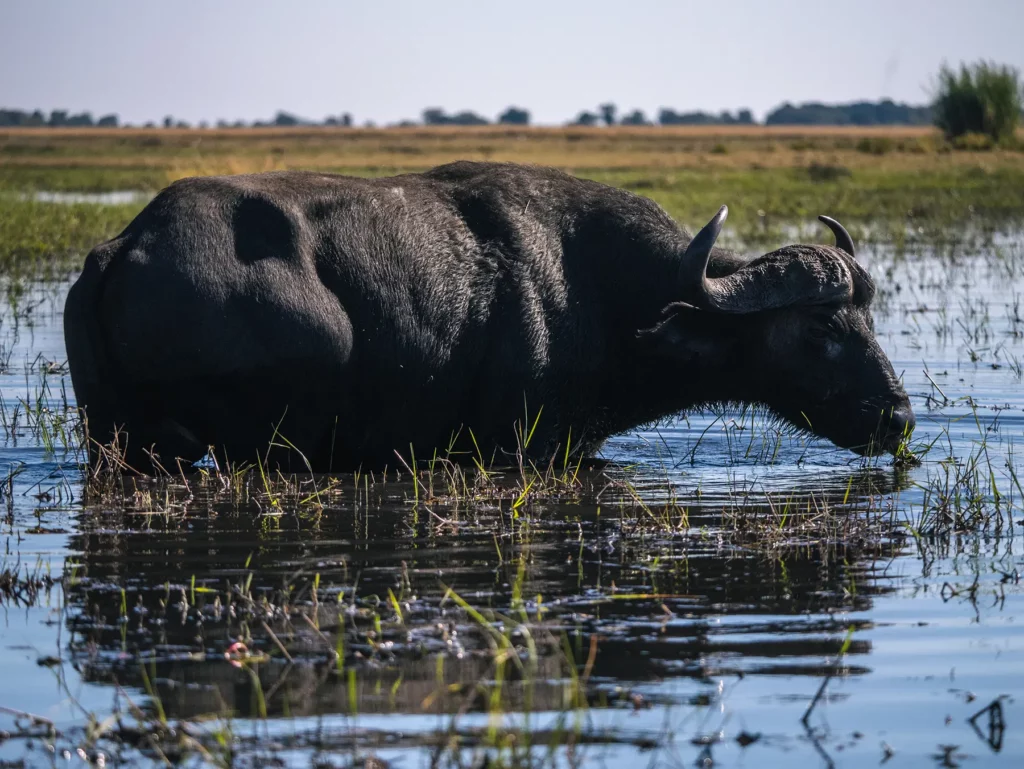
Tips for a Chobe Riverfront Boat Cruise
Take some binoculars – birdwatching here is phenomenal throughout the day, with species like bee-eaters, storks, oxpeckers and hornbills frequently spotted. Your guide will be happy to let guests use their binoculars, but it’s best to have your own so you don’t need to share.
Boat cruises tend to last around 3 hours, so you’ll be out on the water for some time. The boats usually have a canopy to protect you from the sun, but you should take sunscreen too and a sun hat or cap.
Many operators will provide drinks on board but check before you head out and take some water with you if needed. You might want to carry a few snacks too, depending on the size of your lunch.
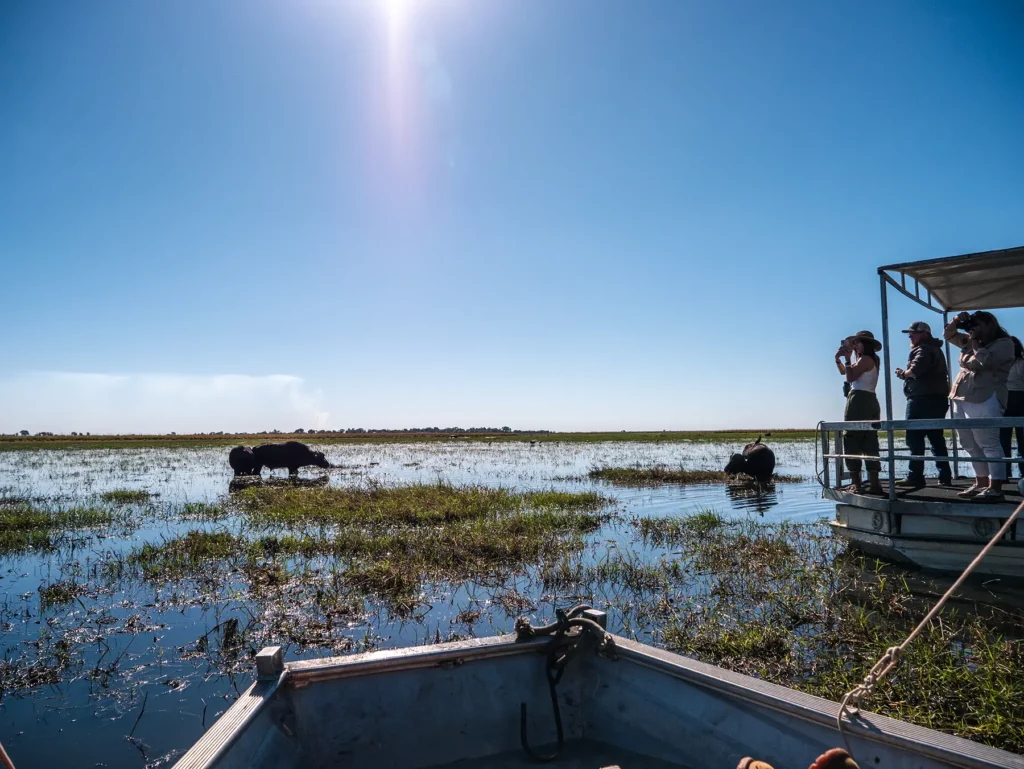
My Experience on a Chobe Riverfront Boat Cruise
I found an afternoon river boat cruise was the perfect way to end my Botswana safari. Taking to the water is so relaxing and the water was extremely calm, making for a smooth ride. I saw so many animals from the comfort of the boat, including some male buffalos who were accompanied by water birds such as herons and cormorants.
I also saw some of the largest crocodiles I’ve ever seen! On multiple occasions our driver took us pretty close to some huge crocs who were basking in the sun. I was surprised just how little the crocs seemed to mind our presence.
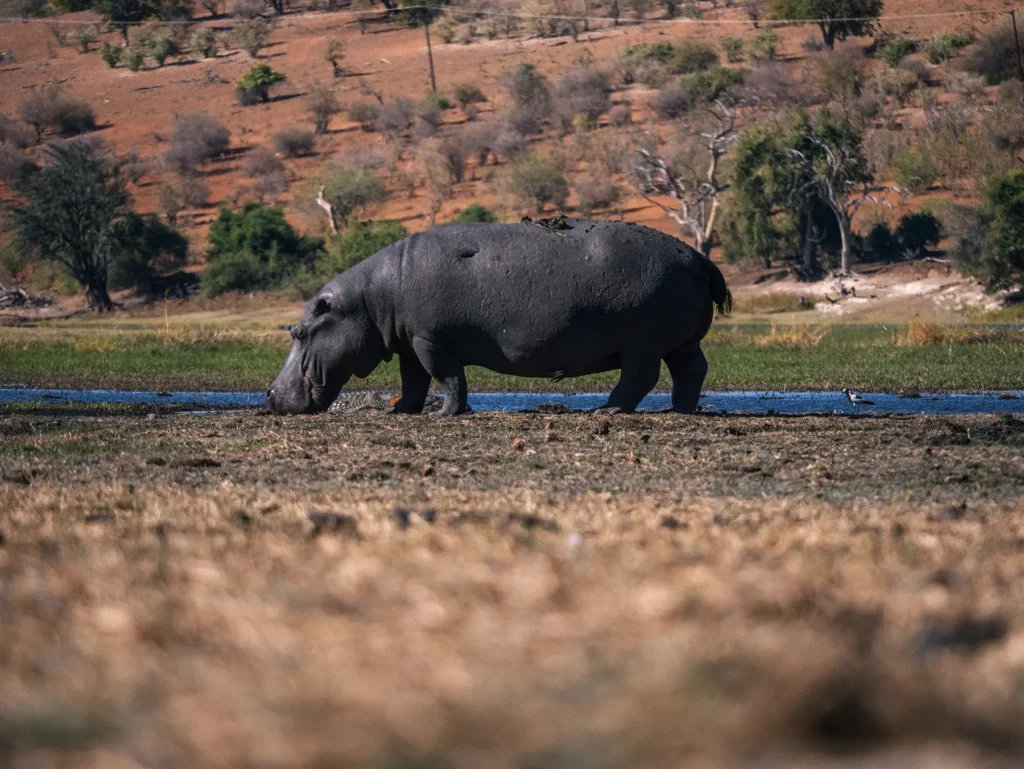
We also saw water monitor lizards, hippos and even witnessed a family of elephants cross the river in front of us. That was the cherry on top of a beautiful boat cruise!
It was pretty warm on the water so I wore some shorts and a vest top but made sure to lather myself in high factor sunscreen to protect me from the sun.
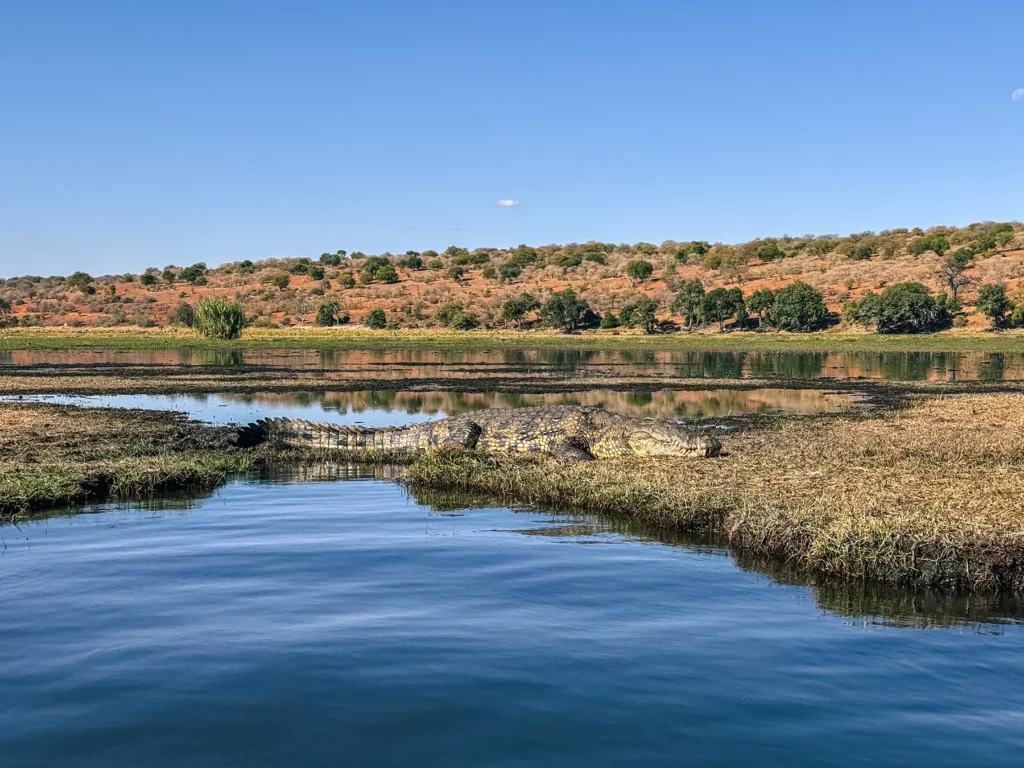
Optional Bonus Day 11: Victoria Falls (Zimbabwe)
Total drive time (excluding game drives): 1 hour drive
Kasane is the gateway to Victoria Falls from Botswana, so if you like, you can add on an extra day and take in this famous sight. You’ll need to cross into Zimbabwe and there will be an option to pop into Zambia too. The good news is that it’s a relatively easy and straightforward experience!
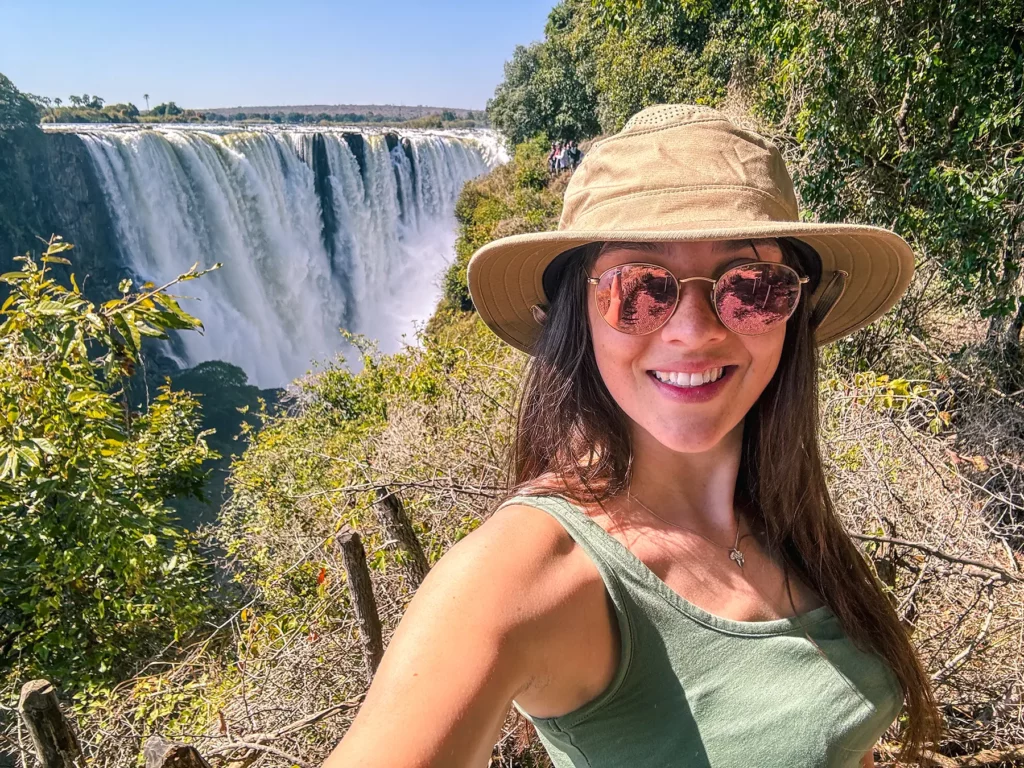
Itinerary
After breakfast at your lodge in Kasane, you’ll drive over to Victoria Falls in Zimbabwe. The trip is around an hour, depending on how long the border crossing takes. It’s a good idea to arrive early at the border to avoid the long queues which can build up throughout the day.
You will need to pay for a visa on arrival, which is US $30 – $55 for single entry depending on your nationality. If you want to view Victoria Falls from the Zambian side too, mention this at the border as you’ll need to be able to re-enter Zimbabwe after seeing the falls in Zambia. There’s a special Kaza Univisa that costs US$50 and allows multiple entries between Zimbabwe and Zambia over a period of up to 30 days. Be prepared to pay cash for your visa as the card machine wasn’t working when I visited.
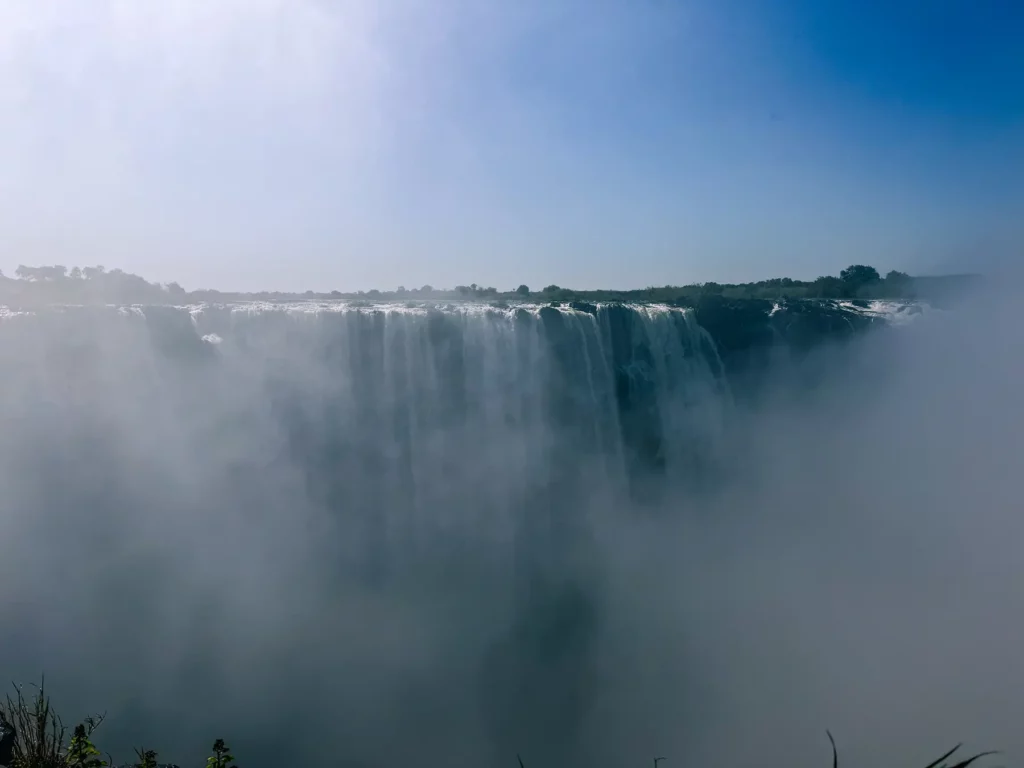
The border is only 10 minutes from Kasane and once you’re through, it’s an easy 50 minute drive to Victoria Falls. Most of the drive takes you through scenic mopane woodland and you may even spot some animals on your way. I saw several elephants at the side of the road.
There’s ample parking at Victoria Falls and entry to view the falls is USD $50 per person. Card payments are accepted. It then takes around 3 hours to view Victoria Falls from the Zimbabwean side which is the most spectacular side. There are 16 different viewpoints and each one is more impressive than the last. The last viewpoint can get pretty wet so make sure to bring some rain coats!
After that, you can cross the bridge into Zambia, pass through immigration, and then admire the cascades from a different angle. You should allow 3 hours for this side too.
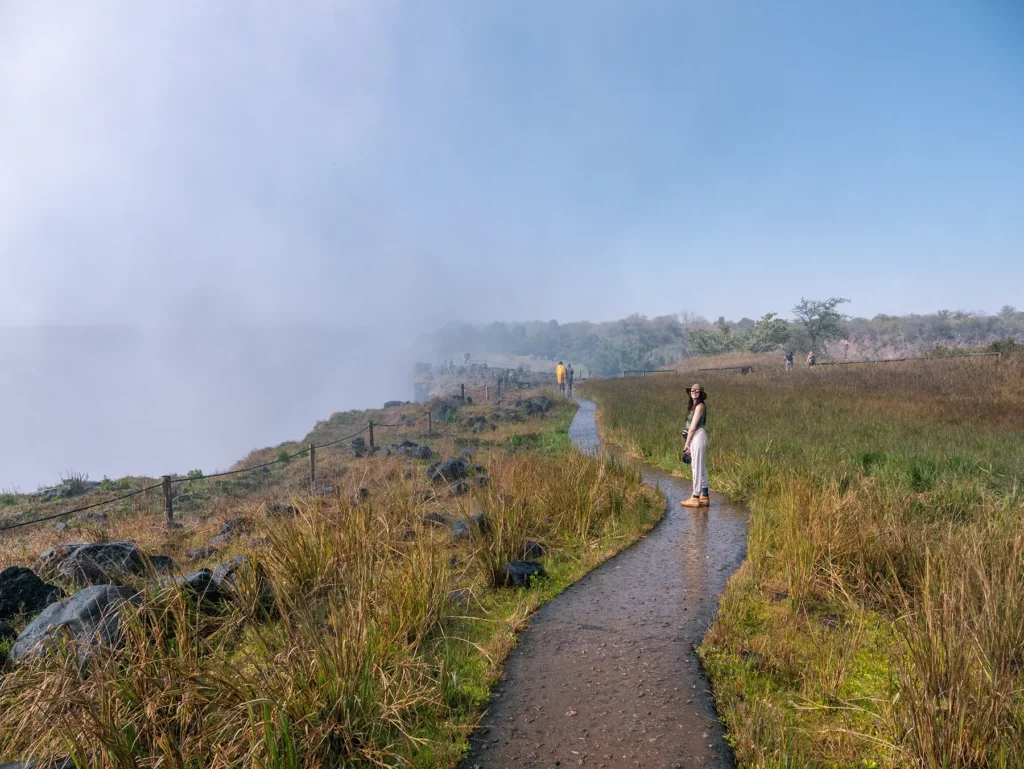
The famous Devil’s Pool is over on the Zambian side, where courageous travellers can swim right up to the edge of the falls. Just bear in mind that the pool is usually only open between mid-August and mid-January, depending on the water levels. Many people combine a stop at Devil’s Pool with a boat trip to Livingstone Island, which is right in the centre of the river.
If you have time, other activities are available at the falls, including scenic helicopter rides, microlight flights, boating, rafting, and even bungee jumping. These will need to be pre-booked.
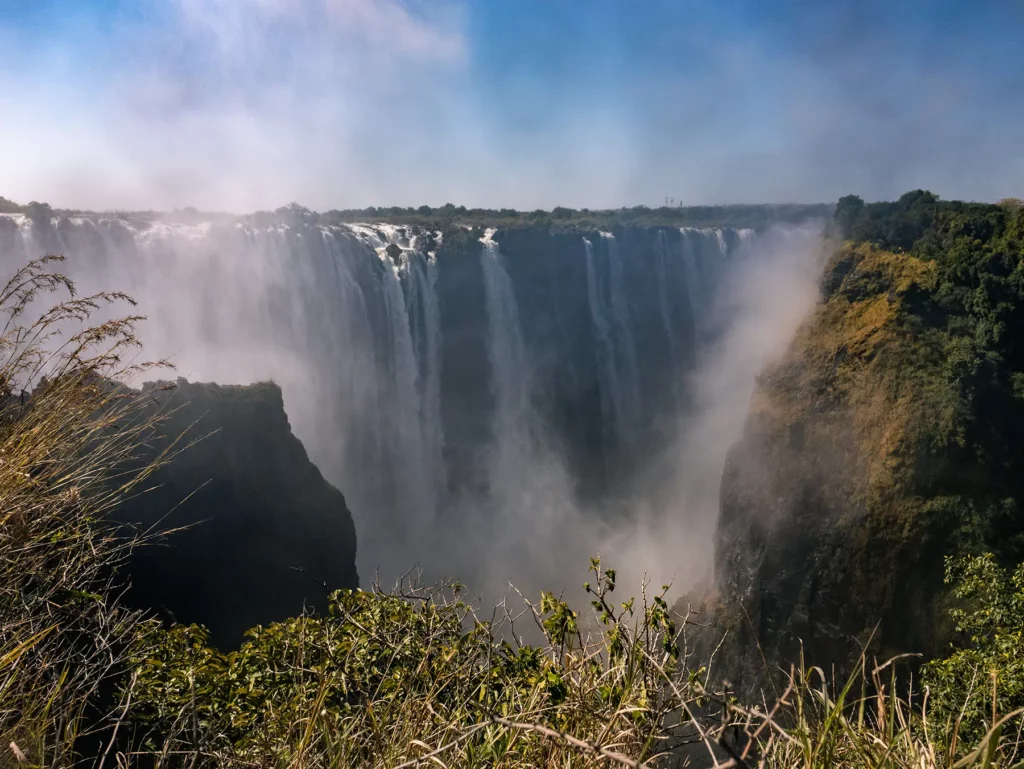
About Victoria Falls
Victoria Falls sits on the border between Zimbabwe and Zambia and is often added onto the end of a Botswana safari thanks to easy travel logistics. It’s a magnificent natural sight, with the mighty Zambezi River plunging dramatically into the gorge.
Victoria Falls has been named as one of the Seven Natural Wonders of the World. The falls are around 1,708 metres wide and 108 metres high, making them one of the largest cataracts on earth.
The traditional local name for the falls is ‘Mosi-oa-Tunya’, which translates as ‘The Smoke that Thunders’. On a calm day, you can hear the roar of the water from 25 miles away. It was only when explorer David Livingstone arrived in 1855 that the place became known as ‘Victoria Falls’, named after the British queen.
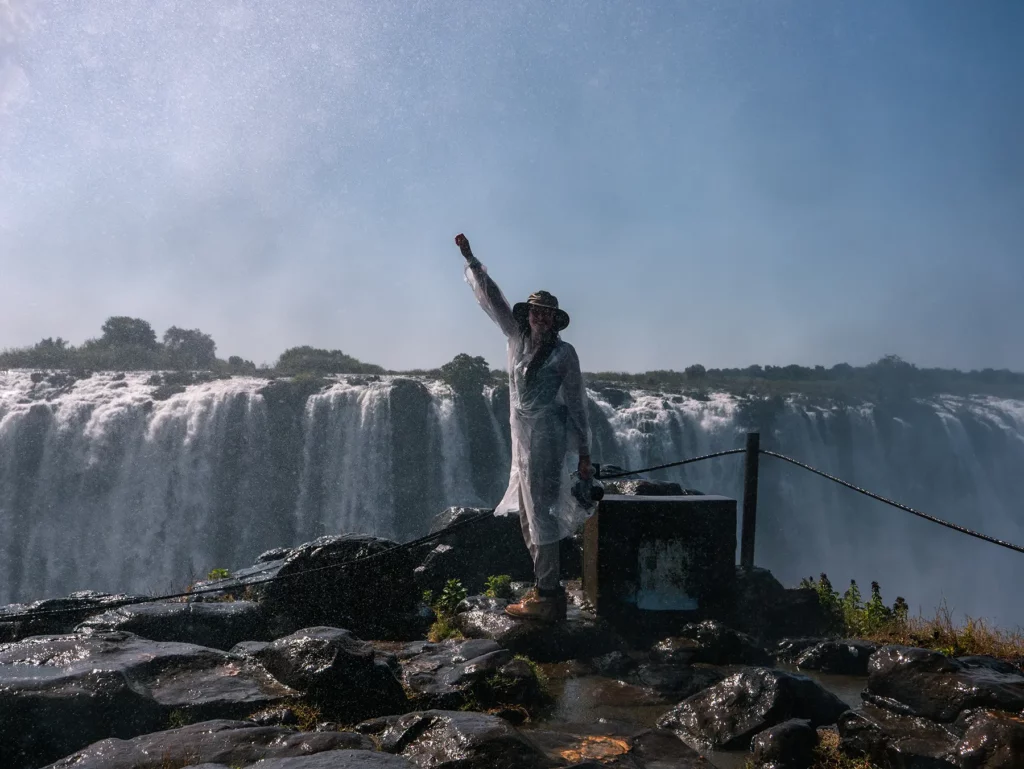
You can experience Victoria Falls from several angles, on both the Zimbabwean and Zambian sides of the gorge. Some of the best views are from Zimbabwe, where you can walk along the gorge to scenic overlooks. From here, you can see some of the most famous sections of the falls, including the Devil’s Cataract, Rainbow Falls and Horseshoe Falls.
Meanwhile, over in Zambia, you can brave a stroll across Knife Edge Bridge to see the Eastern Cataract, which is one of the deepest sections of the falls. Here, you’ll get very close to the water to experience the spray. This is particularly dramatic during the high water period between February and July.
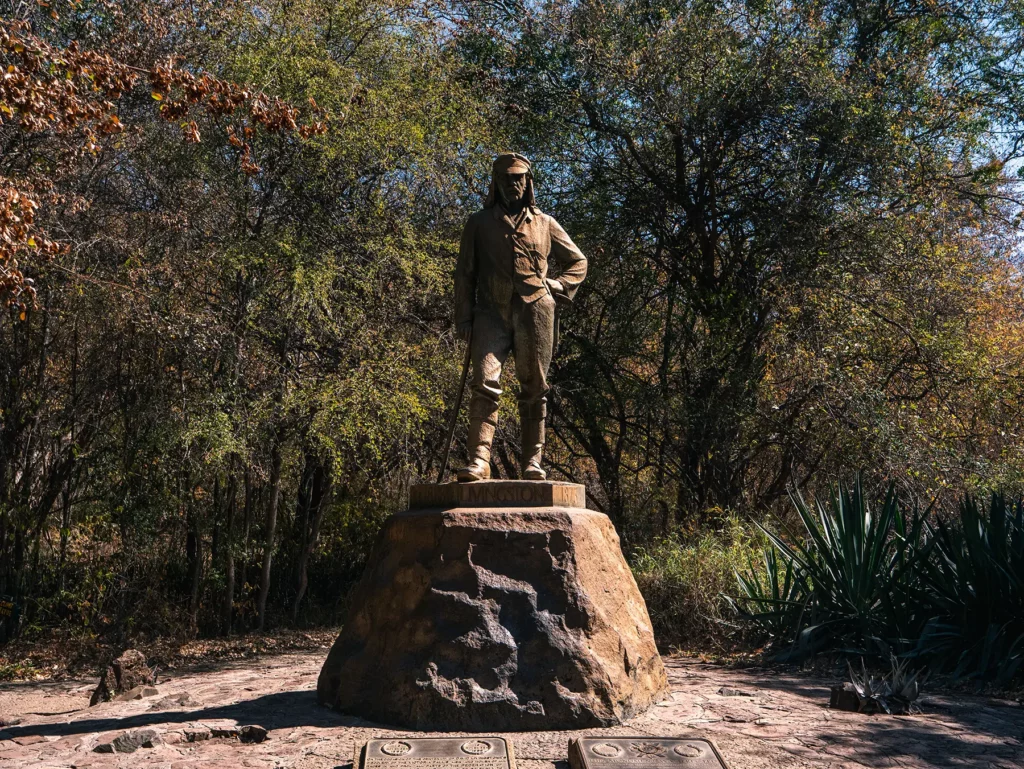
Where to Spend the Night
You can spend the night in Zimbabwe’s Victoria Falls town, or if you prefer to stop over in Zambia, Livingstone is the best place.
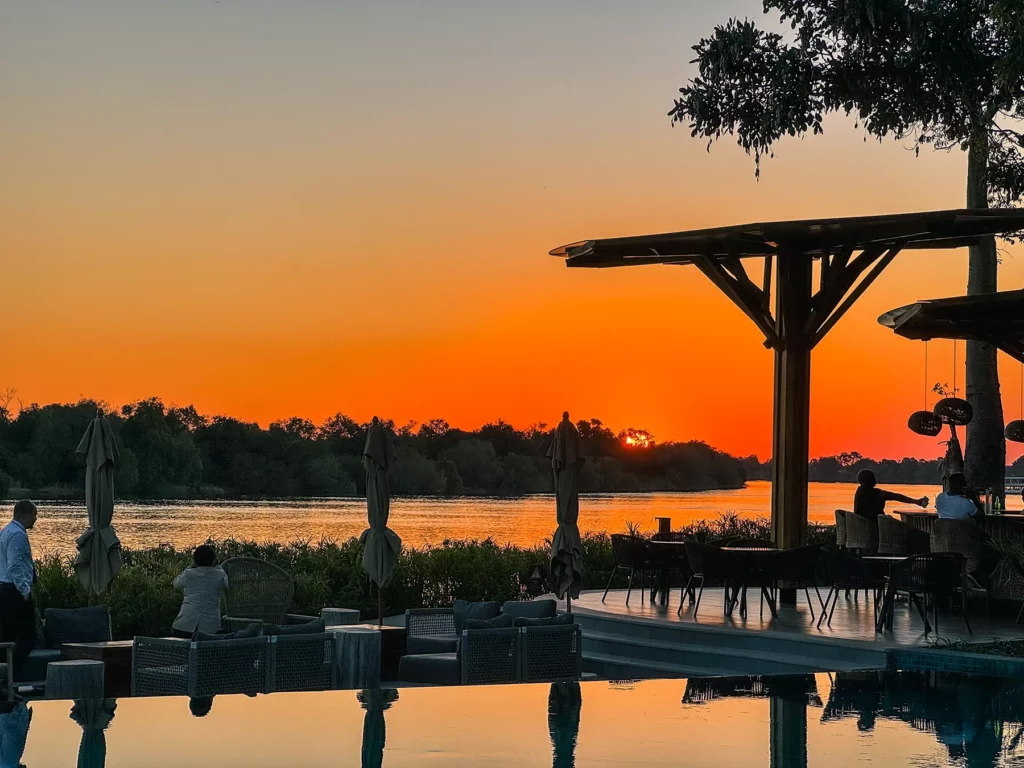
Alternatively, you can fly home in the evening, whether that’s from Victoria Falls or Livingstone Airport, or back across the border in Botswana.
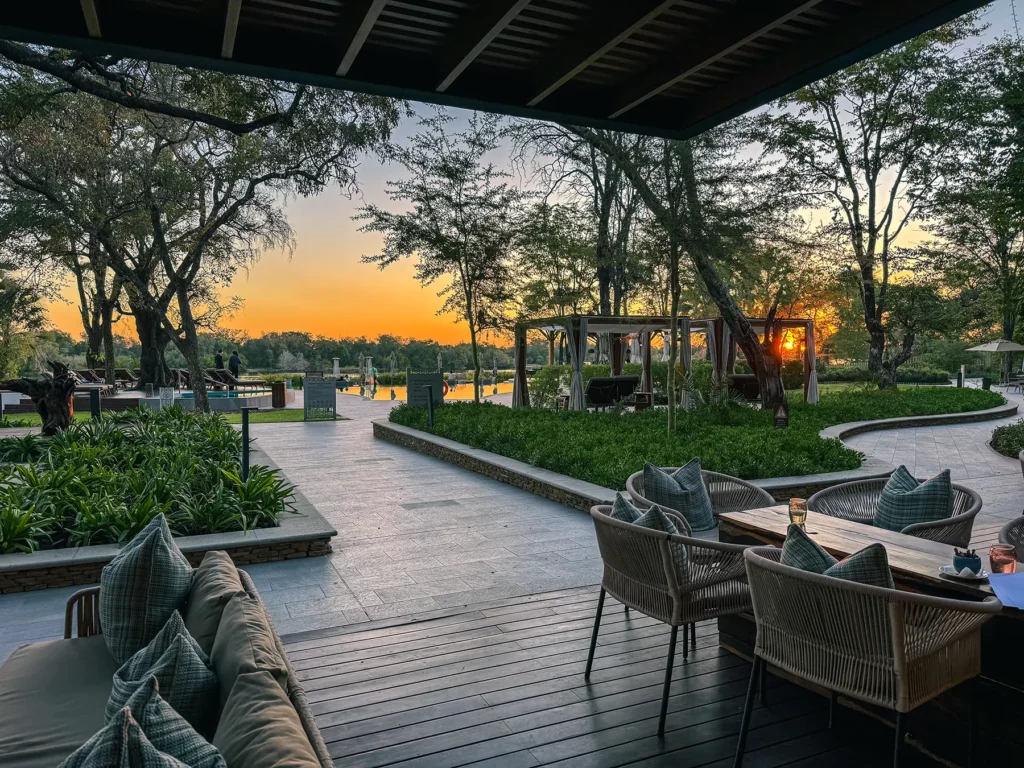
Tips for Visiting Victoria Falls
Pack a light raincoat or poncho if you’re going to be walking along the edge of the gorge. The spray can make you pretty wet, especially if you’re visiting when the falls are in full flow. You’ll want a jacket on boat trips too if you want to stay dry.
Wear comfortable hiking shoes as you’ll be walking along several trails, some of which may be wet and slippery. Sunscreen and hats are a must too as the heat here can be quite intense.
The best time to visit Victoria Falls is between April and May or August and November when the water flow is high, and the falls are at their most impressive. This coincides nicely with ideal safari conditions too.
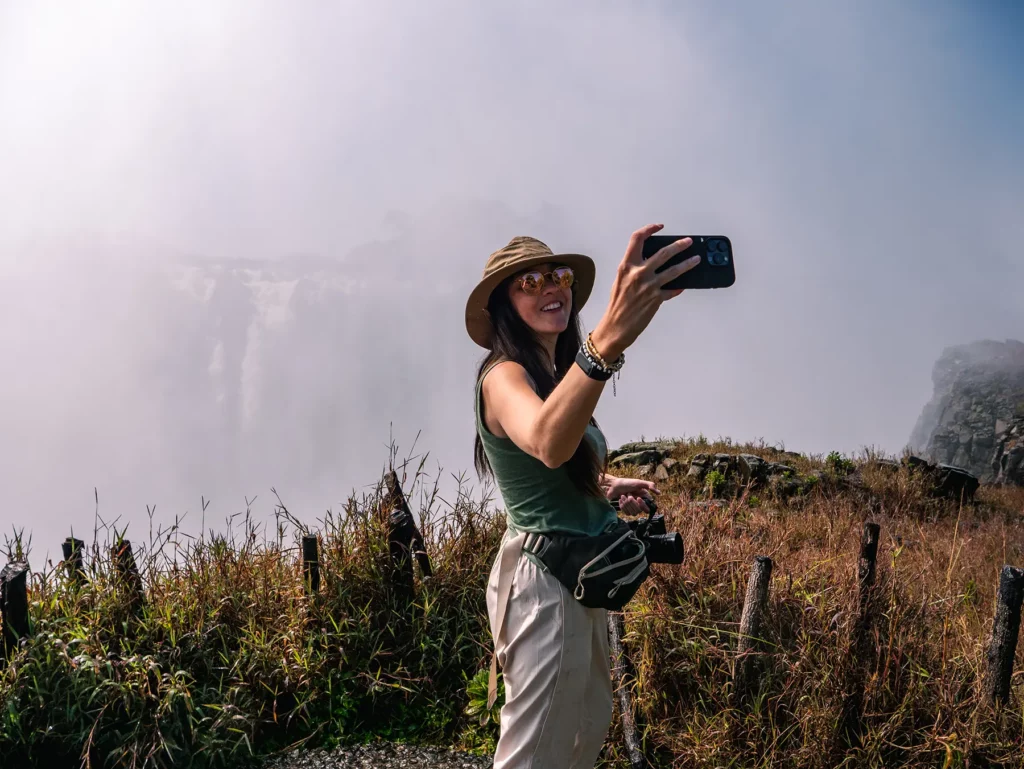
While it’s great to visit both sides of the falls to appreciate them from all angles, don’t worry if you can’t fit in a trip over to Zambia. The views from the Zimbabwe side are impressive enough so you won’t feel like you’re missing out. Sometimes it’s better to spend longer in one place than to rush around trying to see everything in just a few hours.
Victoria Falls is a popular place, so make sure you book your accommodation well in advance if you’re staying overnight. This can be arranged through your tour operator if you prefer.
My Experience Visiting Victoria Falls
I couldn’t visit Kasane in Botswana and not visit Victoria Falls! And so I gleefully added it to the end of my three week trip to Botswana and booked a couple of nights in Livingstone, Zambia afterwards.
I perhaps didn’t do as much research as I should have and so at this point didn’t realise that Zimbabwe was the best place to see the falls from and logistically you have to cross from Botswana to Zimbabwe rather than Botswana to Zambia. The border between Botswana and Zambia is apparently a nightmare to cross with extremely long wait times.
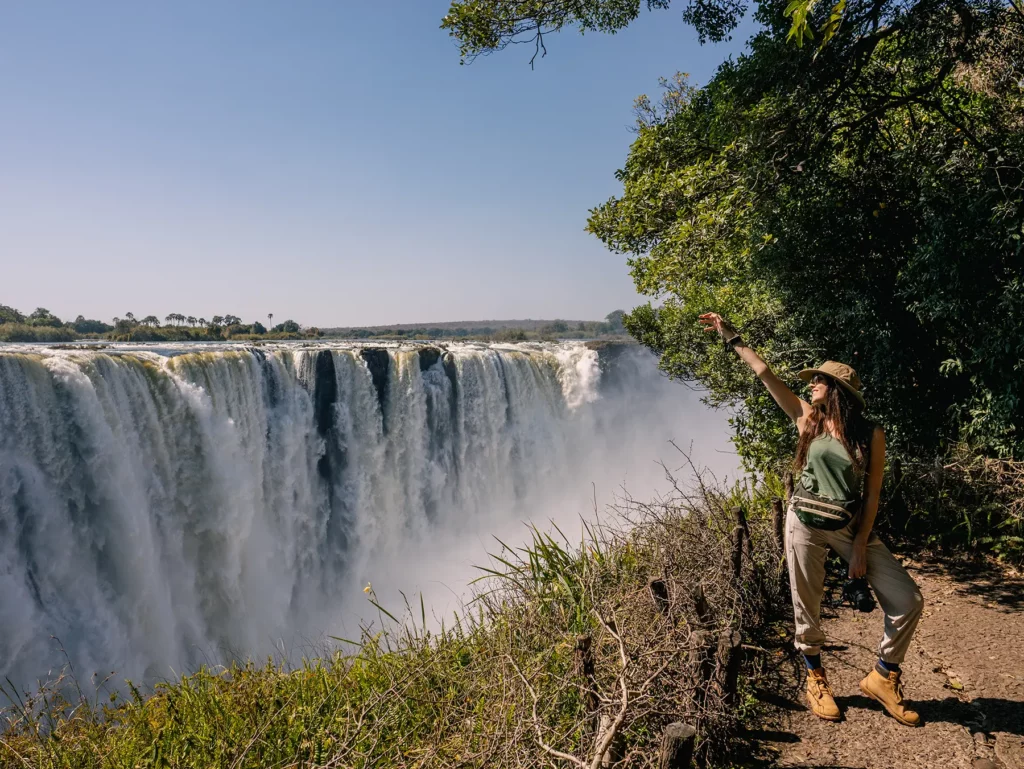
My tour operator informed me that we’d be visiting the falls from the Zimbabwe side which would mean purchasing a visa on arrival at the Botswana – Zimbabwe border.
I was a little apprehensive about the border crossing as I tend to always purchase visas in advance. However, I needn’t have worried as it was one of the simplest African border crossings that I’ve had. Stamping out of Botswana was super easy and then getting a visa in Zimbabwe was also straightforward.
The queue was a little longer than I’d have liked as I’d arrived just after an overlanding vehicle of 20 guests (and this is why I’d recommend that you get to the border early as queues do build up) but it was still over in less than an hour.
The only complication was that I had to pay cash for my visa as although they supposedly accept card payments, today they decided they weren’t.
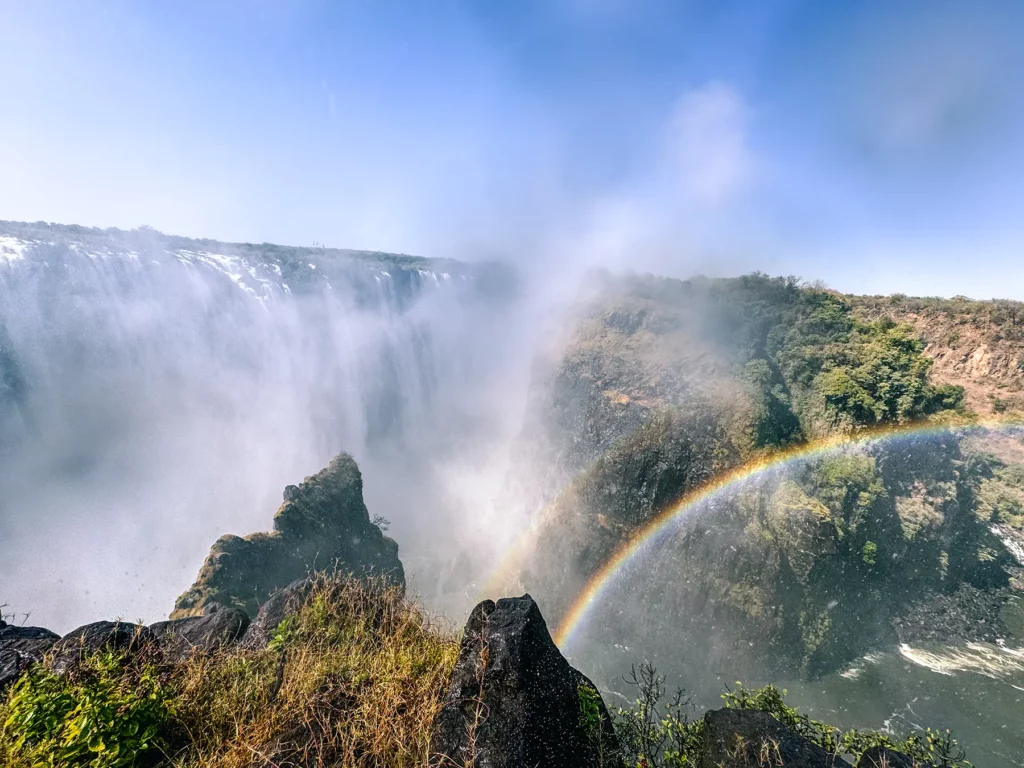
The drive between the border and Victoria Falls is extremely straightforward and I stared out the window admiring the natural wilderness that sped by, including a family of elephants.
We then drove through the town of Victoria Falls which looked extremely charming. Had I not booked to spend the night in Livingstone, I would have loved to have spent more time here.
My tour operator pulled up in a large car park opposite the national park and I wandered down to the entrance gate. I booked the excursion through a tour operator to get the transfer to the falls but didn’t book to have a guide with me on the tour and honestly, it really isn’t necessary to have one as there are notice boards everywhere with information about the falls.
The entrance fee was $50 and thankfully they did accept card payments here!
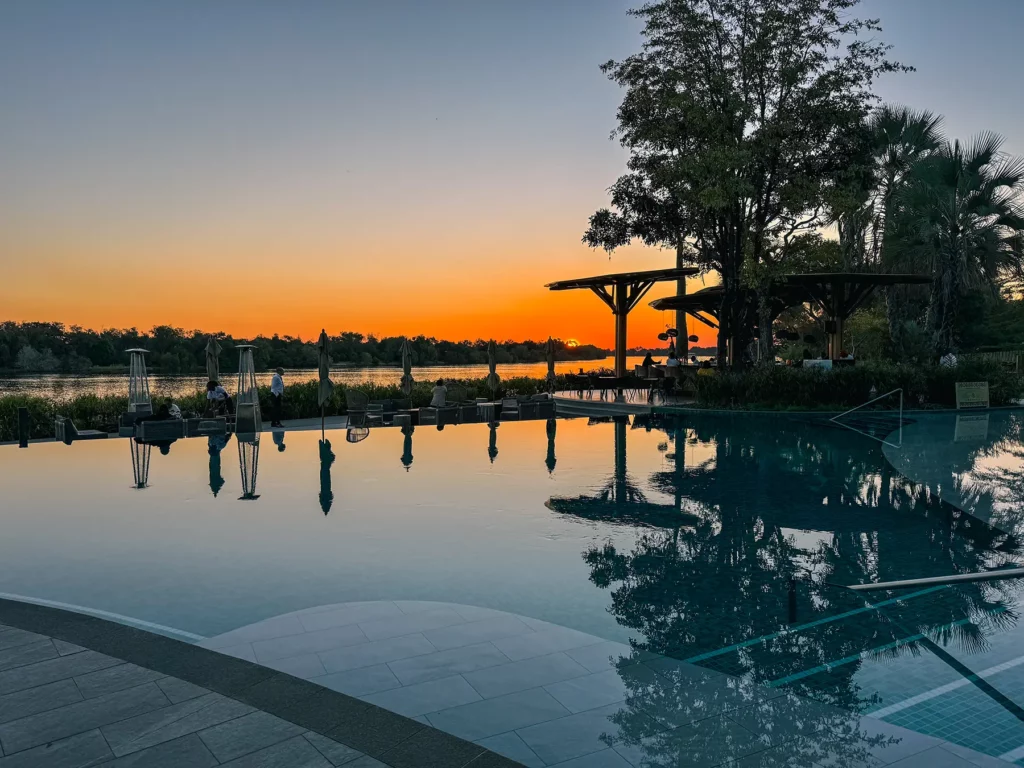
The walk takes around 3 hours if you stop at every viewpoint and really soak it all up – which is exactly what I did. Each viewpoint is more magnificent than the previous one and honestly, words can’t describe the experience of seeing Victoria Falls for the first time. It’s something you just have to experience for yourself!
My biggest regret was not putting my poncho on sooner. At around viewpoint 13 things start to get wet and by the time you’ve reached viewpoint 14, you’ll be soaking unless you’ve put a poncho on. I felt like I was underneath a shower! If you have a DSLR camera with you, make sure you buy a waterproof bag for it as the spray is seriously no joke. It was at this point that I was scrambling to put my poncho on and put my camera in its bag. I’m sure I would have been much more comfortable and not feel like a drowned rat had I done this sooner!
After viewing the falls from every viewpoint on the Zimbabwean side, I then crossed the border into Zambia. However, I opted not to see the falls from this side as I was pretty tired. It’s another 3 hour walk if you want to see the falls from this side and a $20 entrance fee.
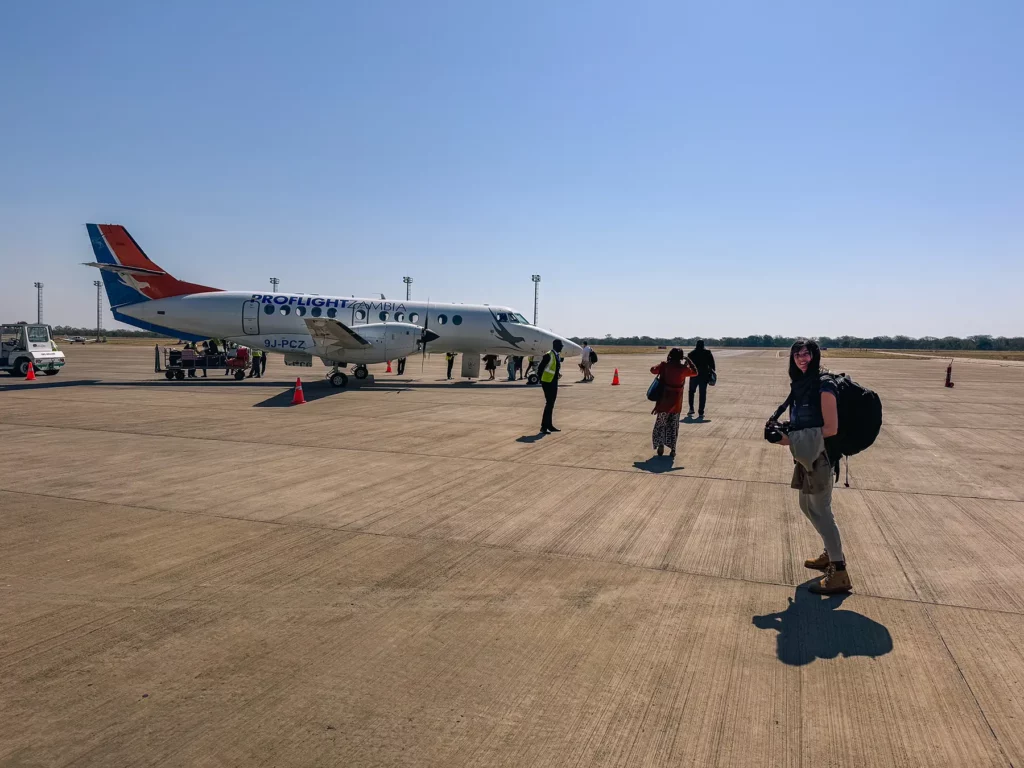
Final Thoughts
Botswana is one of the best safari destinations on the planet! Whilst it certainly doesn’t come cheap, the quietness really makes it feel special and it was extremely refreshing having most of my favourite sightings all to myself with no engine sounds or loud voices in the background, spoiling the ambiance.
If you’re thinking of going on safari in Botswana yourself, 10 days is in my opinion a great length of time. Ten days is the perfect amount of time to see some of the best safari destinations in Botswana without feeling rushed. You’ll spend long enough in each location to get a real feel for the place, before moving on to the next adventure. You certainly have the opportunity to see some incredible wildlife sightings in this time!
I don’t think it’s possible to spend too much time in Botswana which is why, if you have the time, I’d actually recommend staying for longer. Consider taking a 2-week Botswana safari if you have longer to play with and want to visit a few more destinations.
Recommended Booking Options For Your 10-Day Botswana Safari Itinerary Itinerary
Safari with local tour operator
Most popular & best experience – typical prices for this itinerary start from $400 per person per day.
Visit safarisbyella.com for free quotes from trustworthy local tour companies I use to book my own trips.

Read More Botswana Guides
Botswana Itineraries
Recomended itineraries and how to book them.
5-Day Botswana Safari Itineraries & Costs
7-Day Botswana Safari Itineraries & Costs
10-Day Botswana Safari Itinerary & Costs
3-Week Botswana Safari Itinerary & Costs
Costs & Planning
How to get the most bang for your buck and the best time of year to visit depending on what you want to do and see.
Botswana Safari Cost – Everything You Need to Know!
National Parks & Reserves
Complete guides to the best and most famous safari reserves, including the wildlife you’ll see, entrance costs and best time to visit.
Coming soon.
Other Popular Safari Destinations
How to Book Your Safari
Save time and ensure an incredible safari experience by getting quotes from my recommended local safari companies.
Join the rapidly growing tribe of over 1,000 travellers who’ve booked their dream safari using my insider tips and recommendations.

Hello i would like a 12 day itinerary for zambia and botswana and zimbabwe